We all know the wedding is a great celebration of everyone’s life and it is a joyous moment. But what most of us don’t know are our rituals and what do they mean. We won’t look into it deeply until we are in the situation of getting married. If you are reading this, you may be soon getting hitched or related to such a situation. Here is a complete guide to Telugu Hindu wedding rituals that explained in detail with pictures. We recommend you to read before your wedding.
Telugu Hindu weddings are the most interesting ones, to give you an idea, in the 19th century; the ceremony could last up to sixteen days. Yes, I’m telling again it’s “sixteen days”. Since we all know the wedding is a joyous moment, think what will be like when this joyous moment lasts for sixteen days! But now we are celebrating it for about 2 to 3 days. Depends on the caste of the bride and groom the wedding ceremonies differs.
Among all the social bonds, the Telugu Hindu Wedding Rituals is considered as the strongest one. It is to spiritually merge two souls opening the doors to household life called as Gruhastaashramam. So people in Andhra Pradesh and Telangana consider this ceremony as the most important one.
Bride and Groom should oath the seven pledges and should complete seven revolutions around a sacred fire. Also, Telugu Hindu Wedding Rituals are set to ensure that the bride and groom are united in the presence of five essential elements of life (Panchabutaalu) which are earth, sky, fire, water, and air.
In olden days, the groom would ride an elephant to the bride’s home. The wedding would take place in the bride’s home. This is generally called as Gajaarohana. Now most of us are not following this tradition.
We are sure that if you read this entire article, you will enjoy your wedding ceremony without any confusion.
Pre Wedding Rituals
వివాహమునకు మునుపటి కార్యక్రమములు
-
Nischitartham (Engagement) | నిశ్చితార్థము – Telugu Hindu Wedding Rituals
This ceremony is performed to officially declare that the Groom and Bride are going to be married. An auspicious date and time (muhurtham) for the wedding is decided. This can be done by referring to the horoscopes. Bride’s future mother-in-law will formally end the engagement by presenting clothes, gold, and Silverware.
-
Pellikuthuru Pelli Kodukuni Cheyuta | పెండ్లికొడుకు మరియు పెండ్లికూతురుని చేయుట – Telugu Hindu Wedding Rituals
It will be a delight to see all the relatives and well-wishers in one place. They smear the bride and groom with Nalugu. Nalugu is a mixture of flours, turmeric powder, and oils. Bride’s and Groom’s family give a new set of clothes to their close relatives. On receiving, they shower blessings for the event.
-
Snatakam | స్నాతకం – Telugu Hindu Wedding Rituals
In olden days, Brahmin boys were made to wear sacred threads. And they were sent away to sages. This is to learn the scriptures.
When they return they had to perform the Snatakam. It Signified that their education is ended. So that they can take on other responsibilities like starting a family.
In these days, the ritual signifies that the groom is ready for marriage by wearing a silver thread.
-
Kasi Yatra | కాశీ యాత్ర – Telugu Hindu Wedding Rituals
Now we know that Snatakam makes the groom ready for marriage. But it is his wish to pursue the marriage or going to kashi and study further to become sanyasi.
Now, as a pre-wedding ceremony, the groom pretends to go to Kashi and says that he has discarded the worldly pleasures such as marriage, relations and properties and he is no longer concerned on leading a family life.
Bride’s brother (cousin) then stop him and coax him to assume the responsibility of a household and they tease each other quite a lot until the groom readily agrees to do it in the end.
Telugu Hindu Wedding Rituals
తెలుగువారి వివాహ సంప్రదాయాలు
Telugu wedding rituals are different from all other south Indian weddings. Unlike other south Indian weddings, it does not take place in the morning, but close to midnight.
Some people including the bride’s maternal uncle and her brother play a prominent role at the time of her wedding.
-
Mangala Snanam | మంగళ స్నానము
Mangala Snanam can be literally translated as “Auspicious Bath”. On the day of the wedding, it takes place at the bride’s and groom’s houses separately.
The bride and groom must take a Mangala Snanam on their D-day of the wedding.
The bath is believed to cleanse and purify them. It makes them ready for the sacred rites that are to follow.
-
Aarthi or Harati | హారతి – Telugu Hindu Wedding Rituals
Before this ritual, oil is applied to the bride and groom. It takes place at their respective houses. Thenceforth, the family members get assemble to perform Aarti.
They pray for the bride and groom to be granted the wisdom to lead their lives happily.
-
Ganesha and Gowri Pooja | గణపతి మరియు గౌరీ పూజ – Telugu Hindu Wedding Rituals
Before the wedding ceremony, the groom attends the Ganesha and Gowri Pooja, which is conducted at the mandapam. And the bride does the Gauri Puja at the house with all her family members and relatives attending before going to the ceremony.
During this time, pravara a ritual of changing the Bride’s Gotram (clan) from her paternal gotram to that of the Groom is performed.
Elderly couples from both families are required and witness the Pravara while the bride is performing Gauri puja.
-
Kanyadanam | కన్యాదానము
Kanyadanam is the ceremony in which the girl’s family hands over their daughter’s responsibility to the groom. During this ceremony, the bride sits in a bamboo basket. Her maternal uncle brings her to the mandapam.
Up until the completion of the Kanyadanam, the bride and groom are not allowed to look at each other and are separated by a curtain that is placed between them, as a partition.
Thereafter the bride’s parents wash the groom’s feet, as a gesture of respect because on the day of the wedding, the bridegroom is considered as “Lord Vishnu Svarupam” or the incarnation of lord Vishnu who has come to marry their daughter who is considered as “Devi Lakshmi”.
The groom is made to chant “Dharmeca Artheca Kamecha Moksheca Nati Carami” three times and assure the bride’s father three times that he will remain her companion in joy and sorrow forever.
-
Panigrahanam | పాణిగ్రహణము
Panigraham means “holding hands”. The groom holds the hand of the bride.
The mantras are spoken: “The Devas have offered you to me permitting that I may live the life of a householder (Gruhasta); we shall not part from each other”.
-
Jilakarra Bellam and Maadhuparkam | జిలకర బెల్లం , మధుపర్కం
The priest hymn some slokas from the Vedas. Thenceforth they will give the paste made from Jaggery and cumin seeds to bride and groom and ask them to place the paste on each other’s head. This procedure is known as the Jilakaraa Bellam.
This express that the relationship of the couple is brass-bound and entwined. This ceremony should be done exactly at the marriage muhurtham time.
Once again, the Pravara i.e., changing of the bride’s gotram from here parental gotram to groom’s gothram happen on the mandapam in front of the groom and all the members attending the marriage.
From this time, the bride is no more belongs to her father’s gotram and belongs to the groom’s gotram.
As a part of the Madhuparkam ritual the bride wears the white saree with red border and the groom wears the white dhoti with a red border.
White symbolizes the purity and red represents the strength.
-
Sumangali | సుమంగలి పూజ
Ten married women (Sumangali) accompany the bride. Six of the ten women hold plates containing sacred rice. This sacred rice is a mixture of rice and turmeric powder.While the rest of them hold small lit lamps on their respective plates.
Rice represents abundance, while the lit lamps symbolize light.
-
Mangalasutra Dharana | మంగళసూత్ర ధారణ
Mangalasutra Dharana means tying Mangalasutram. Mangalasutram is the holy thread. To perform the ritual, the partition between the bride and groom is removed. Then the groom ties the two strings of Mangalasutram, each with a golden disc, around the bride’s neck.
The Mangalasutram represents the physical, mental and spiritual union of the couple. In the Telugu wedding, the groom ties three knots of Manglasutram.
Know the meaning of Mandram
Mangalye
This mangal sutra (this sacred thread) (thanthu-thread)
Tantunanena
This mangal sutra (this sacred thread) (thanthu-thread)
Mama Jeevana
(For my long life)
Hetuna
Is essential (Hetu-reason, purpose)
Kante
(Around your neck)
Badhnami
(I am tying)
Subhage
(Oh, Maiden of many auspicious attributes)
Twam Jeeva
You (may you) live
Sarada Satam
(Happily for hundred years)
-
Akshitalu or Talambralu | తలంబ్రాలు ,అక్షతారోపణము
In the Akshitalu or Talambralu ceremony, the bride and groom exchange garlands.
Married people witnessing this occasion come forward to bless the couple, by sprinkling flower petals and rice coated with turmeric powder.
-
Saptapadi | సప్తపది
As a part of the Saptapadi rituals, the groom and bride walk seven steps together around the fire, while taking their oaths of caring, protecting, understanding, loving and guiding each other.
Only in a Telugu Brahmin marriage the pallu (which means the edge of the sari) of the bride’s sari is tied to one end of the groom’s Kanduva (scarf).
-
Sthalipakam | స్థాలీపాకము
Sthālīpākaṃ is a ritual wherein the groom adorns the feet of the bride with silver toe rings. It is also believed that the man bends to the woman in order to claim her as his.
Also, to restrain the evil eye, the bride is adorned by a string of black beads during the ceremony. These beads, along with the silver toe rings, symbolizing that she is a married woman.
After this, a decorated silver or terra-cotta vessel full of water is placed in front of the couple, and a ring is put in it. The groom puts his right hand in and the bride puts her left hand in and they fish for the ring.
They do this three times and whoever wins more often is supposed to be the dominant one in the marriage. This is a time of fun because water splashes everywhere and there are chants and shouts of support for both sides.
Also, the bride is made to cook (a namesake meal) on the sacred flame of the Agnihōtraṃ, symbolizing she is now responsible for taking care of the health of her husband and family.
-
Arundhati Nakshatram | అరుంధతీ నక్షత్రము
Arundhati Nakshatram is a ritual where the bride and groom are shown the stars representing Arundhati and Vasistha. These stars represent the perfect couple complimenting each other. Mizar and Alcor are two stars forming a double star that can be seen with the naked eye in the handle of the Big Dipper (or the Plough) asterism in the constellation of Ursa Major.
Mizar is the second star from the end of the Big Dipper’s handle, and Alcor its faint companion. Alcor is recognized as Arundhadi.
-
Appagintalu | అప్పగింతలు
Appagintalu takes place at the end of the wedding. This is when the bride is traditionally handed off to the groom and his family.
Post Telugu Hindu Wedding Rituals
తెలుగువారి వివాహము తరువాయి కార్యక్రమములు
-
Gruhapravesam | గృహప్రవేశము
After the culmination of the wedding ceremony, the bride is formally taken to the groom’s house. This is called Gr̥hapravēśam (gruhapravesam) of the bride. As she steps into her new home, she is welcomed by the groom’s family members, including his mother and closest relatives. The uniting of Maṅgaḷasūtraṃ (mangalsutra) takes place after a fortnight.
-
Satyanarayana Vratam | సత్యనారాయణ వ్రతము
Satyam means “truth” and Narayana means “the highest being” so Satyanārāyaṇa (satyanarayana) means “The highest being who is an embodiment of Truth”. The Satyanārāyaṇa Vratam is very popular in Andhra Pradesh India.
Satyanārāyaṇa Vratam is performed by bride and groom after Gr̥hapravēśam in the groom’s residence. The Satyanārāyaṇapūja / vratam can be performed on any day except on the new moon.
-
Uniting the Mangalasutram | పునర్మాంగల్య ధారణ (పదహారు దినాల పండుగ)
Gr̥uhapravēśam (gruhapravesam) is followed by a ceremony, wherein the Maṅgaḷasūtraṃ is united. As a customary, the Telugu speaking people unite the two Maṅgaḷasūtraṃs (which was tied by the groom around the bride’s neck) on a common thread.
This ritual is done sixteen days after the wedding. This ritual can be performed by either the groom or an elderly member of the family. A few black or golden beads are slipped between the two ‘plates’ of the Maṅgaḷasūtraṃ, so that they do not clash with each other. The unison of Maṅgaḷasūtraṃ signifies the harmony between the two families.
After the ceremony is over, the bride takes a bath and wears a new sari.
Checkout our instagram for recent pictures – https://www.instagram.com/focuzstudios/
Telugu Hindu Wedding Rituals Explained in detail with picture | తెలుగు హిందువులయొక్క వివాహ సాంప్రదాయాలు, చిత్రాలతో వివరణ
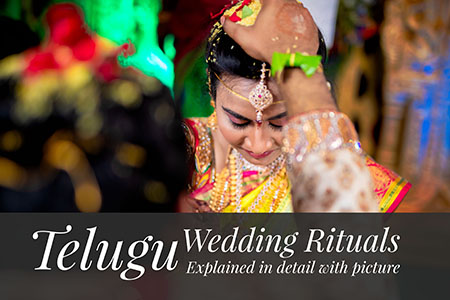
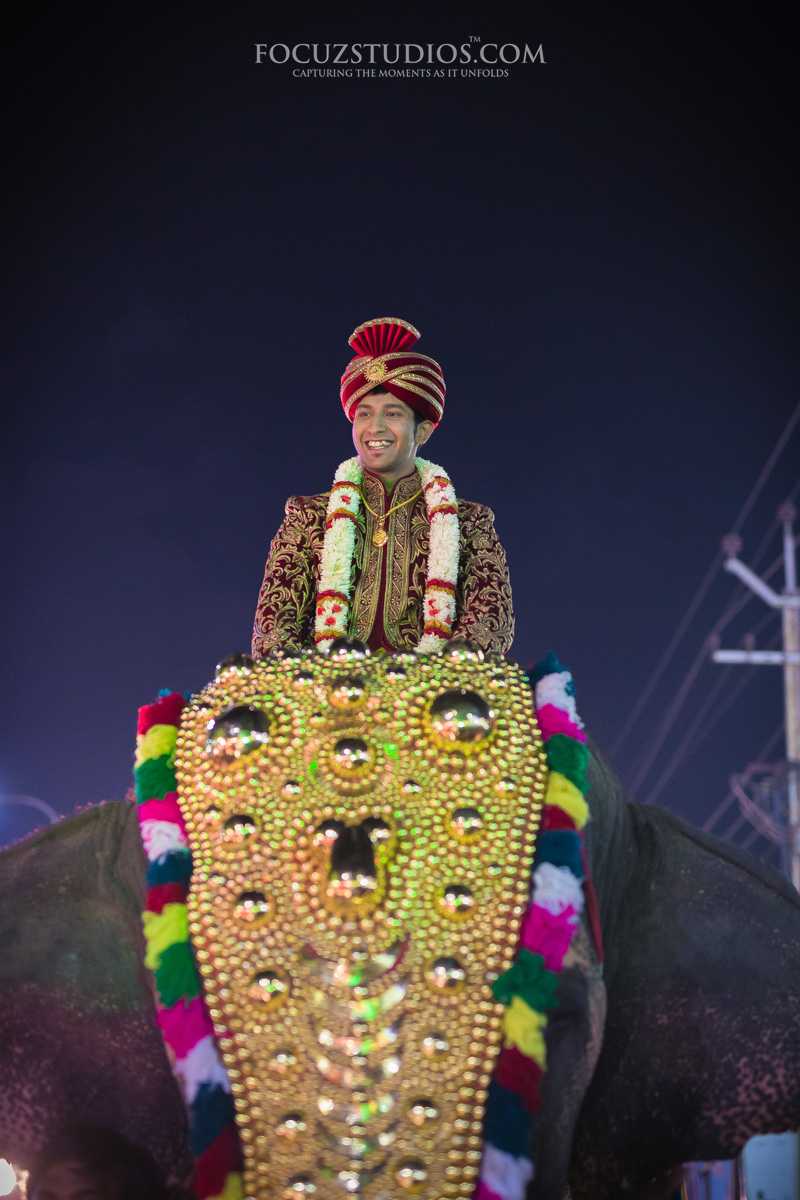
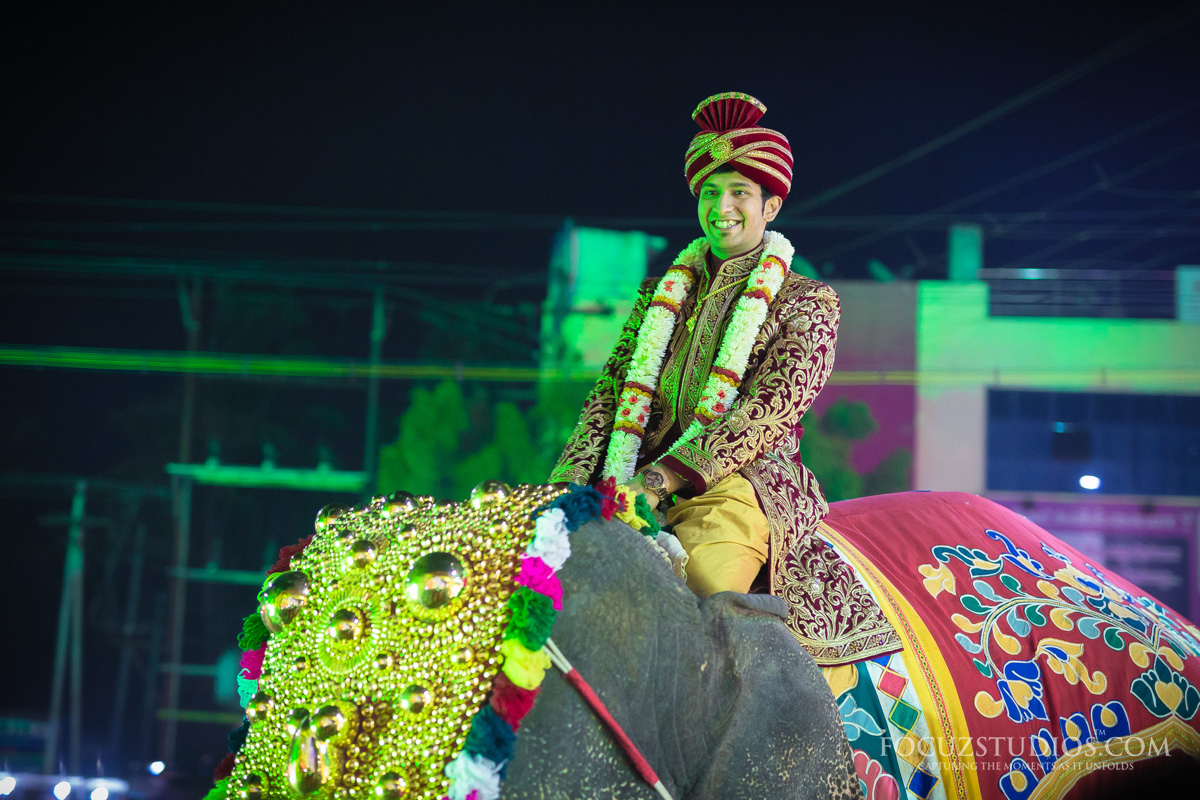
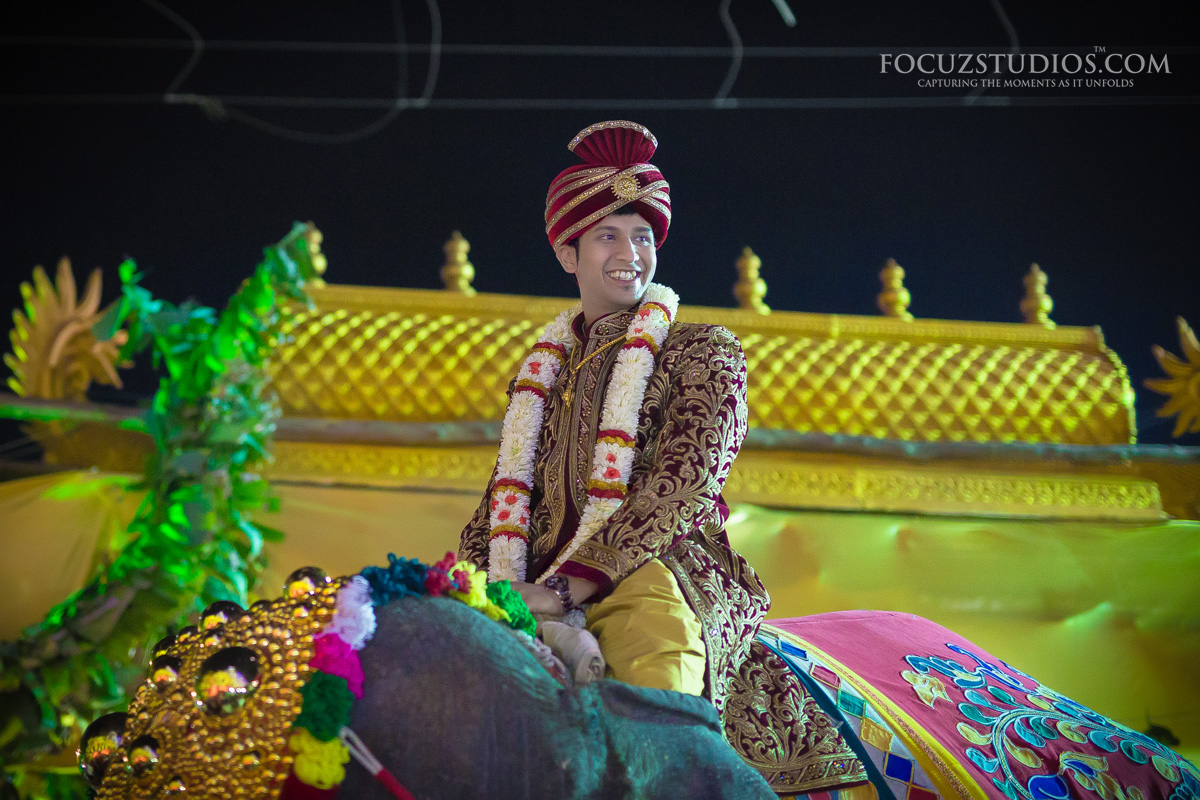
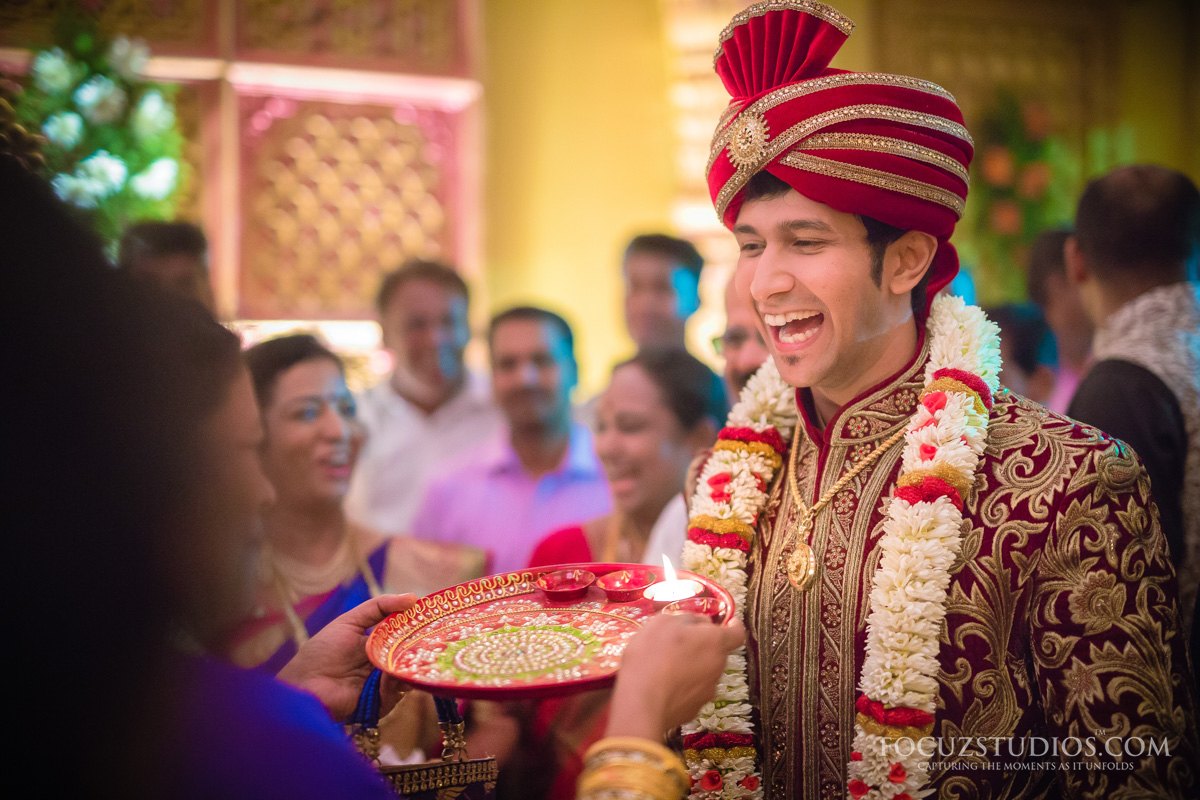
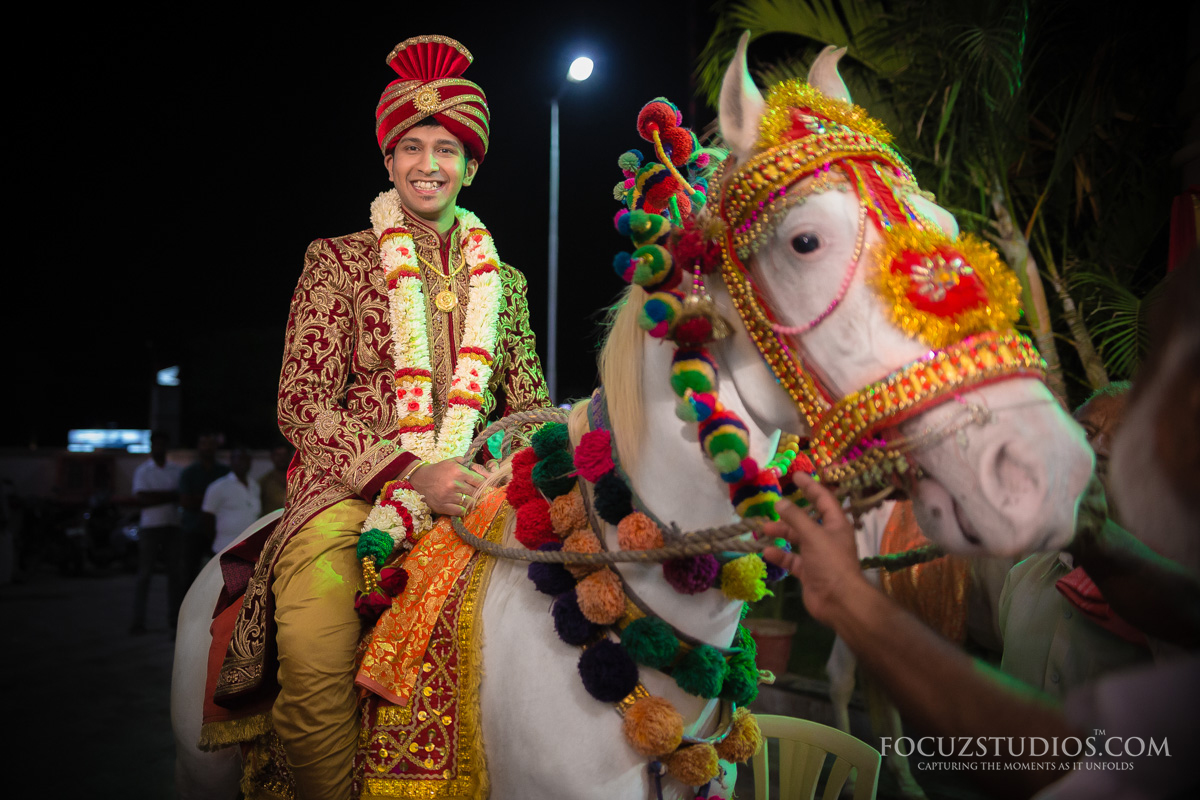
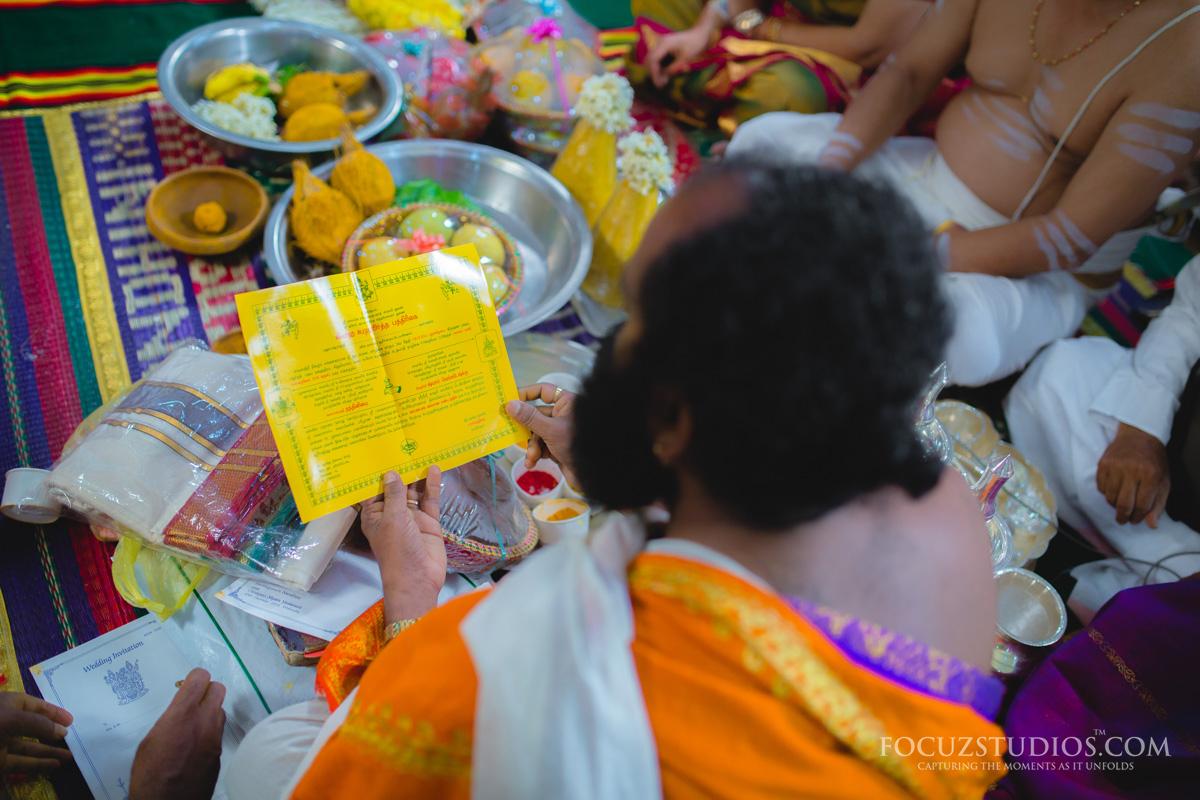

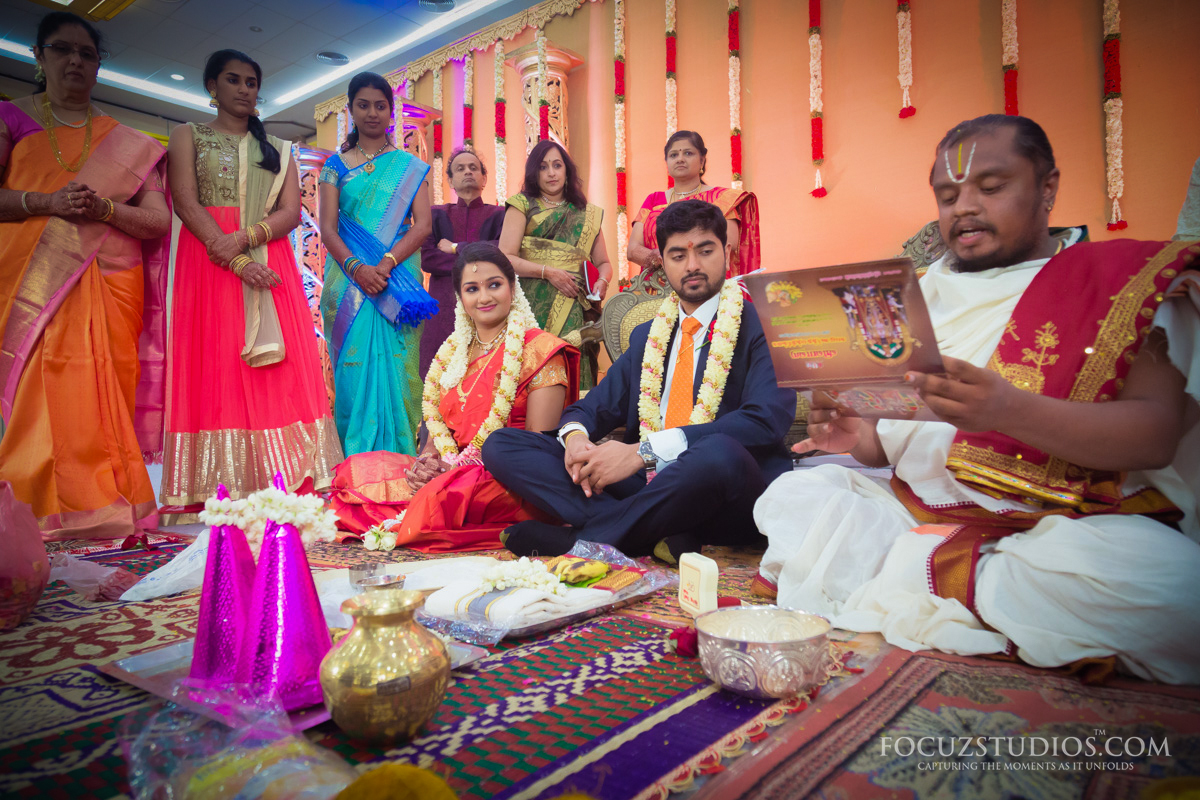
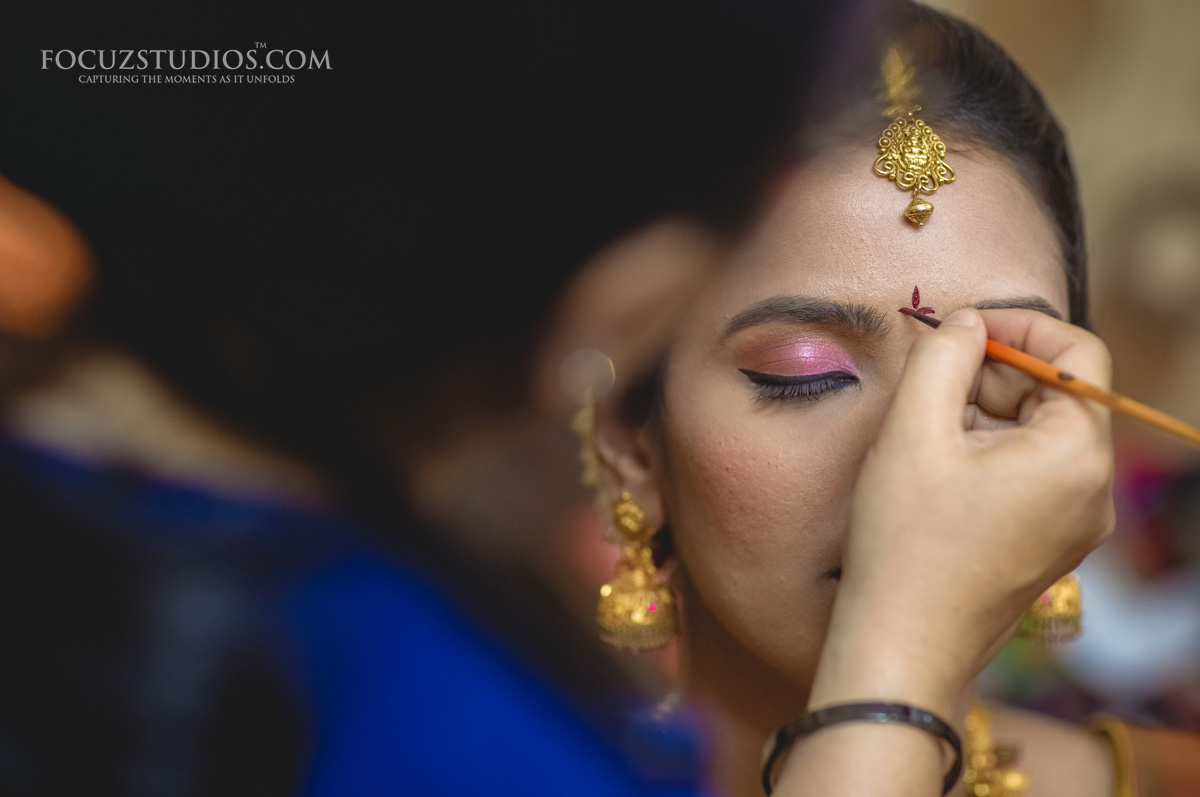
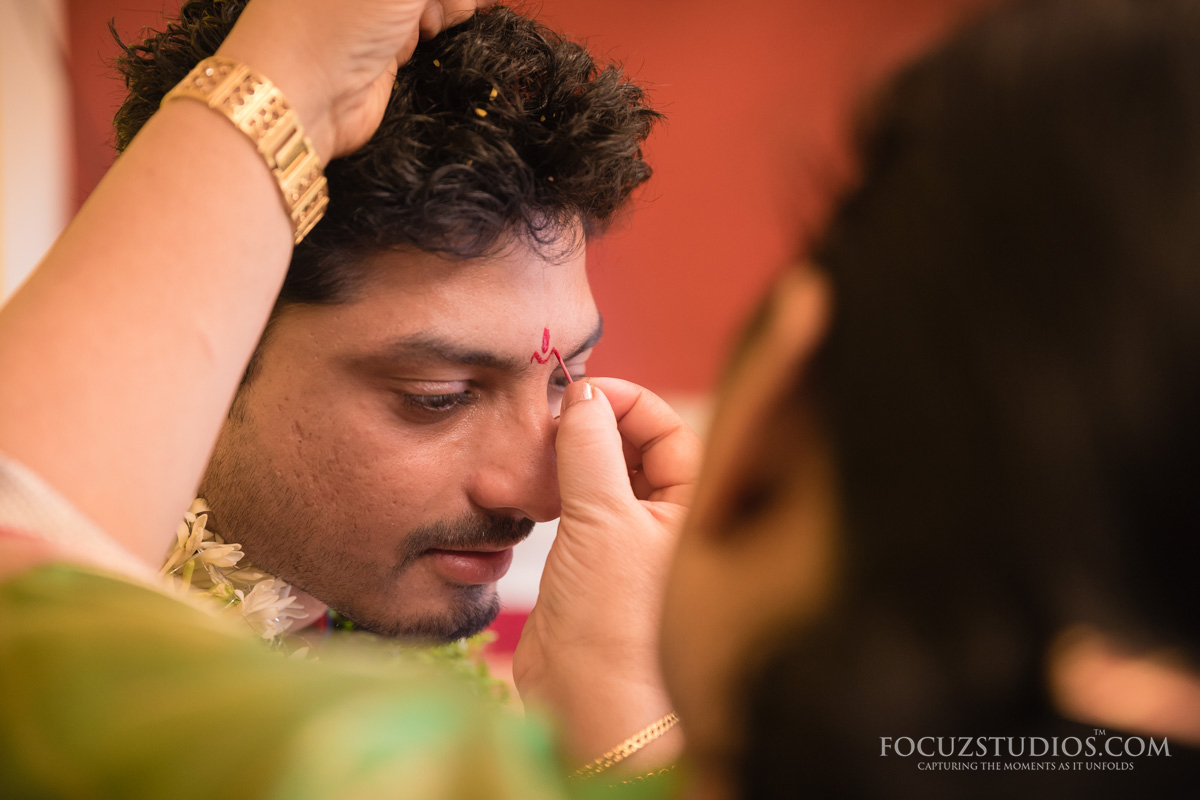
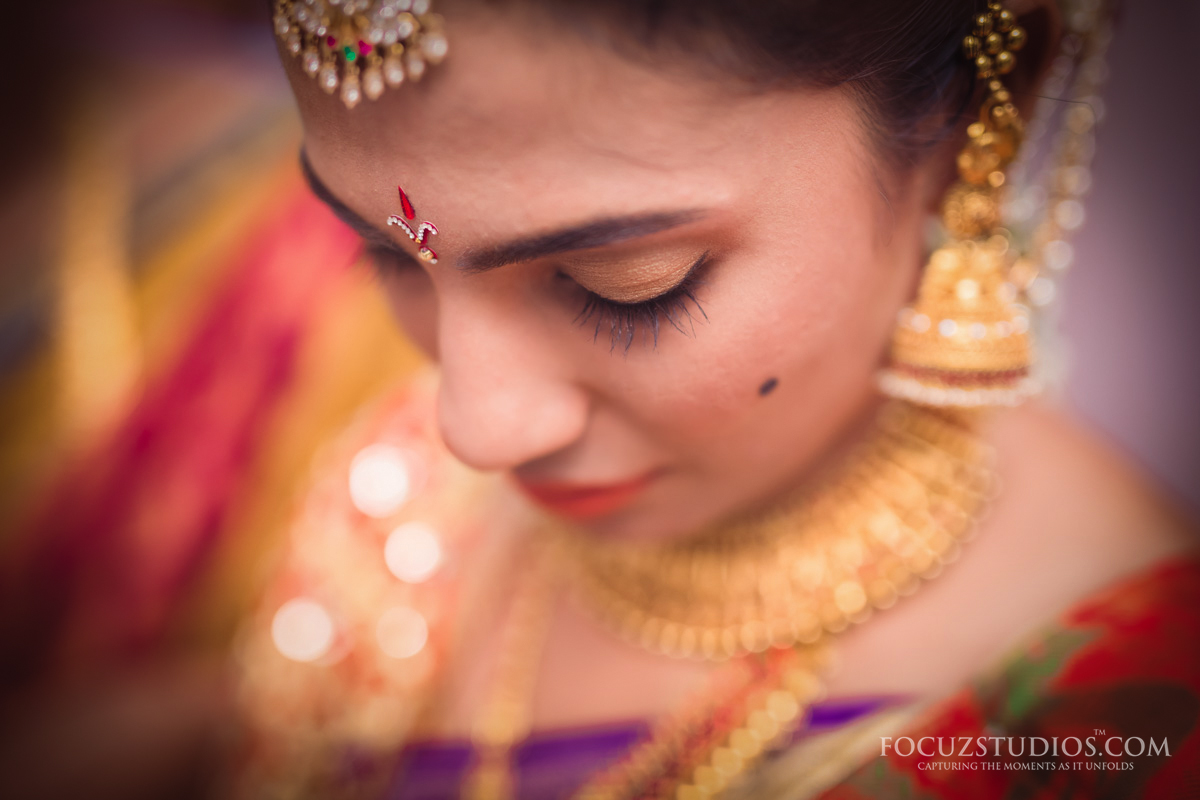

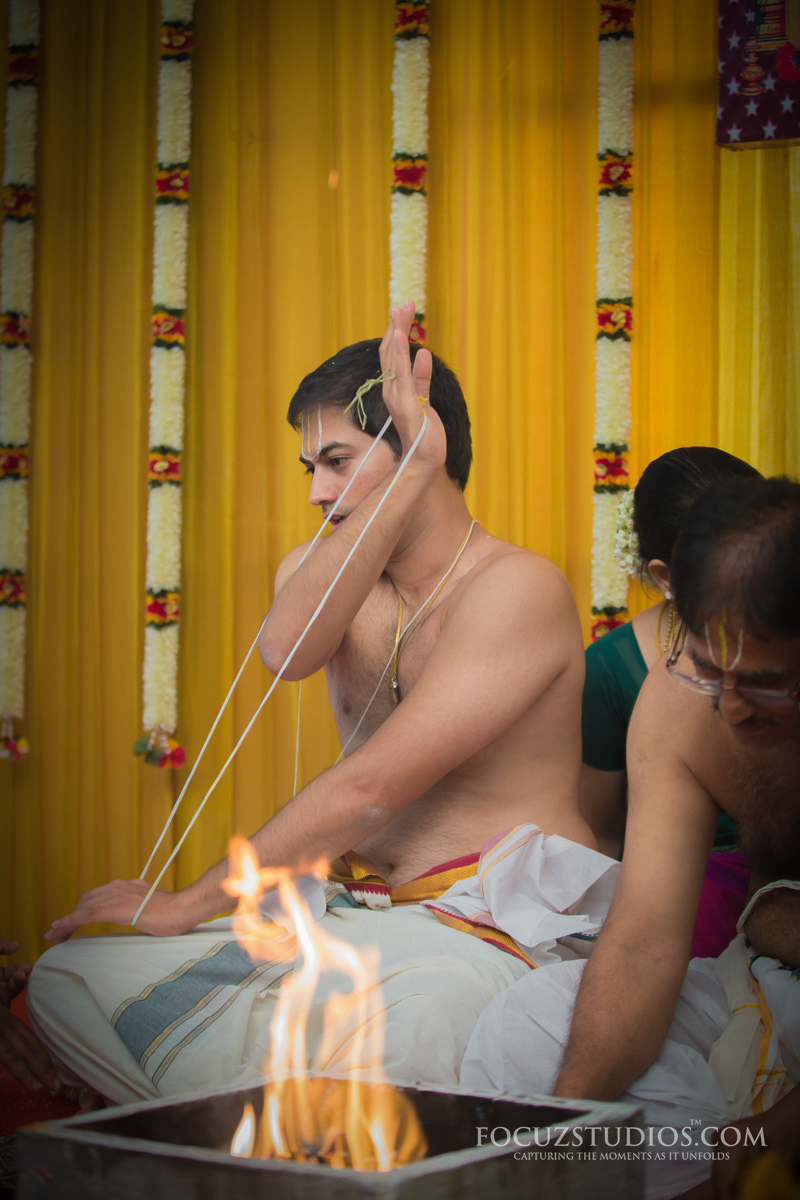
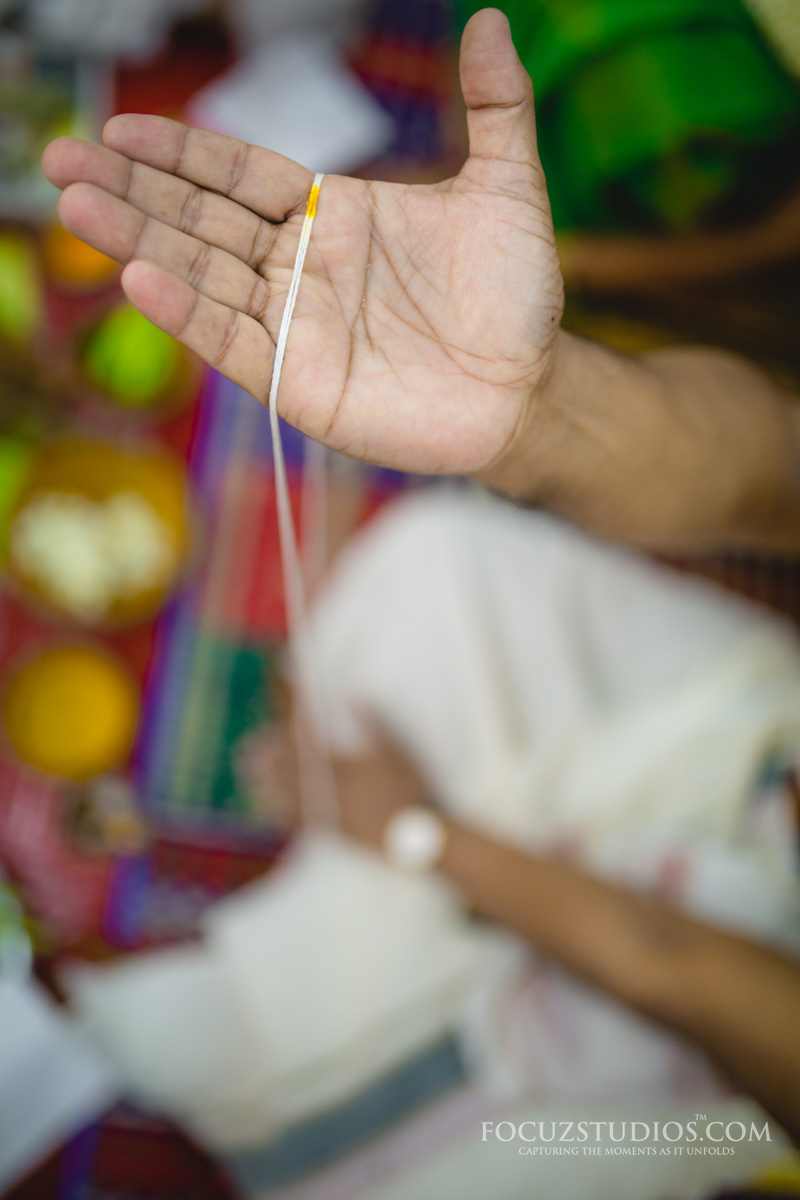
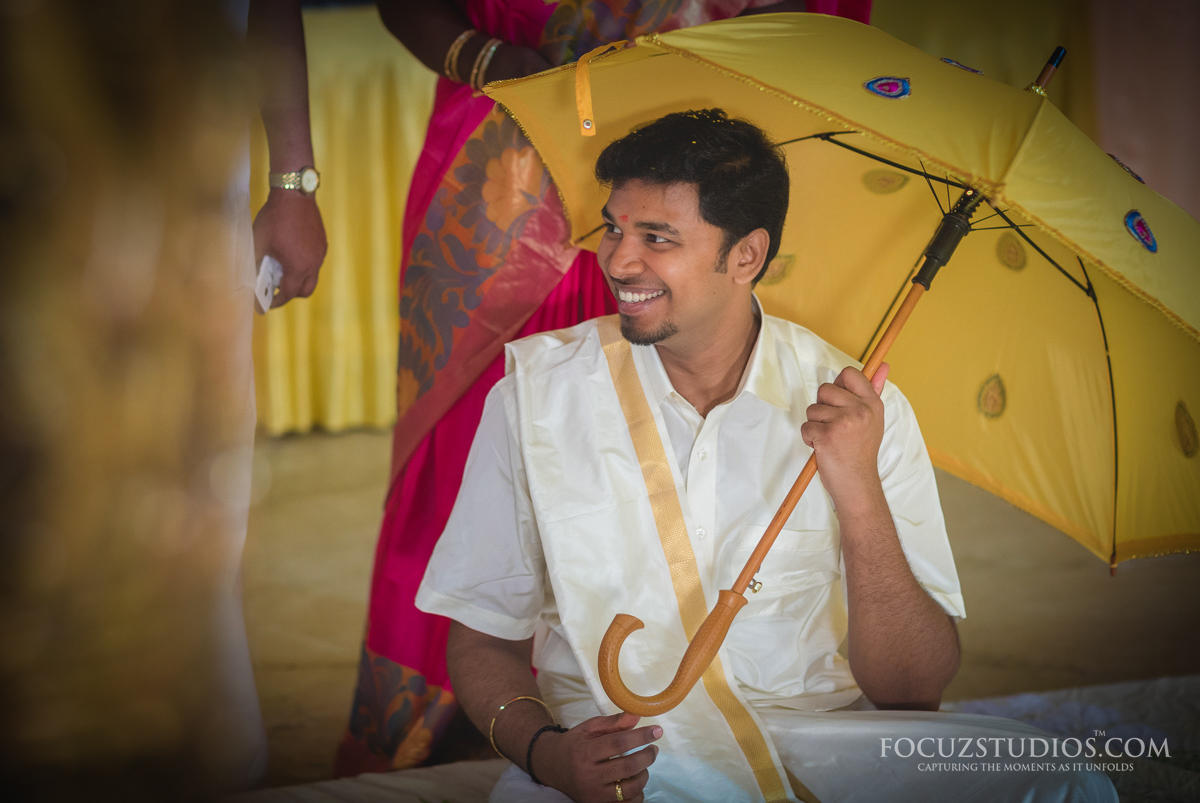
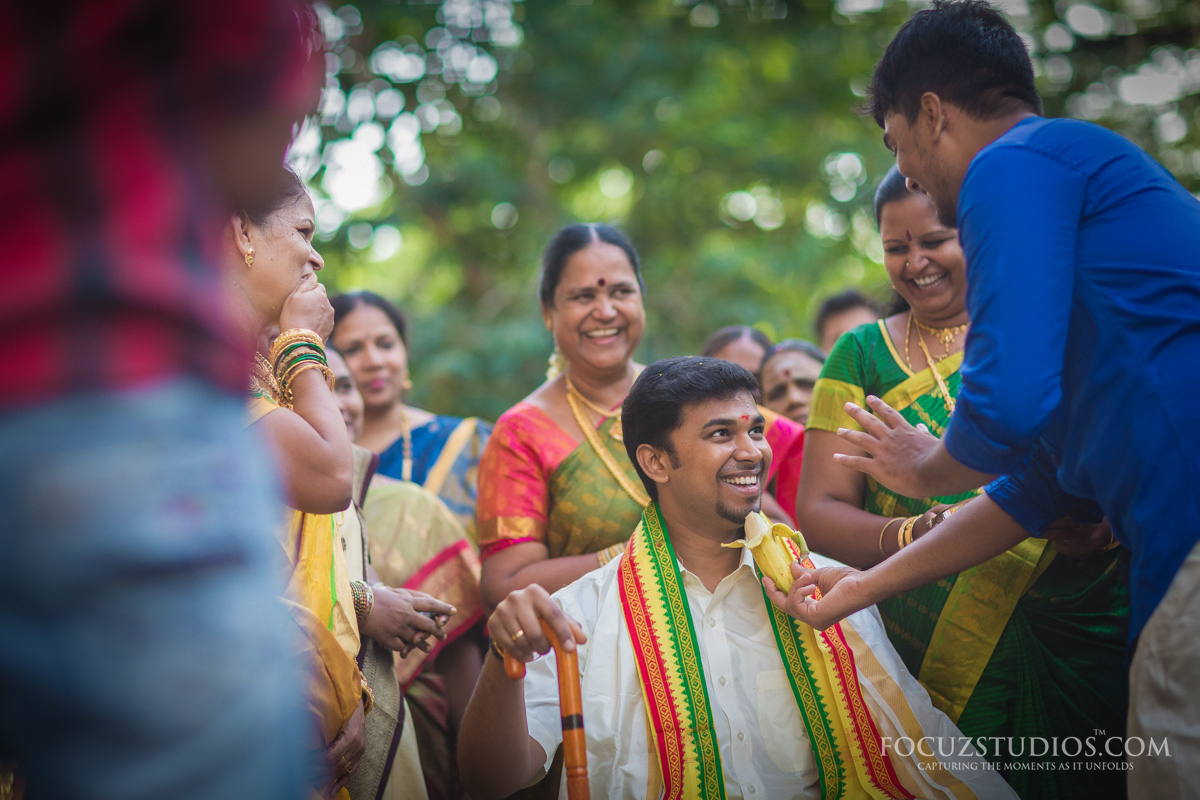
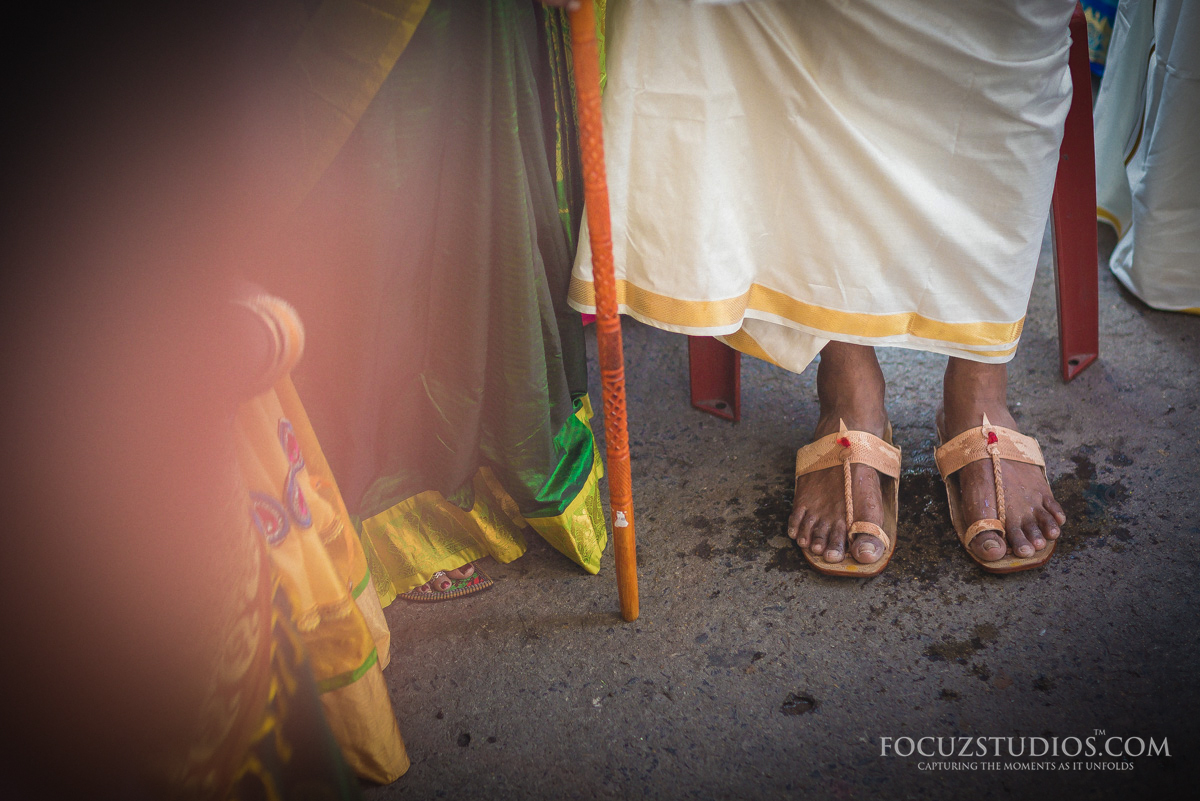
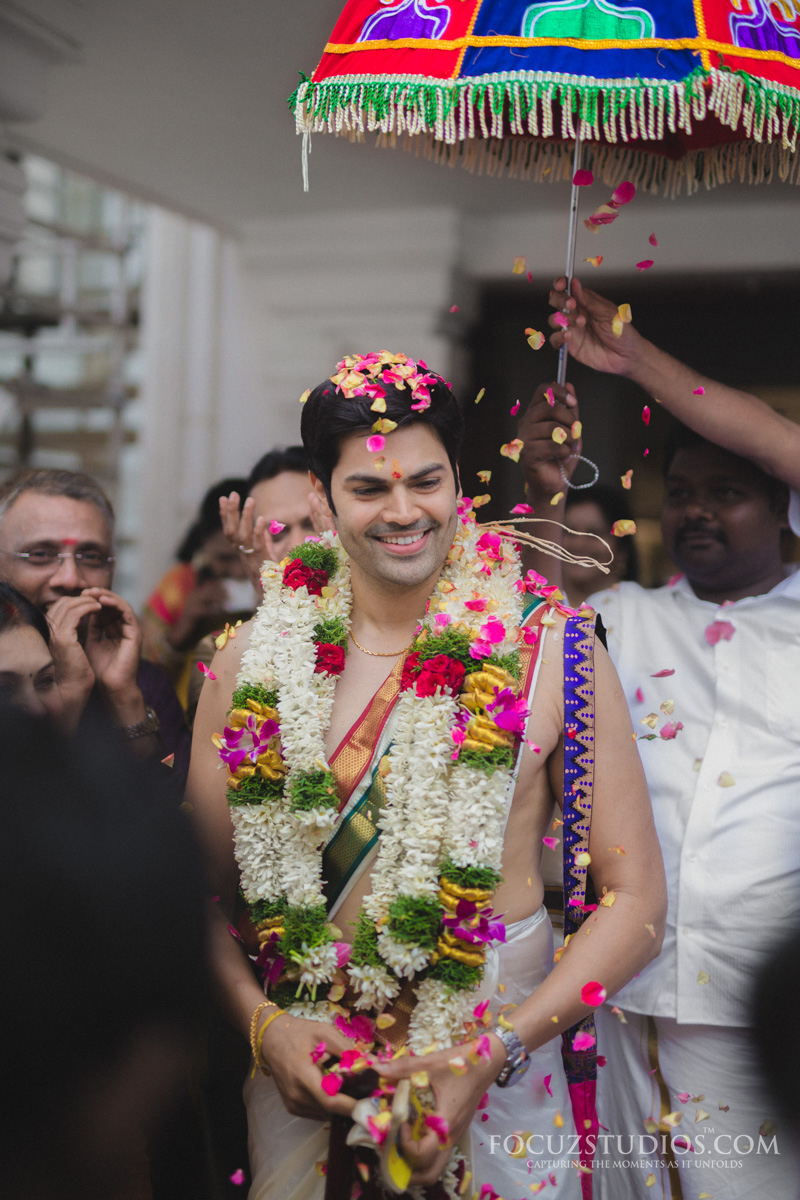
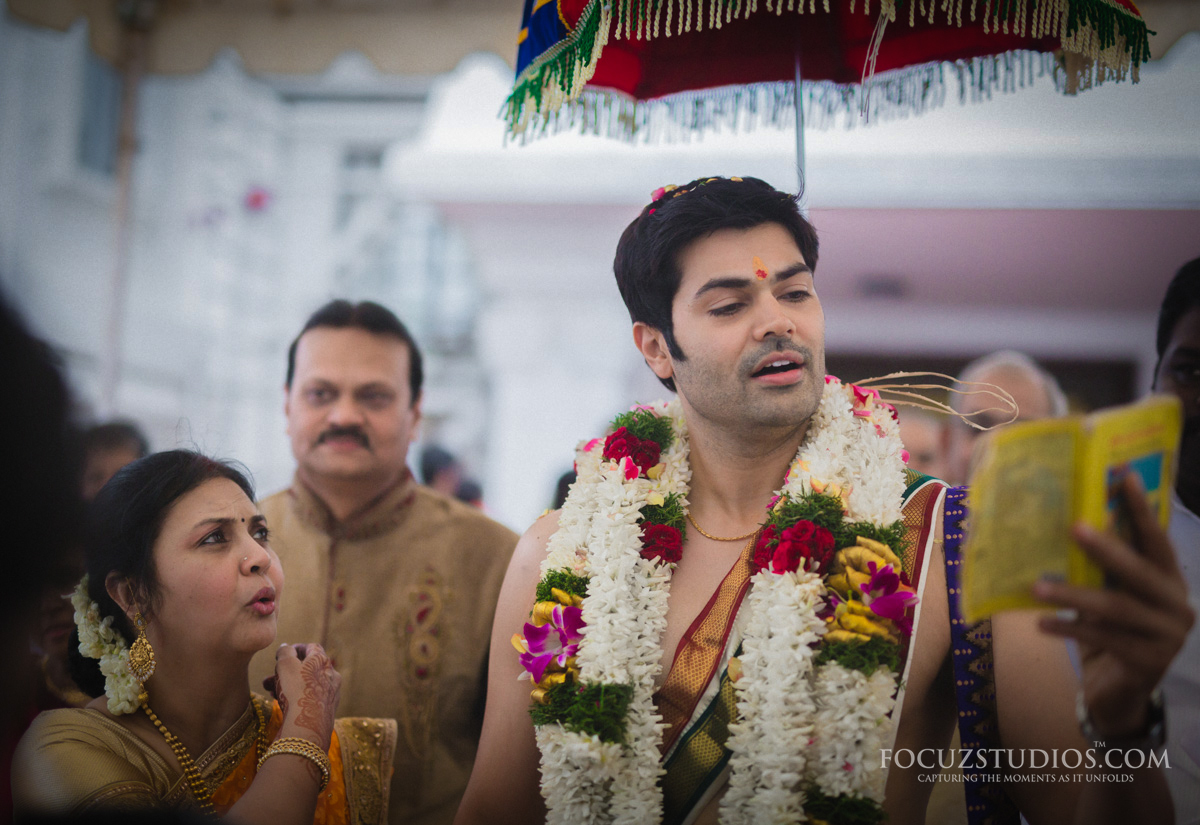

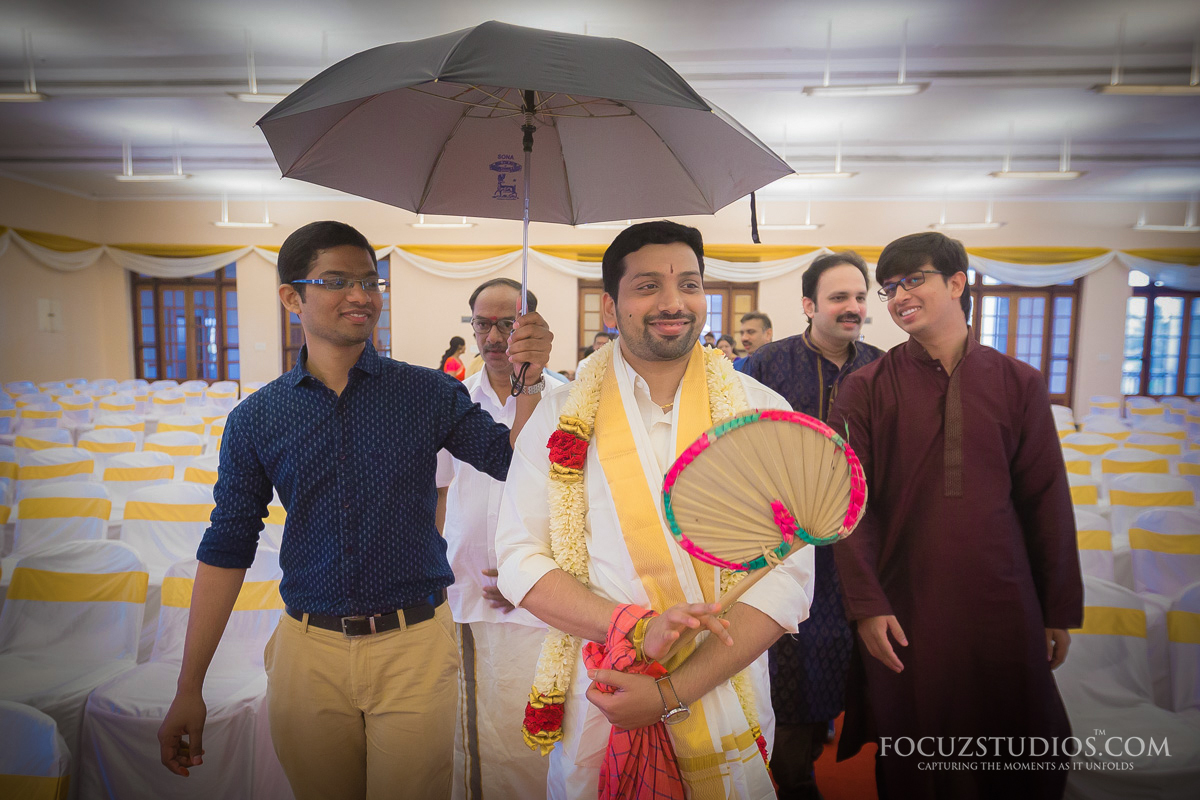
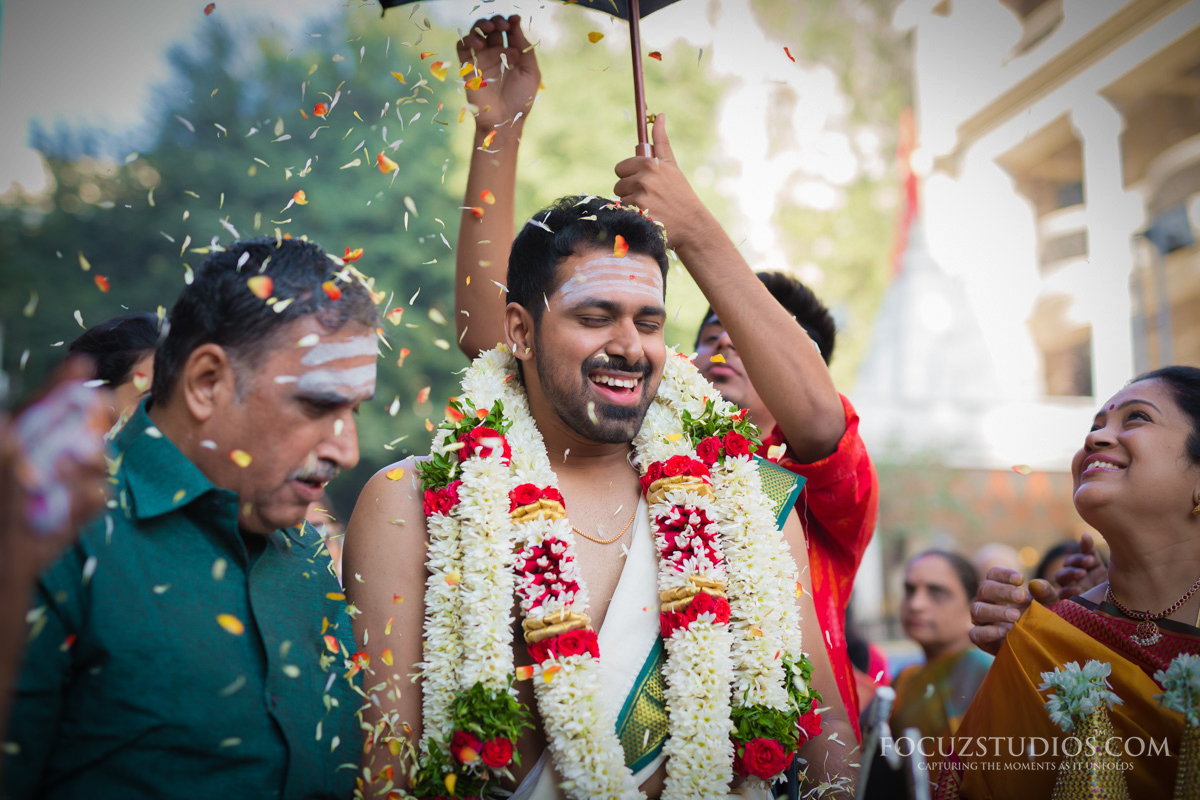
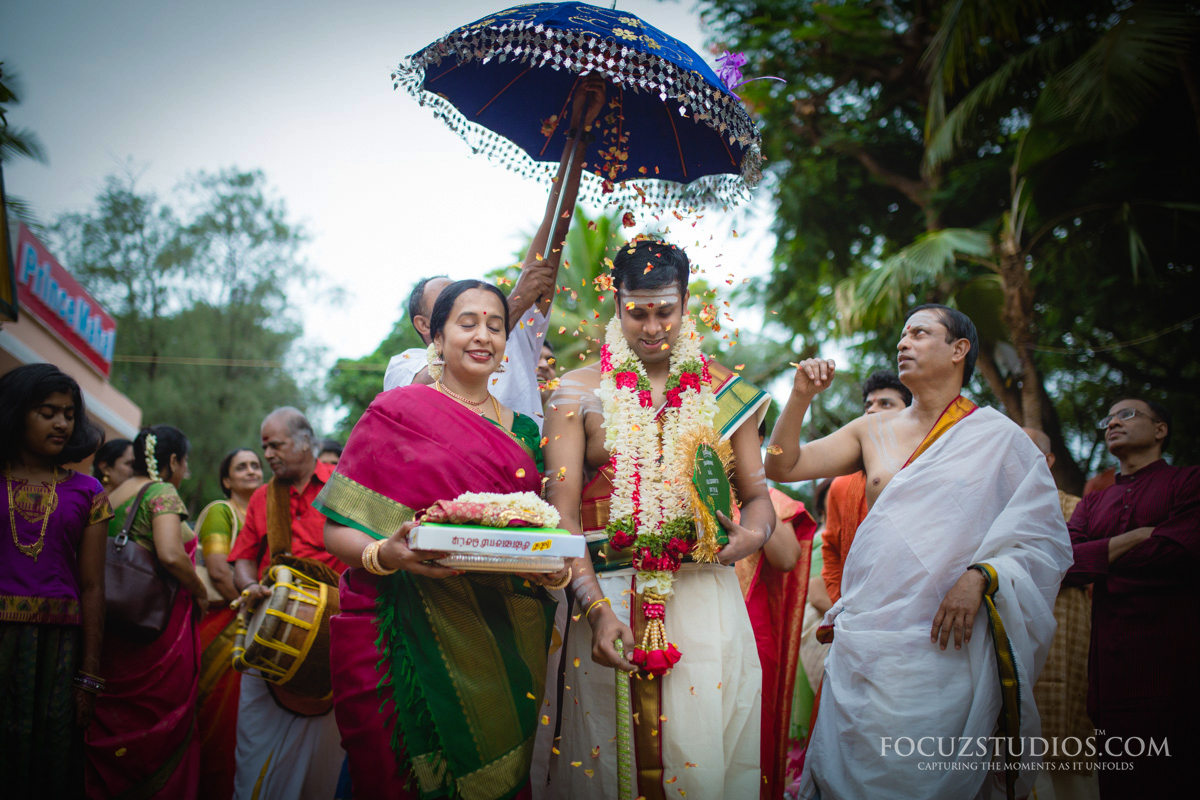
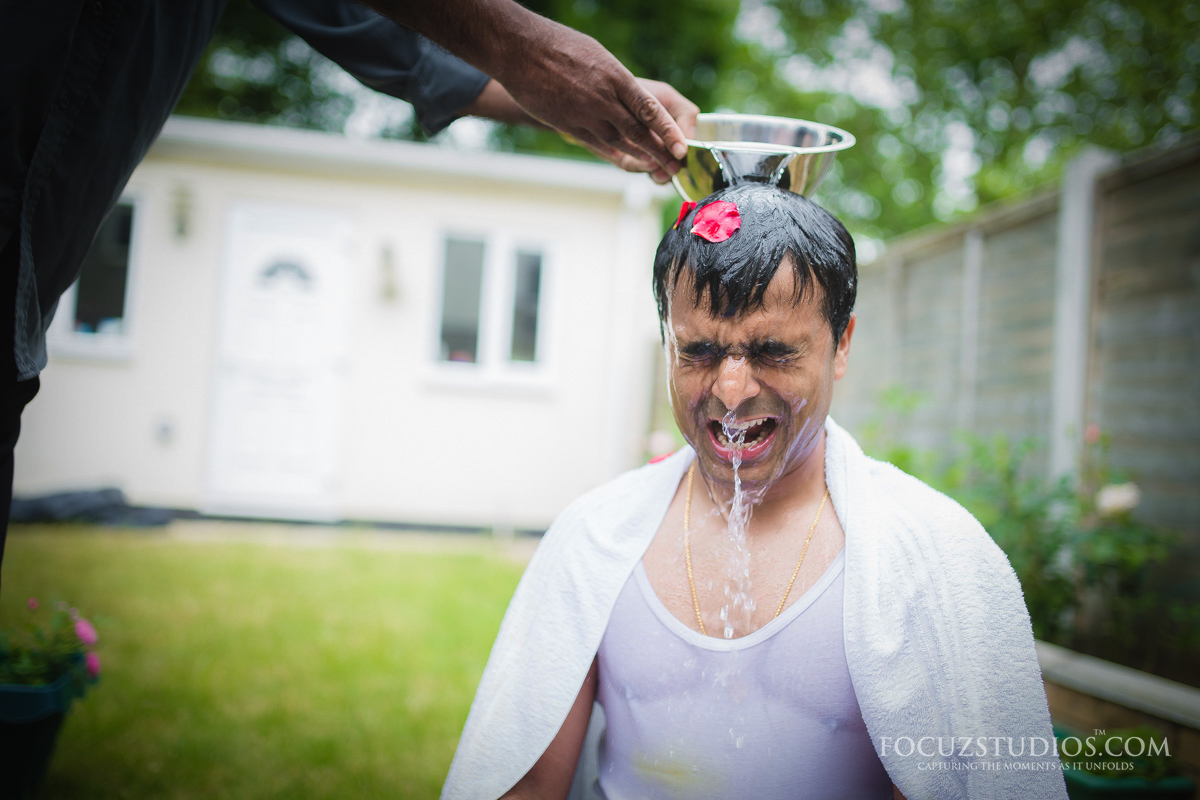
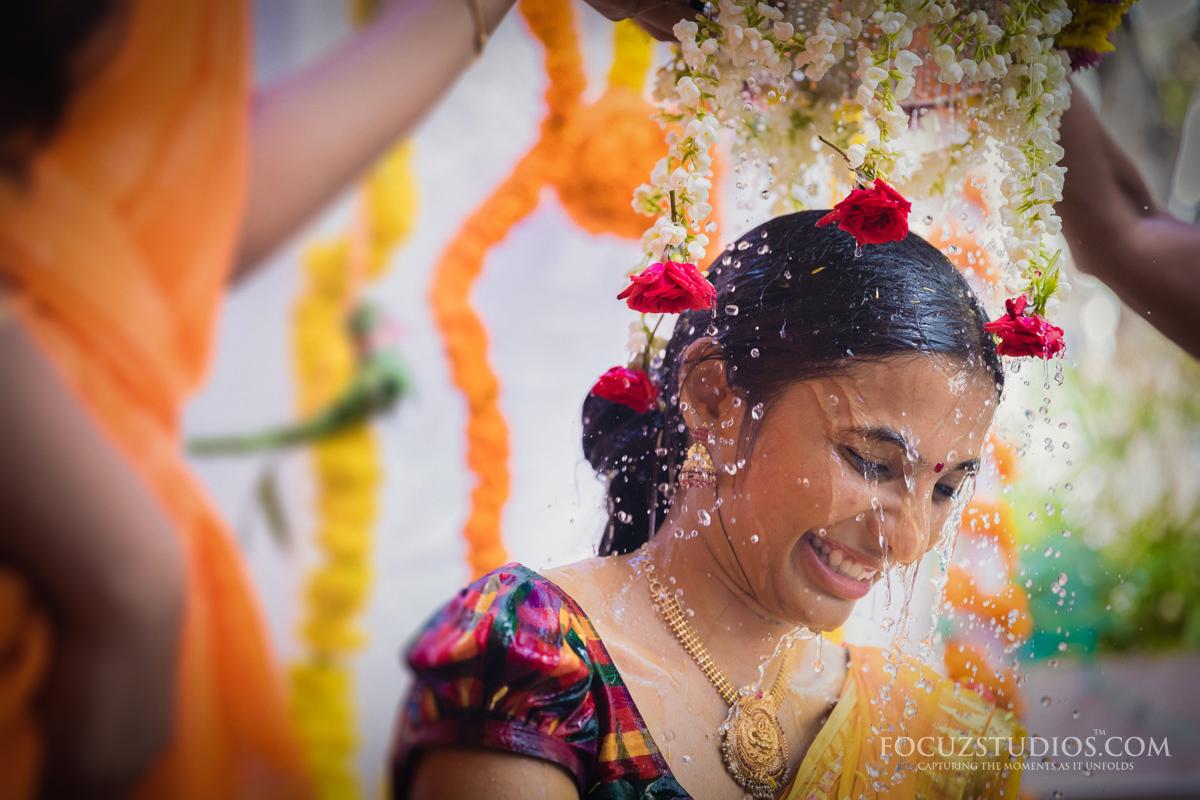
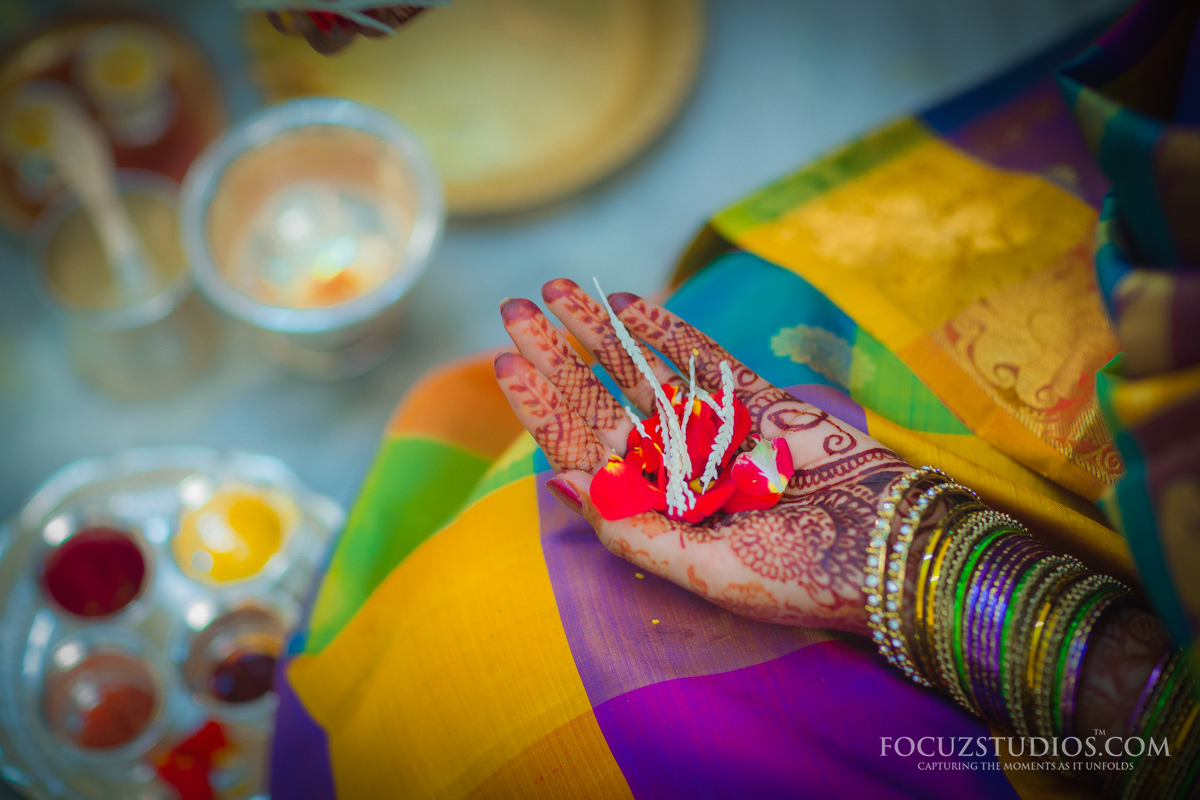
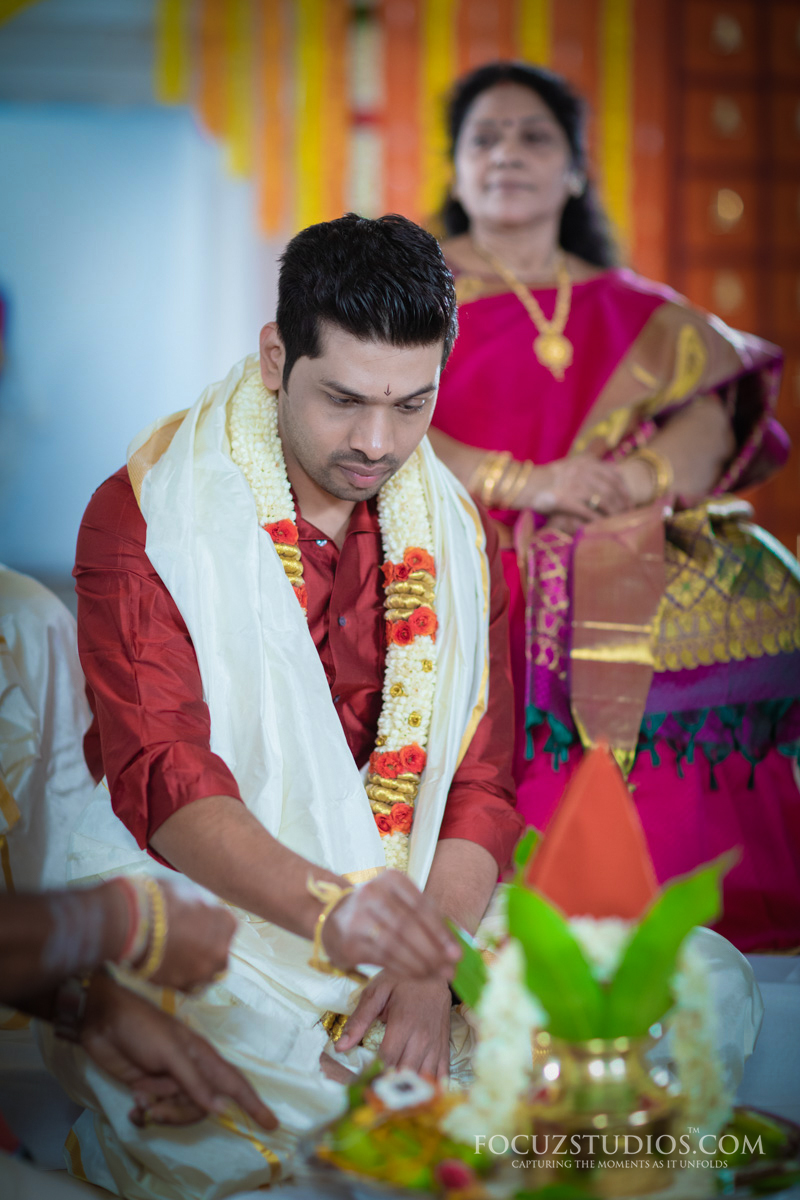
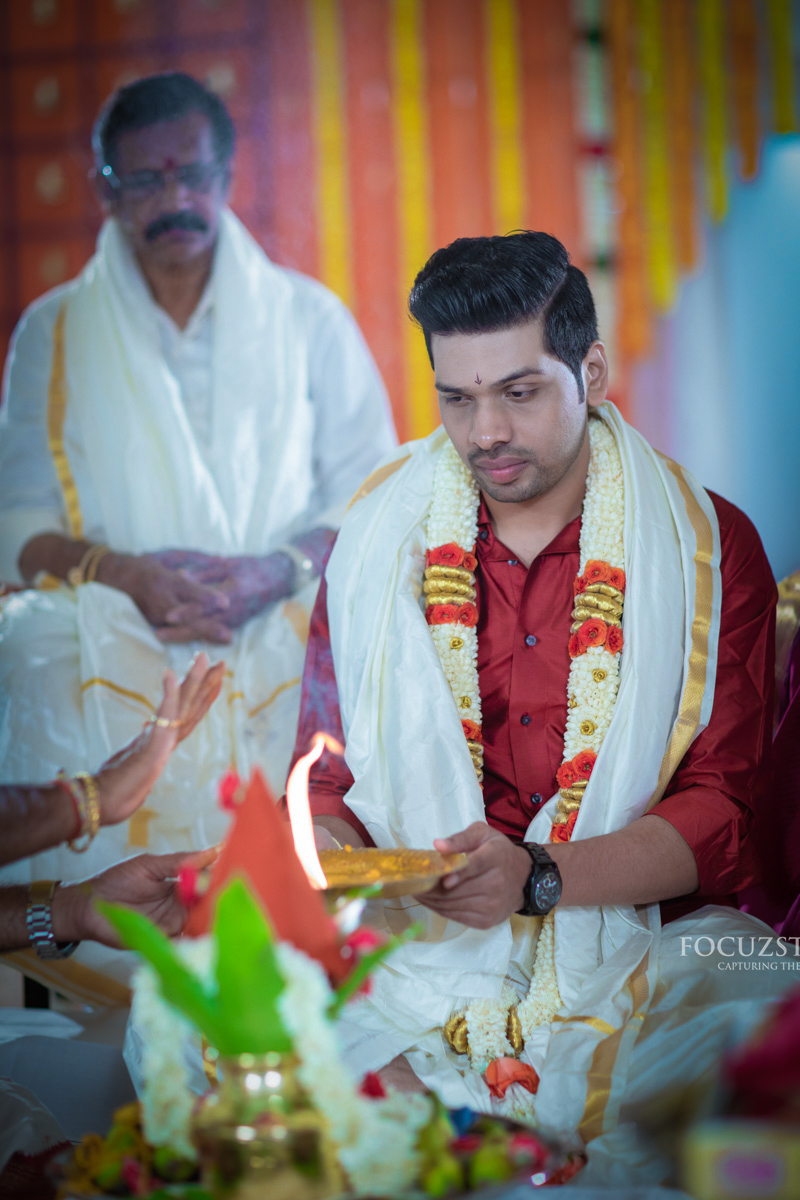
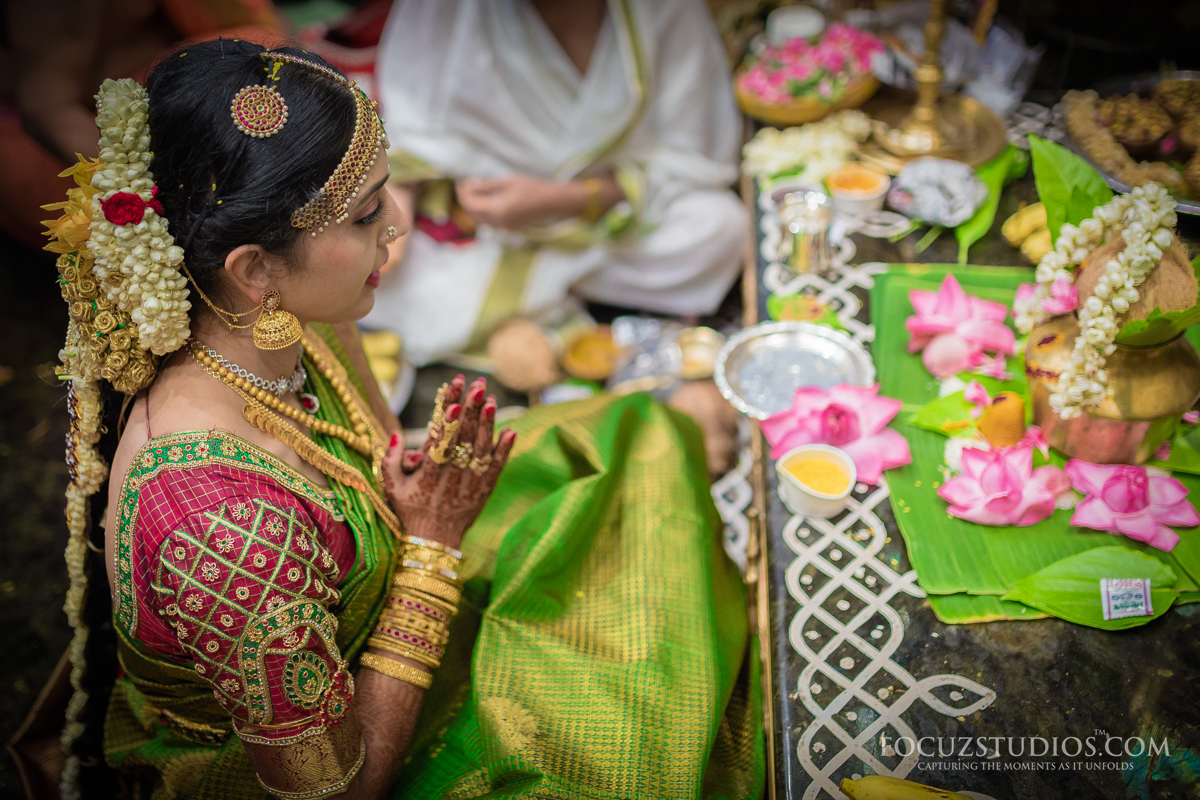
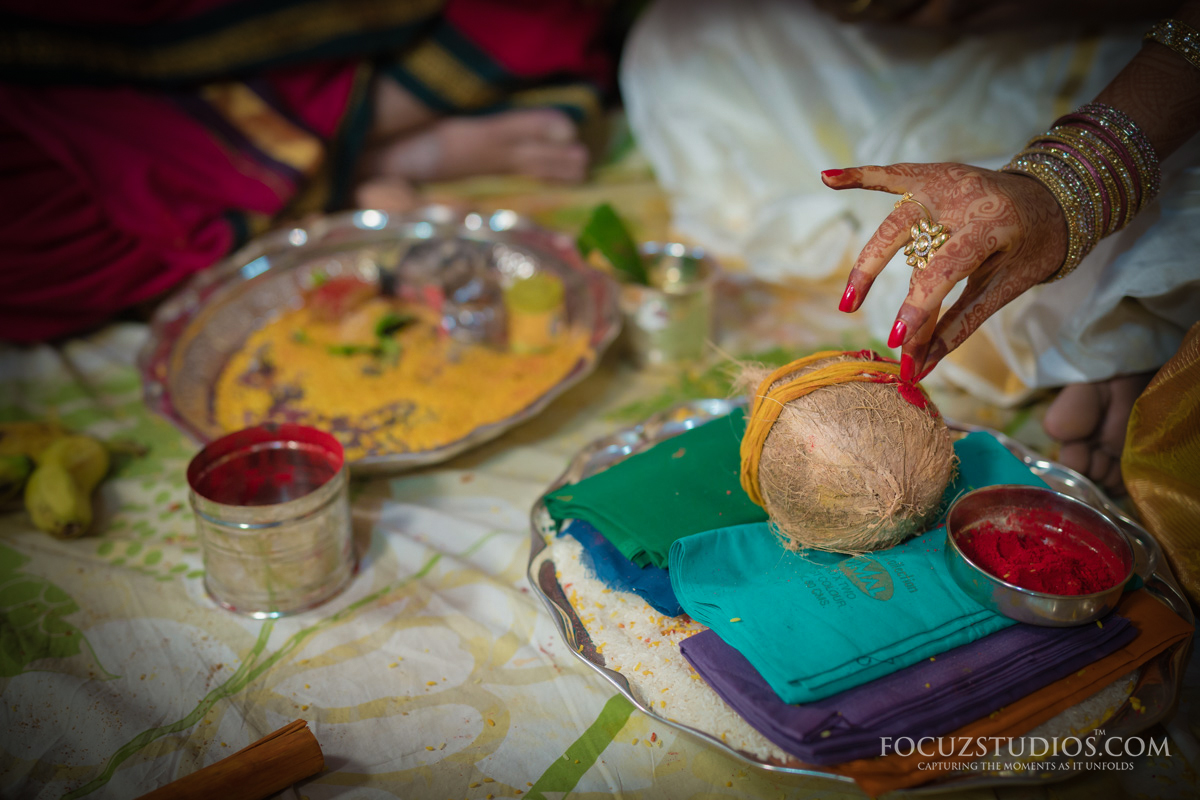
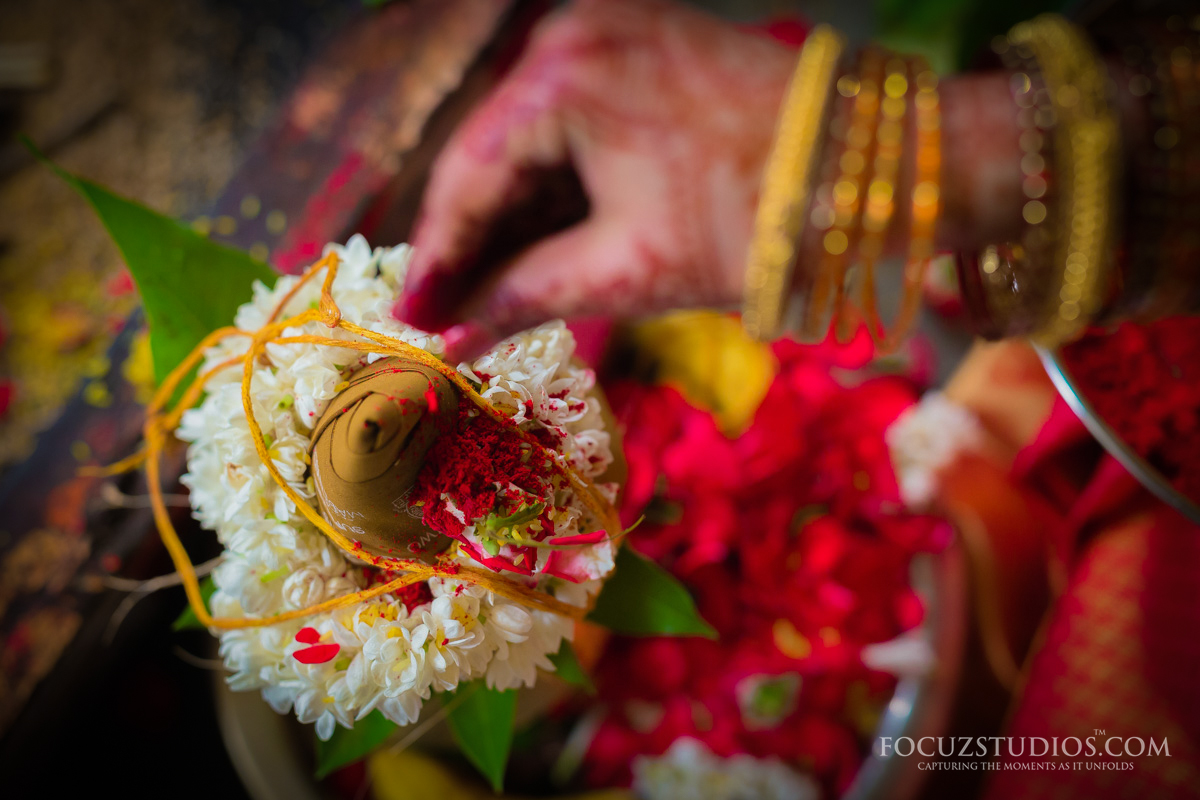
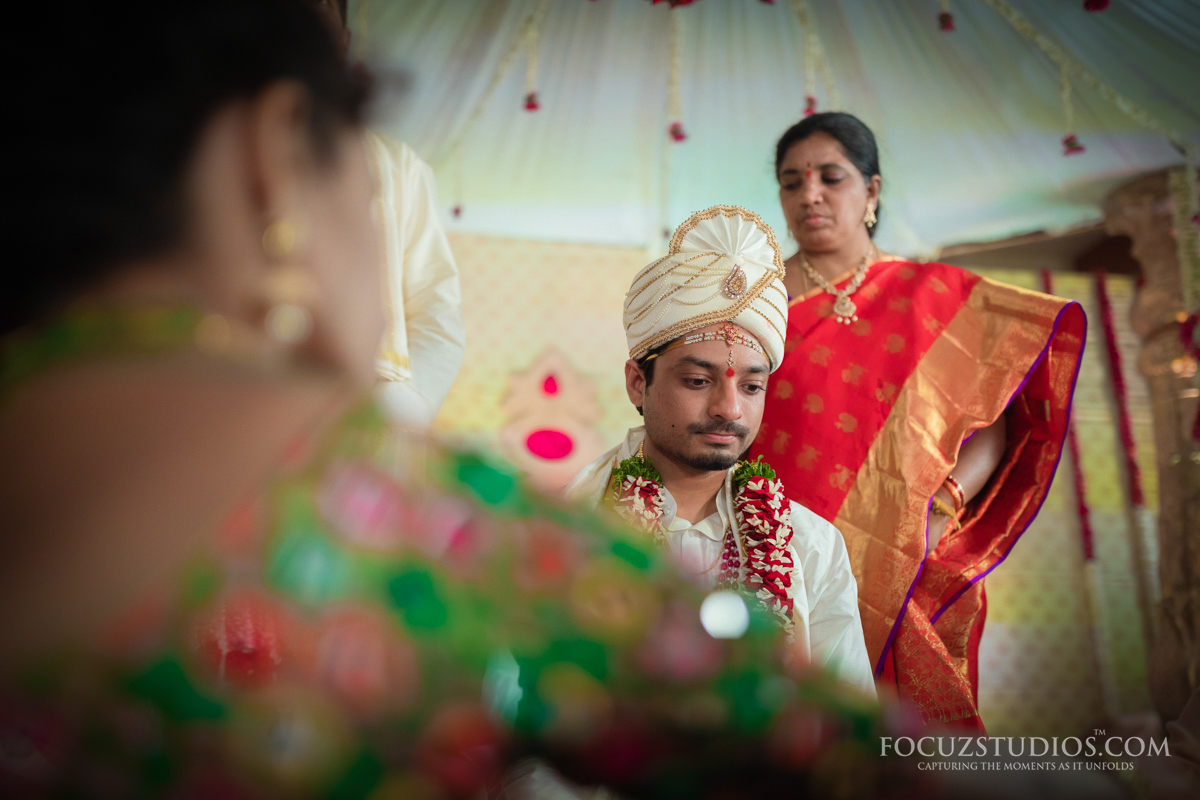
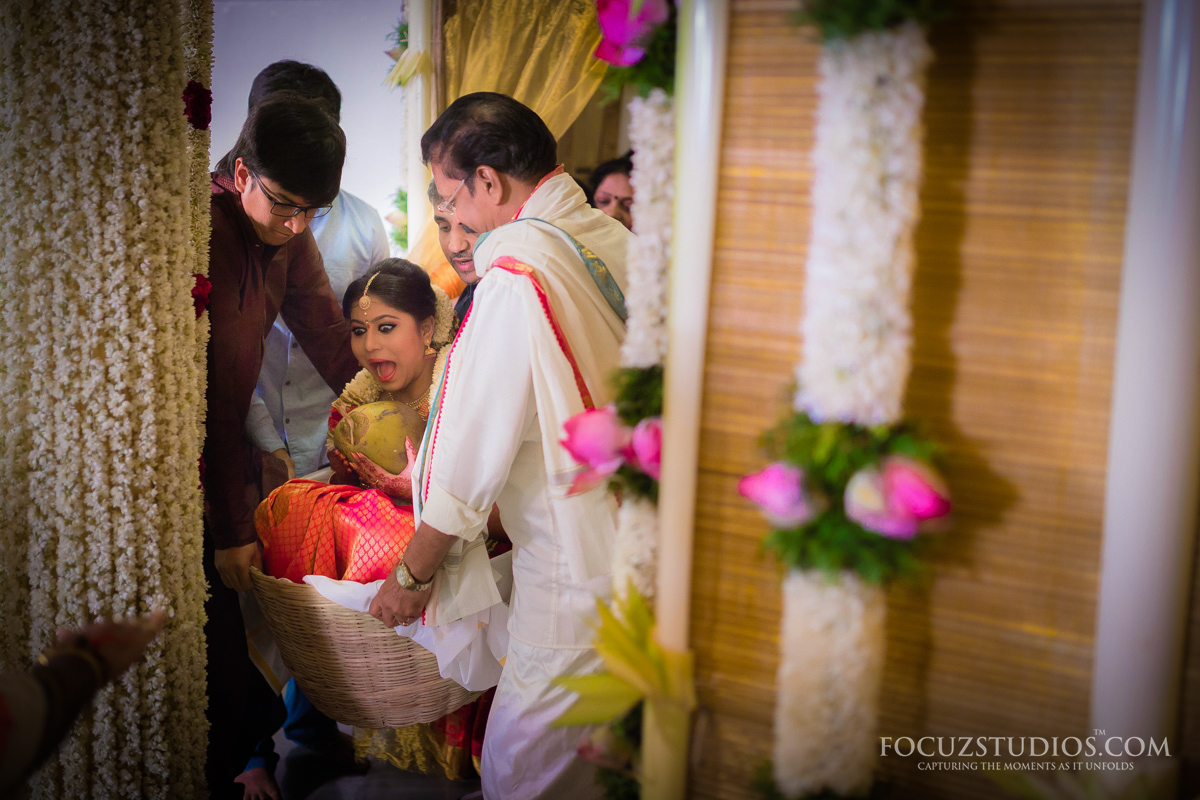
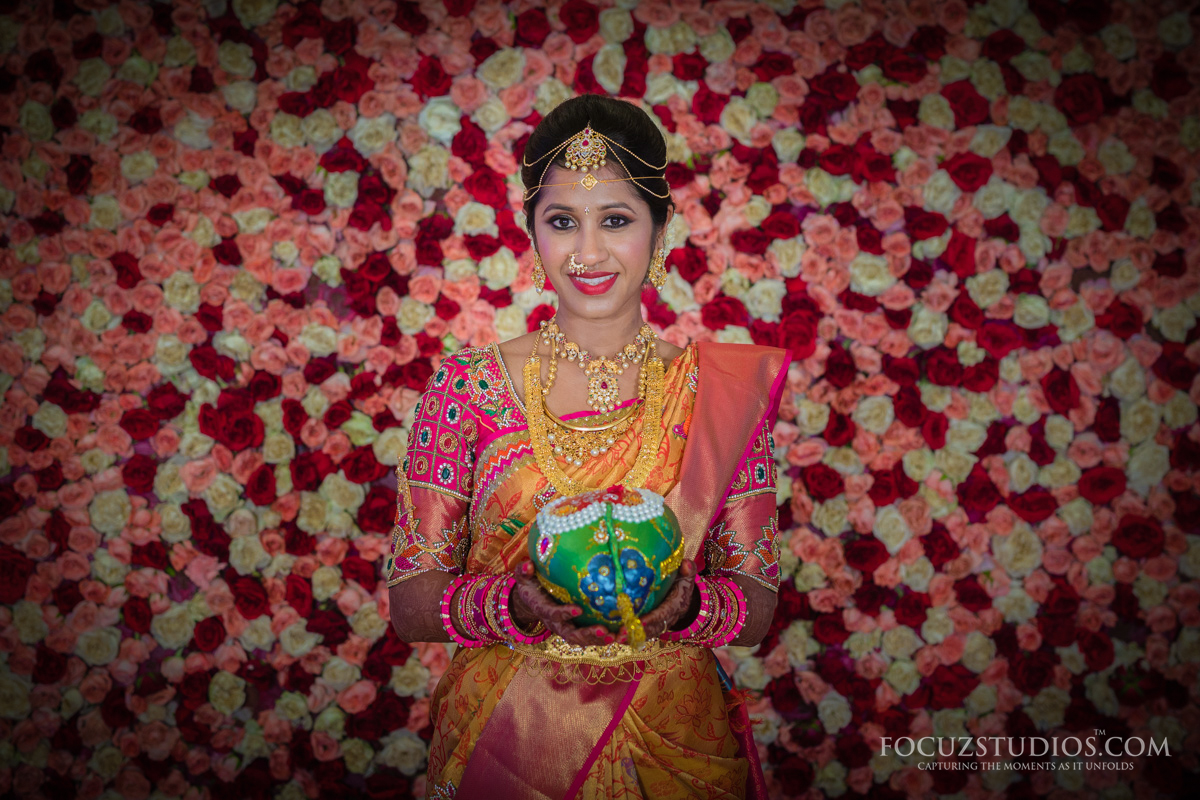
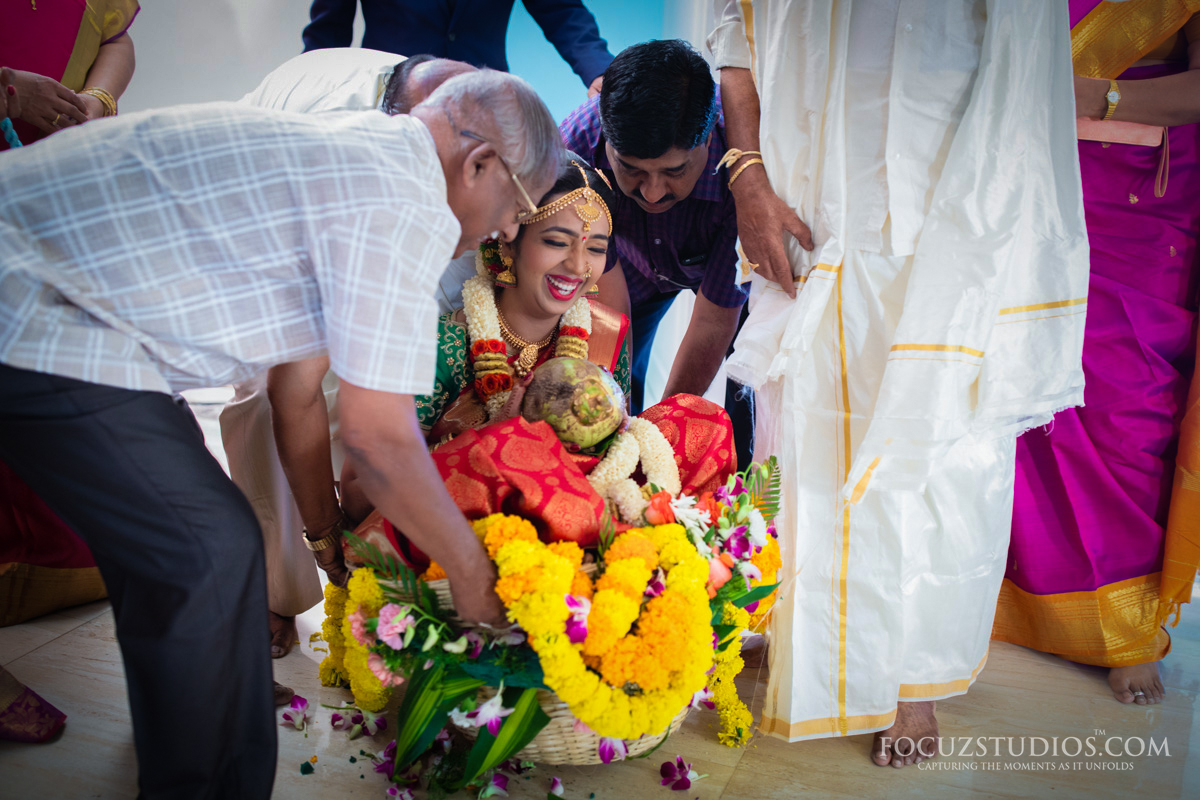
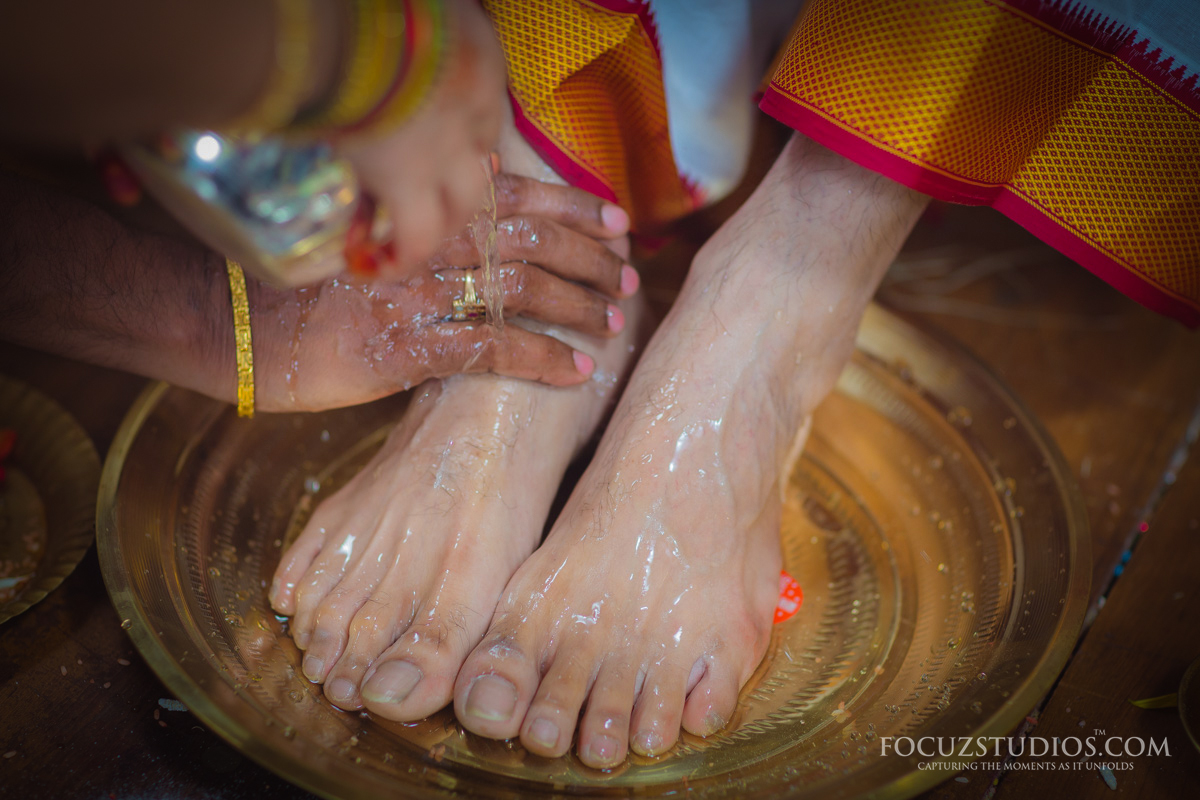

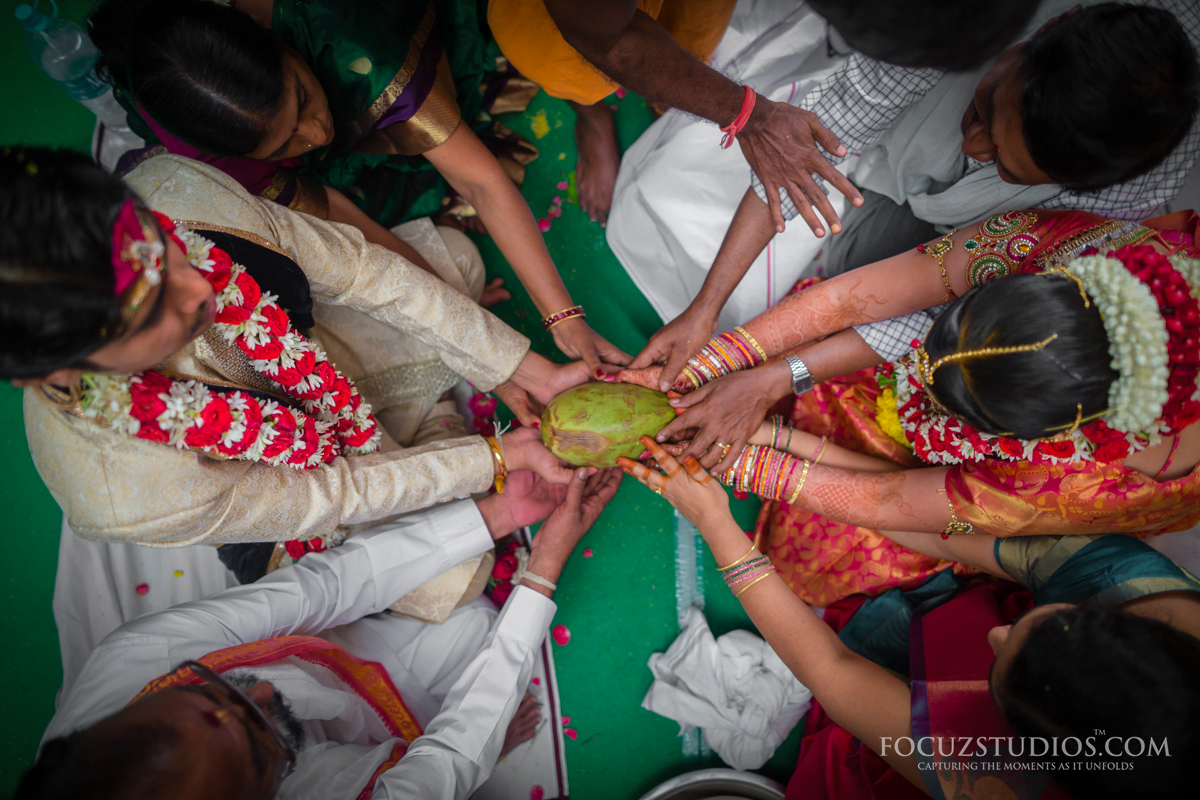
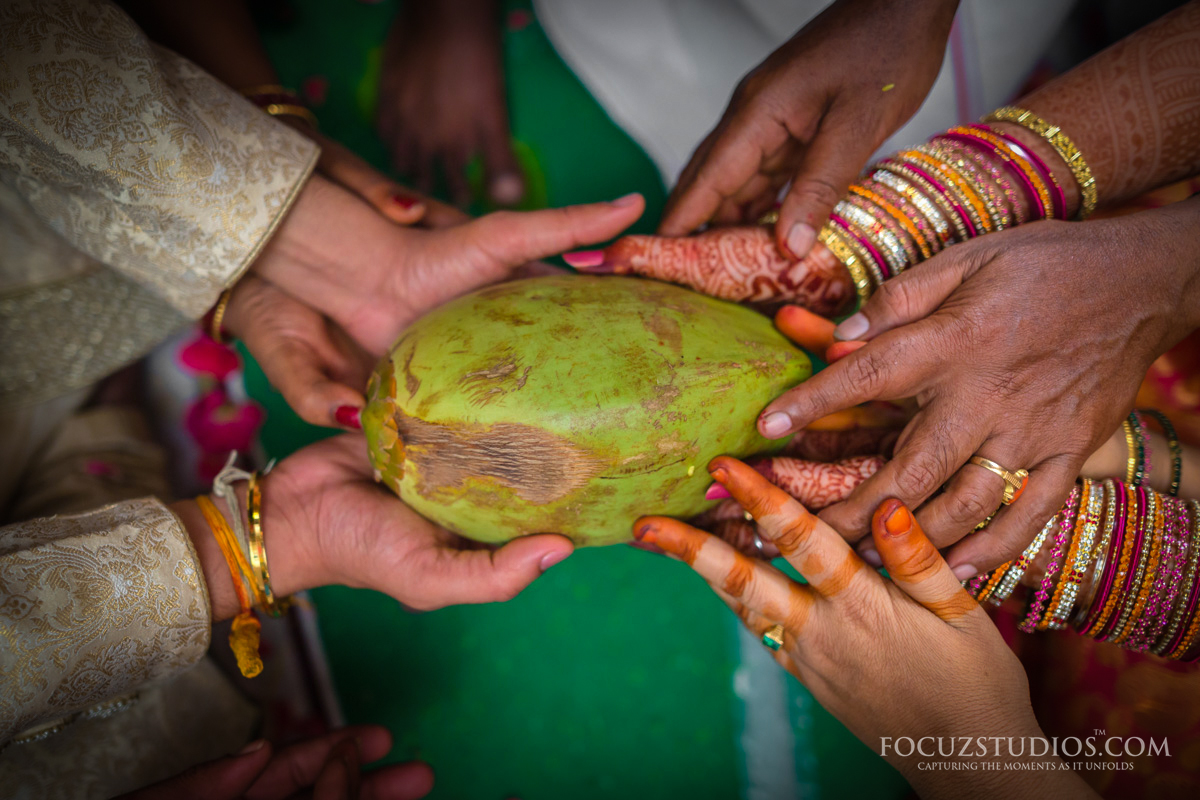
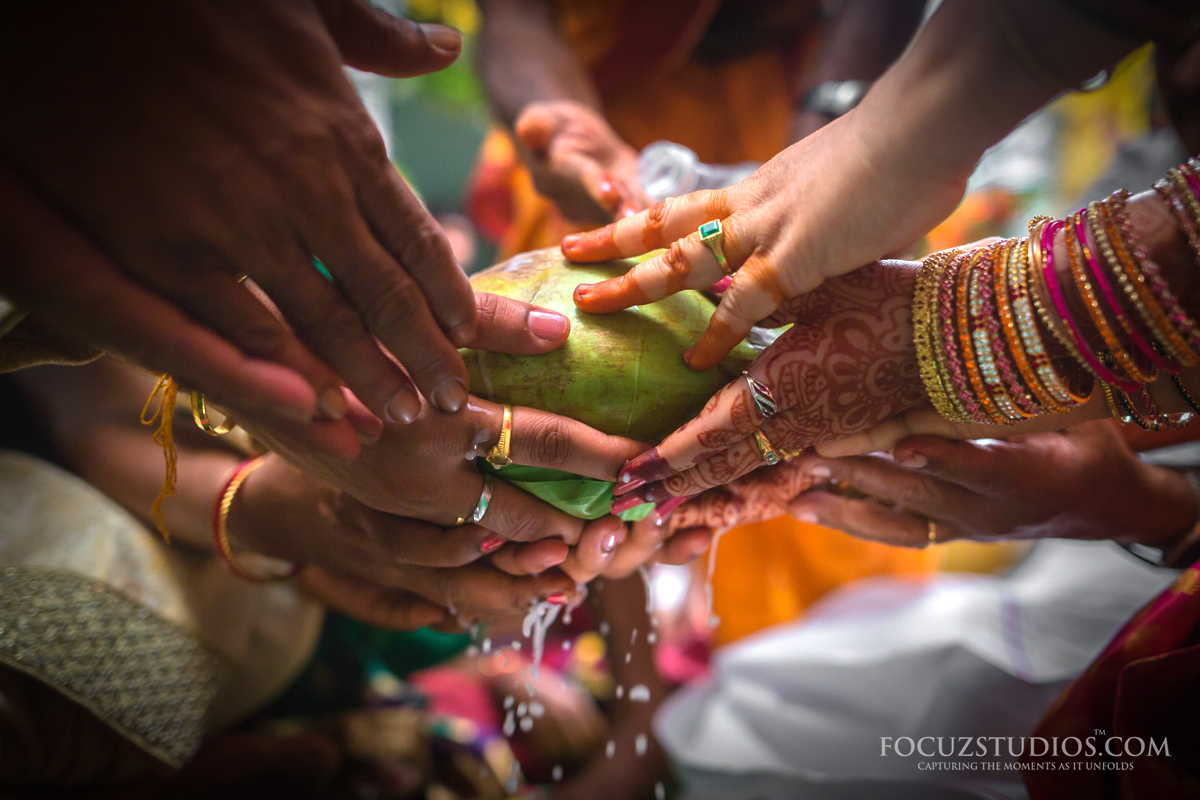
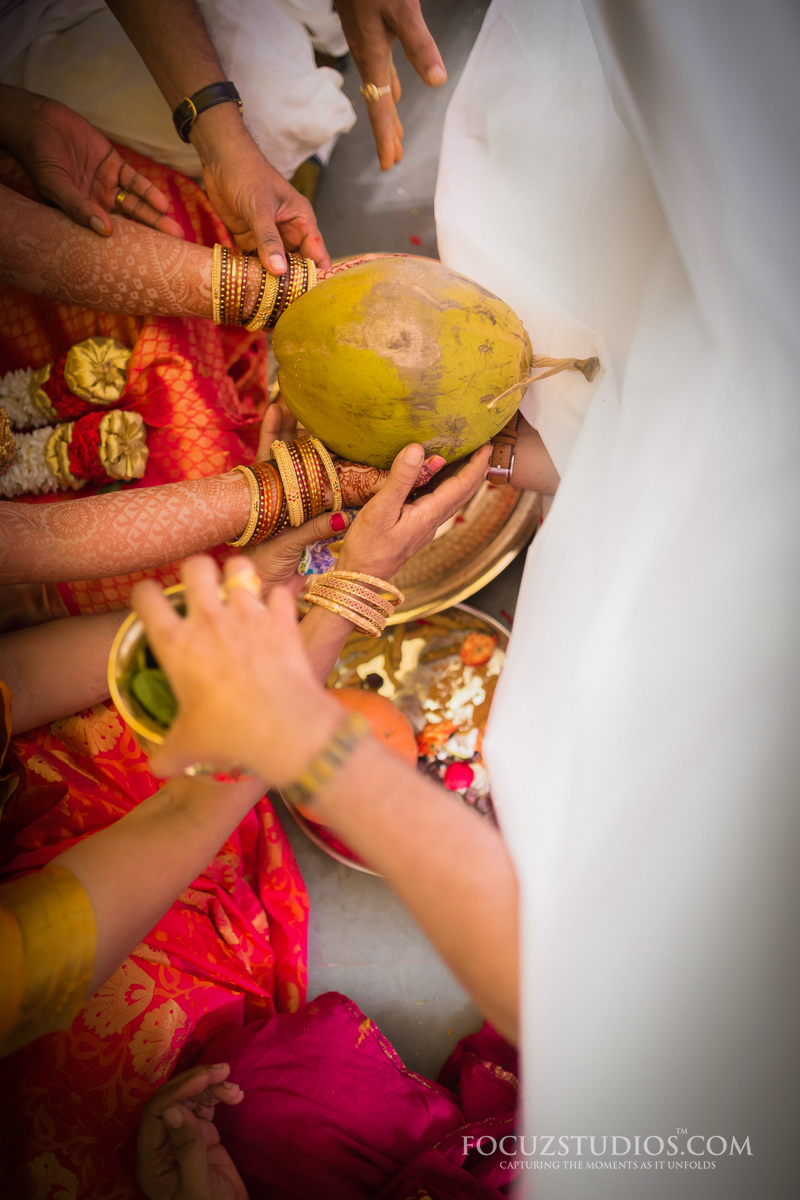
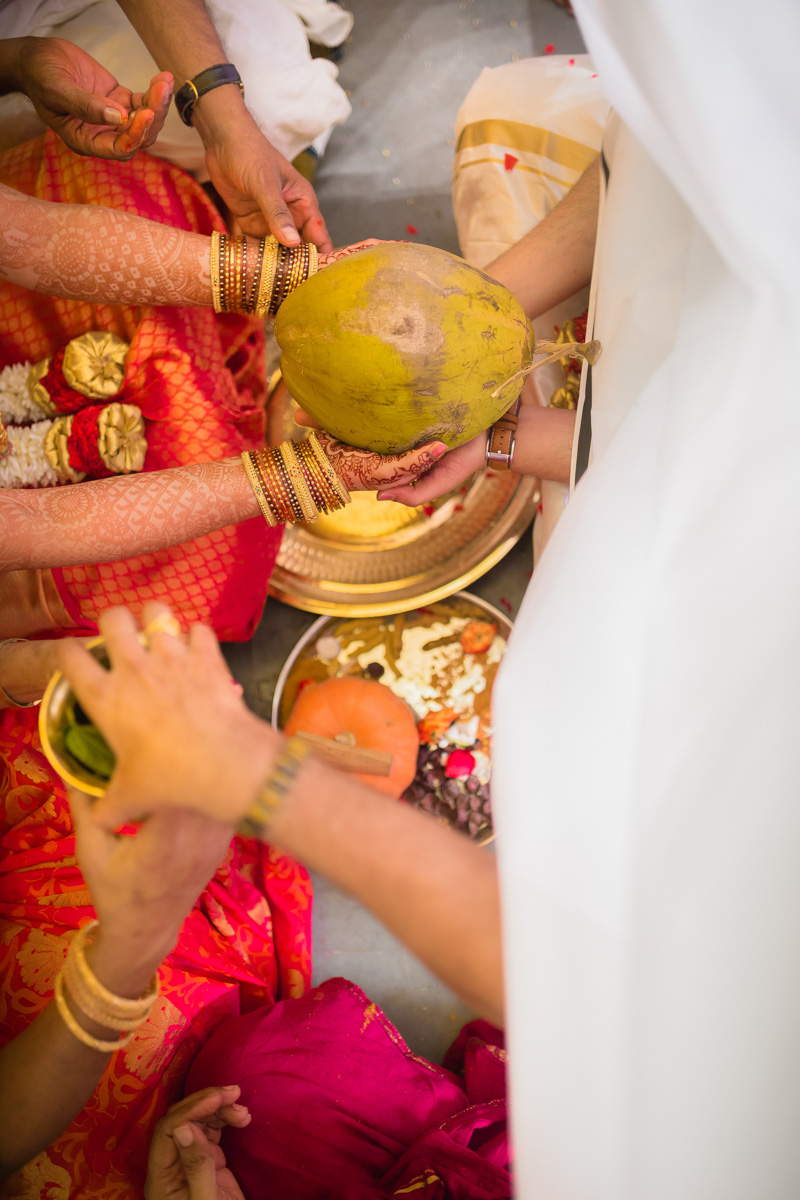
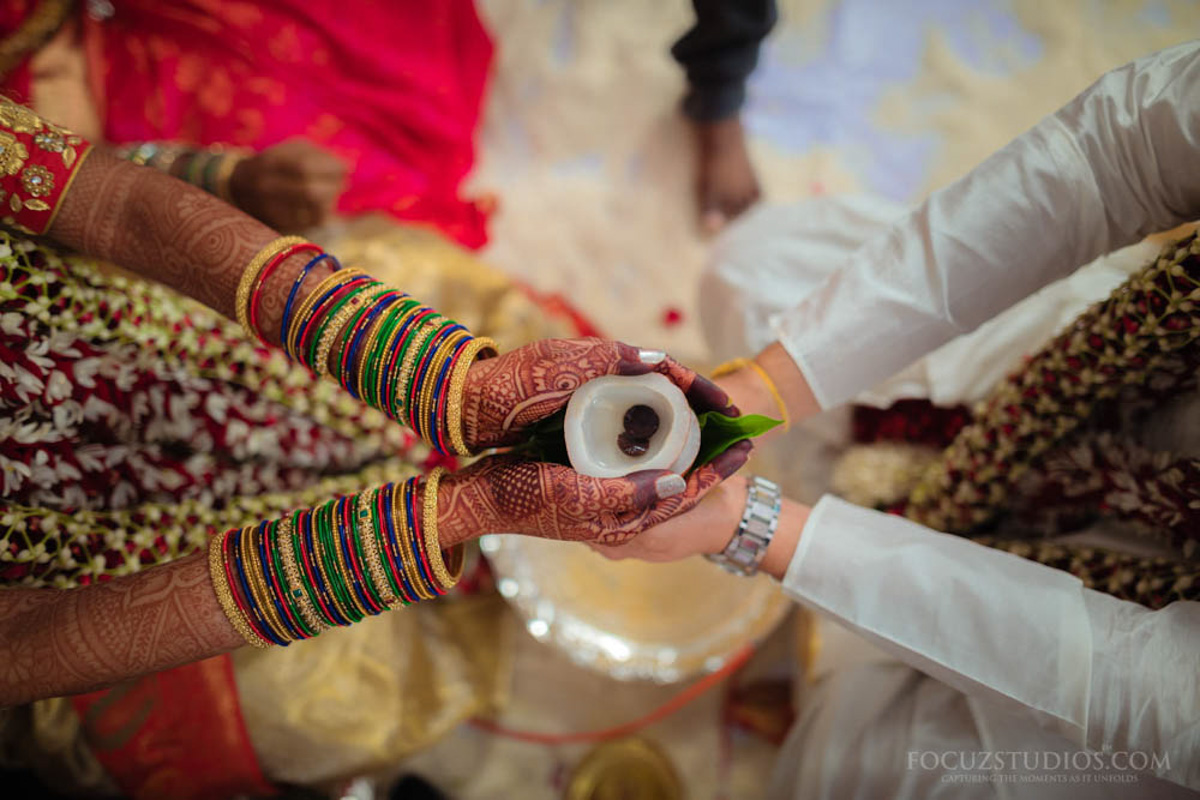
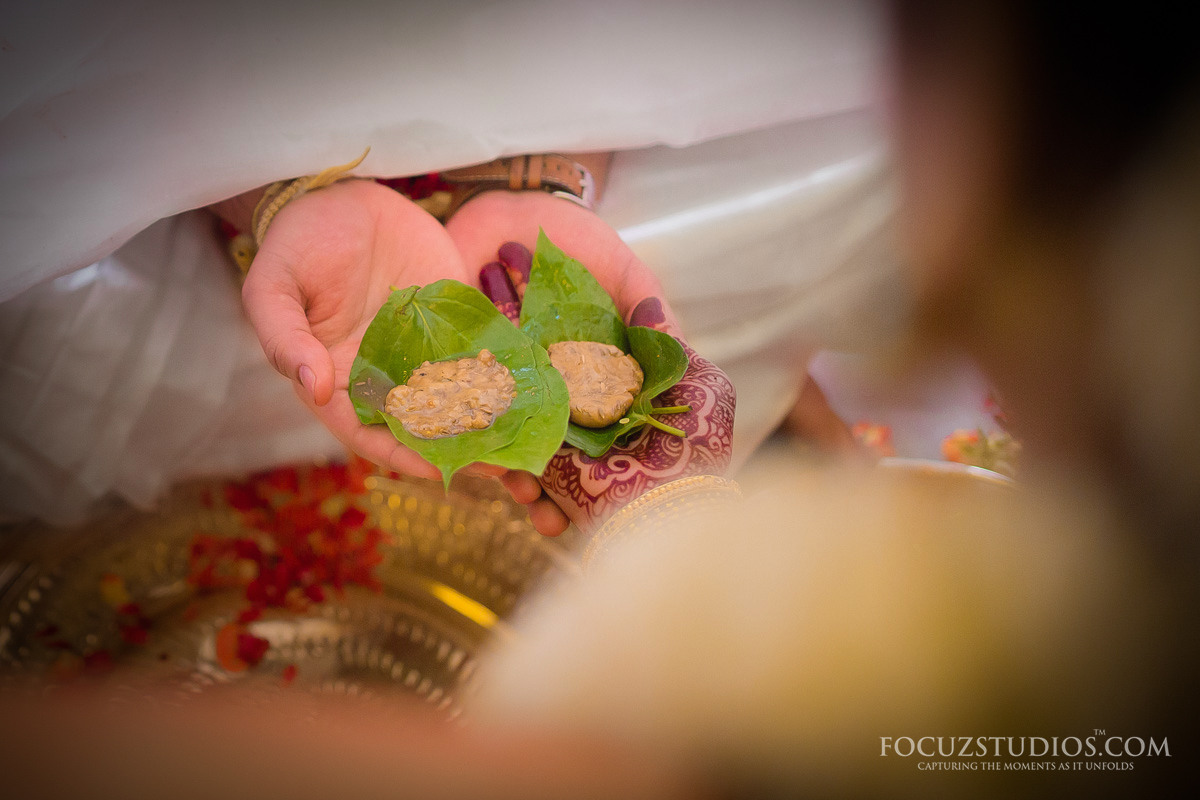

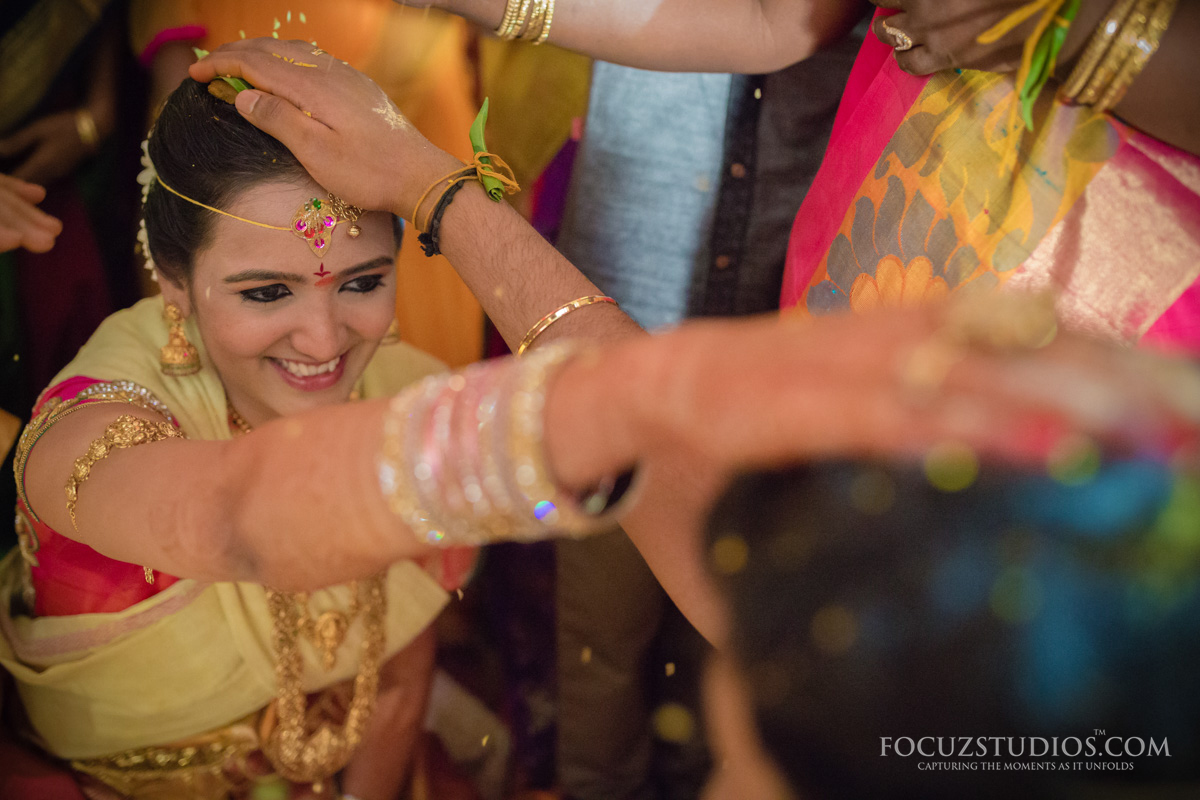
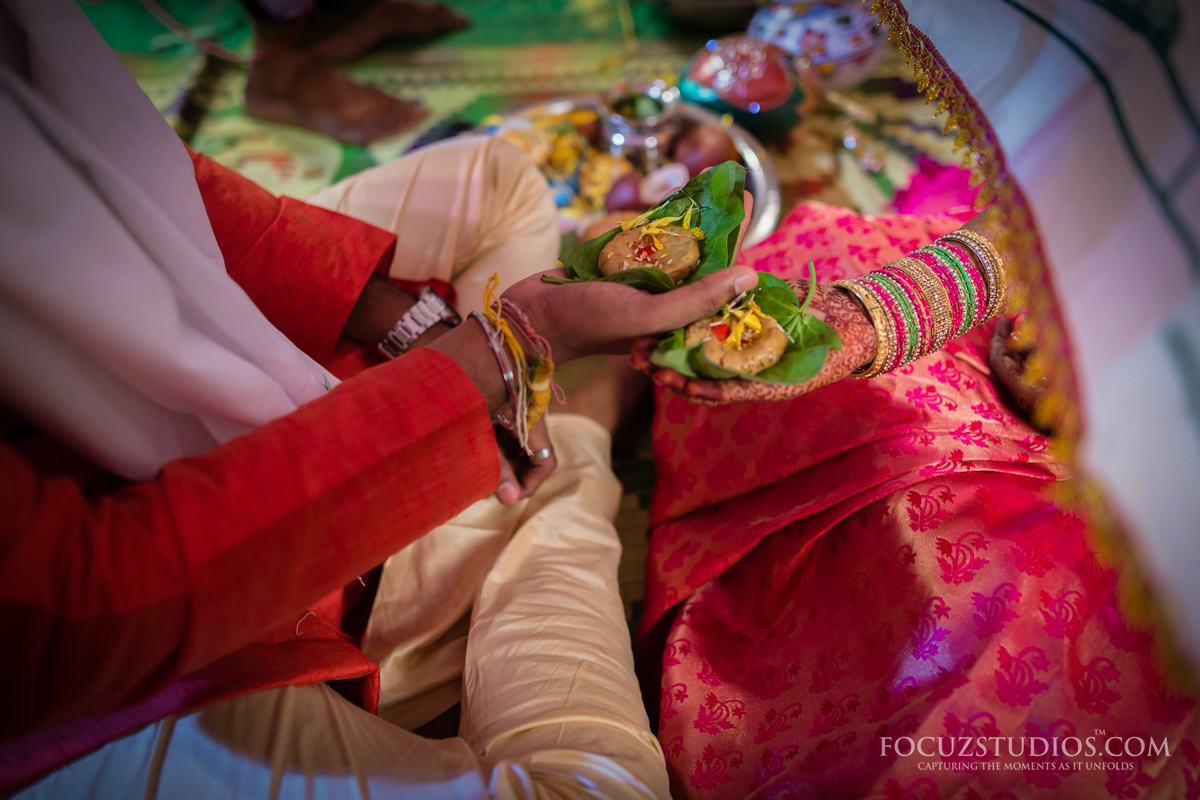
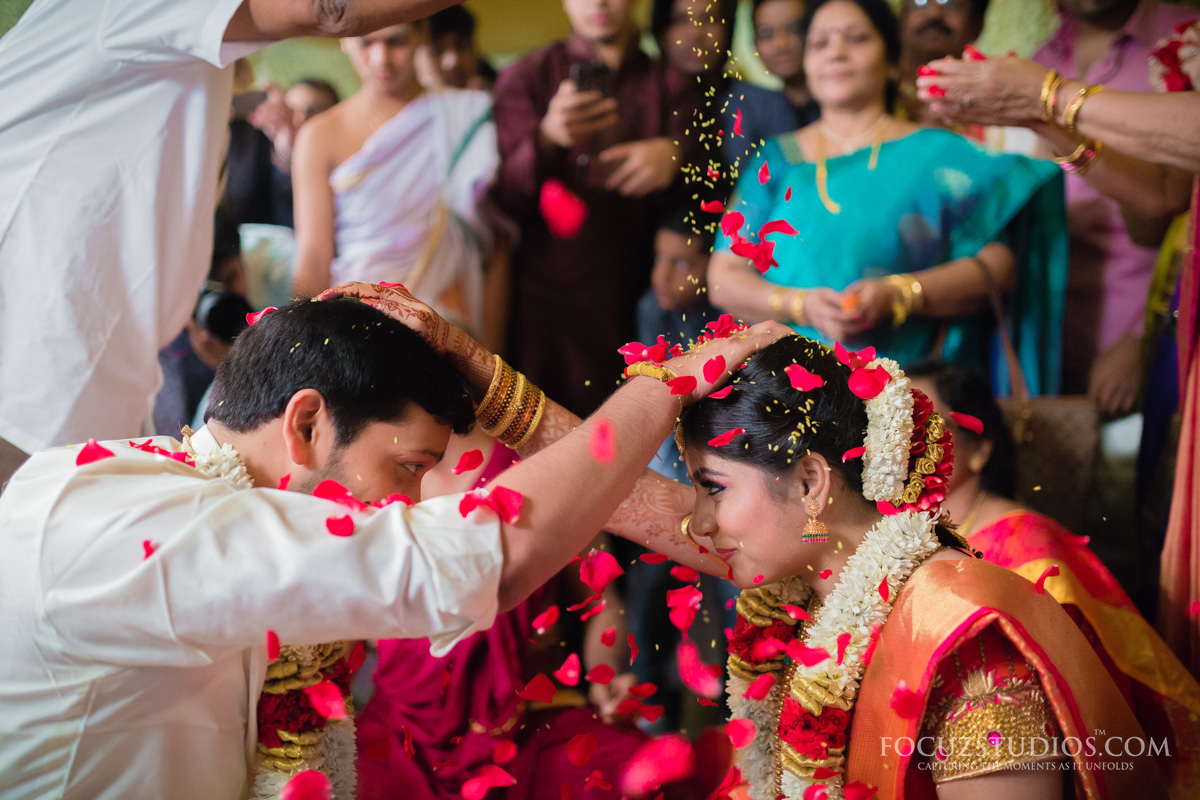
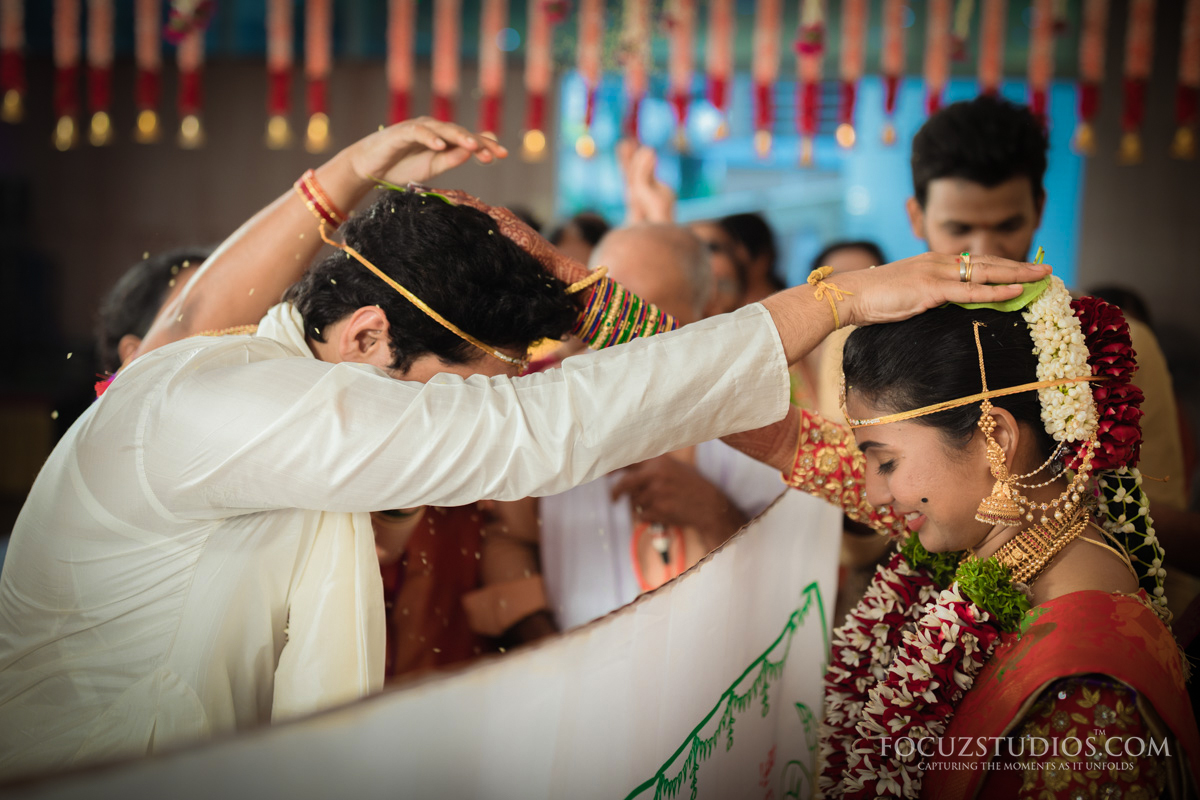
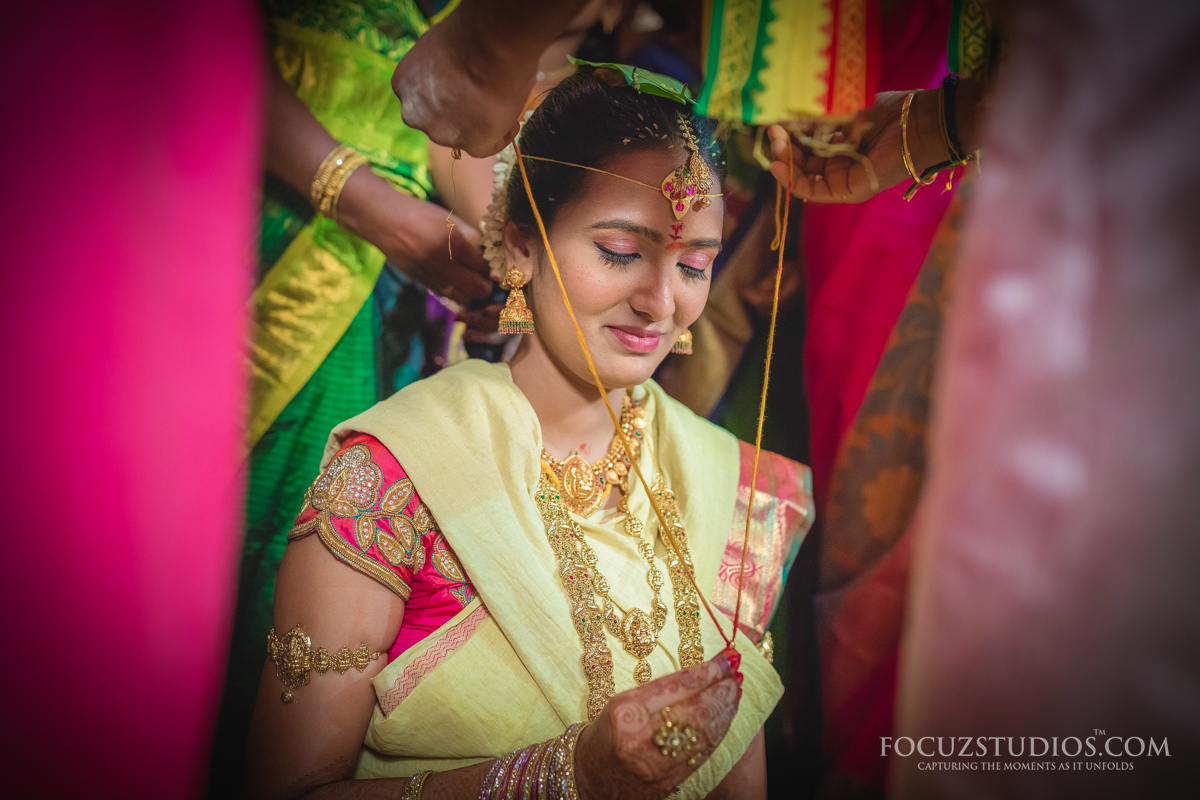
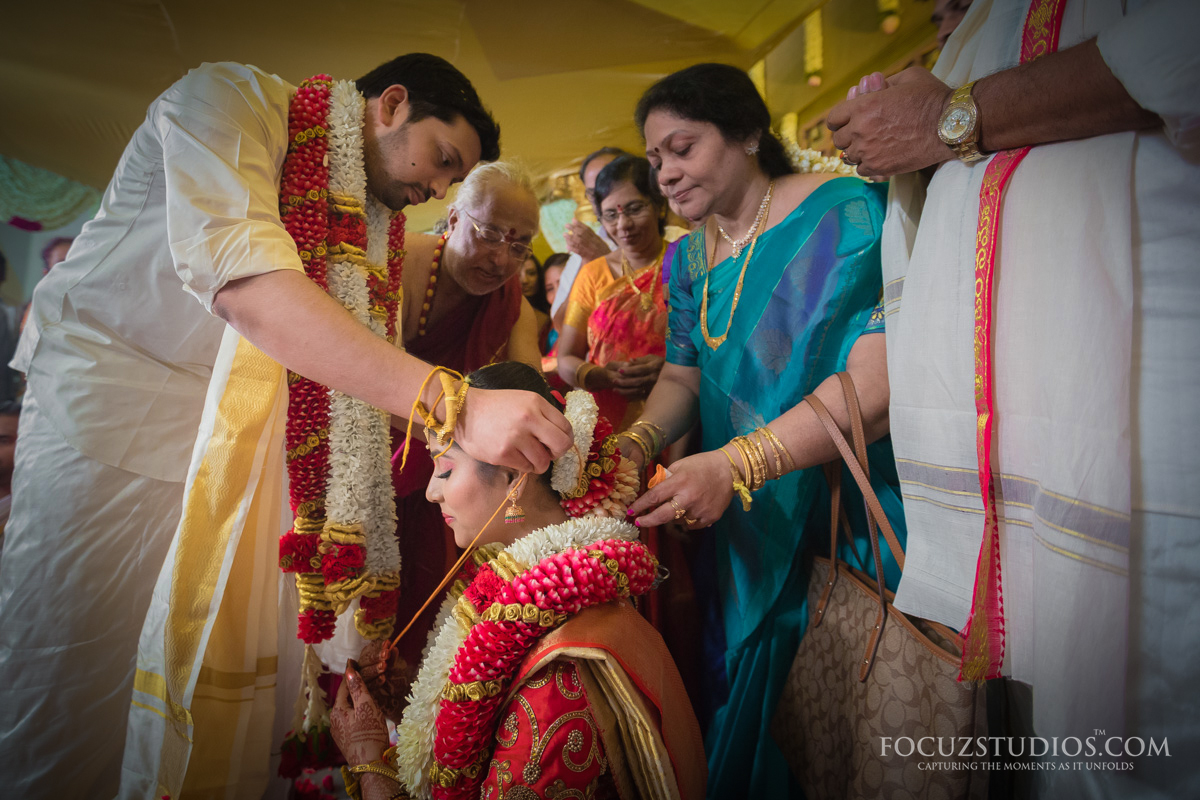
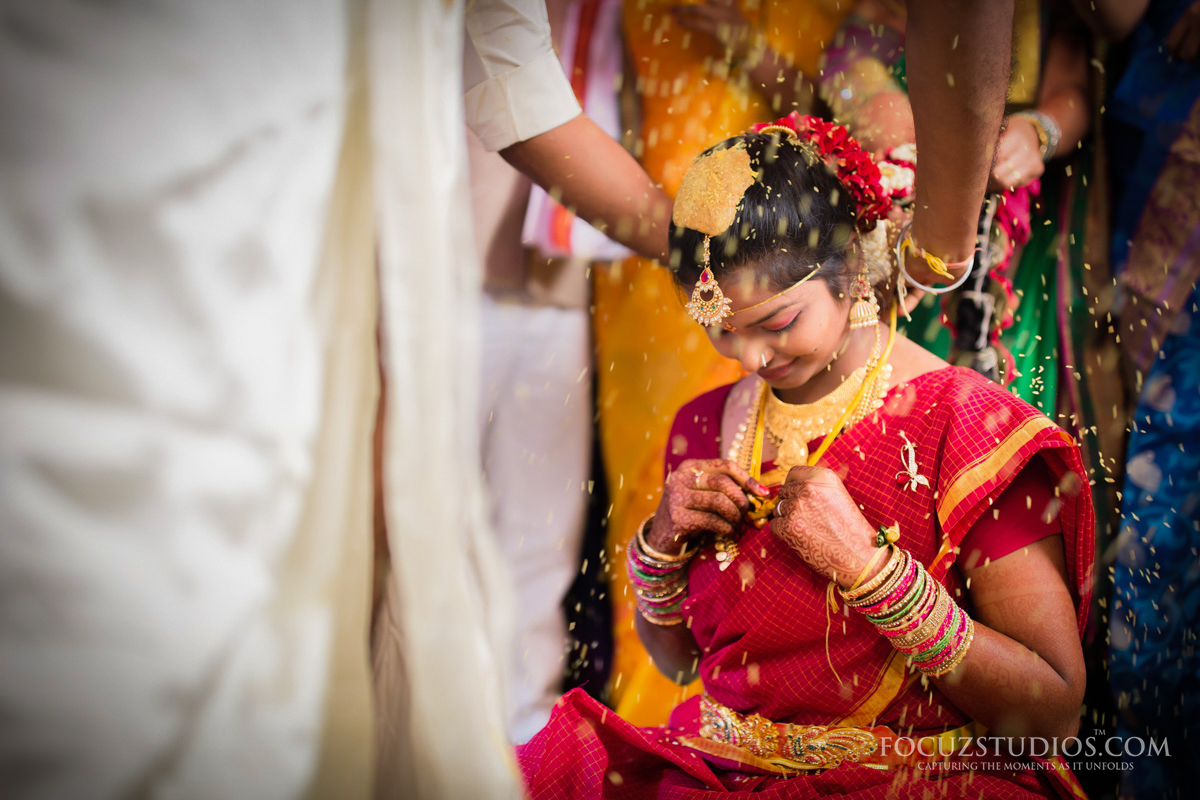
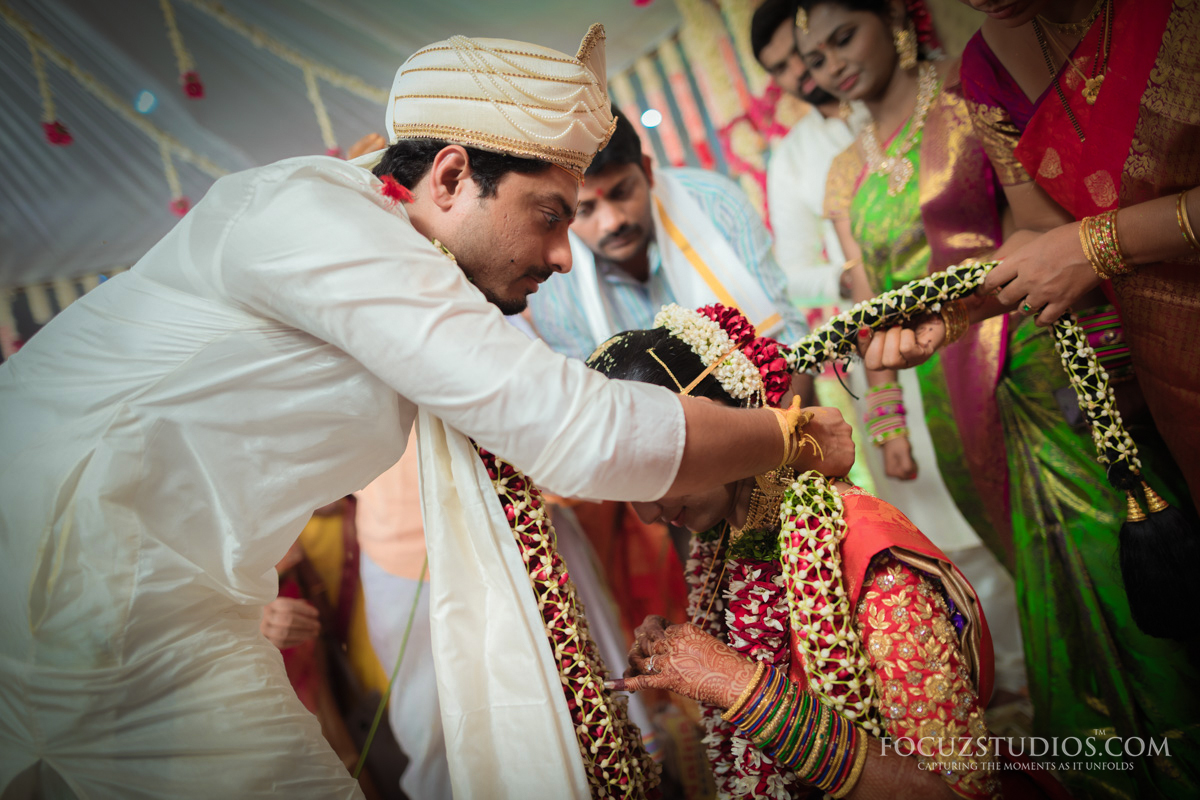
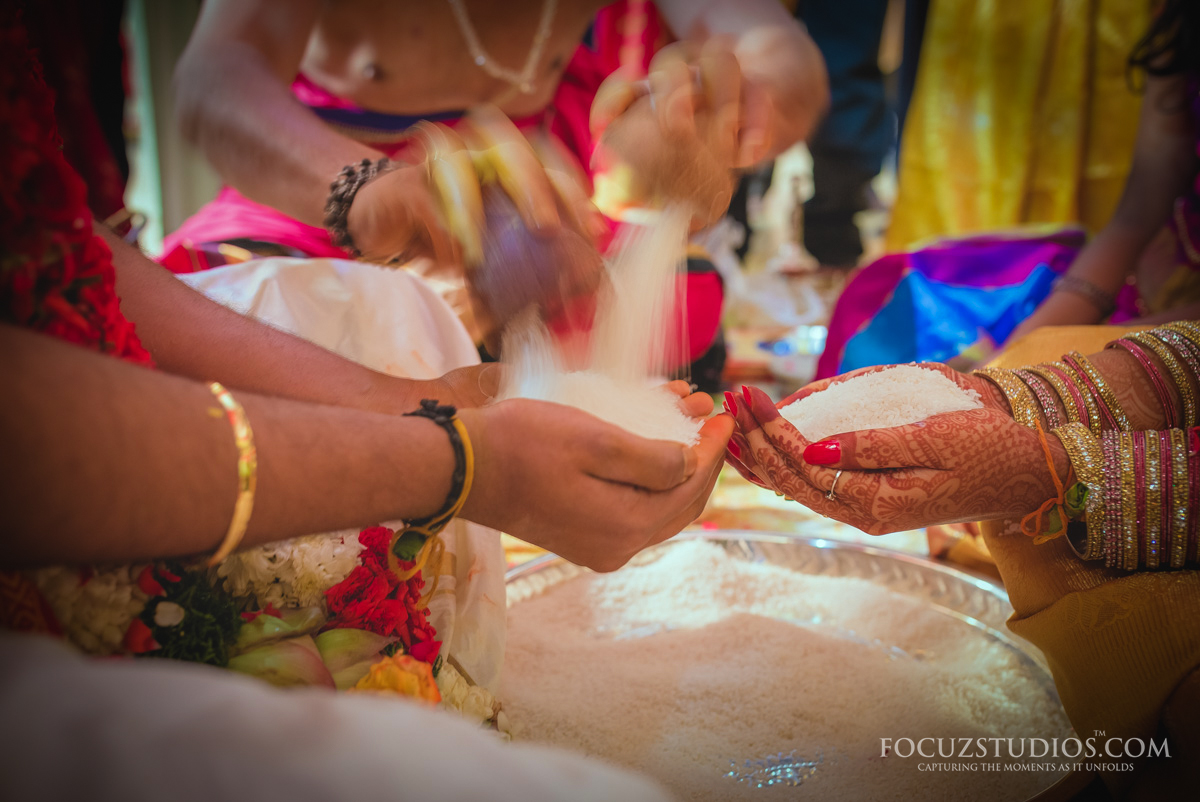

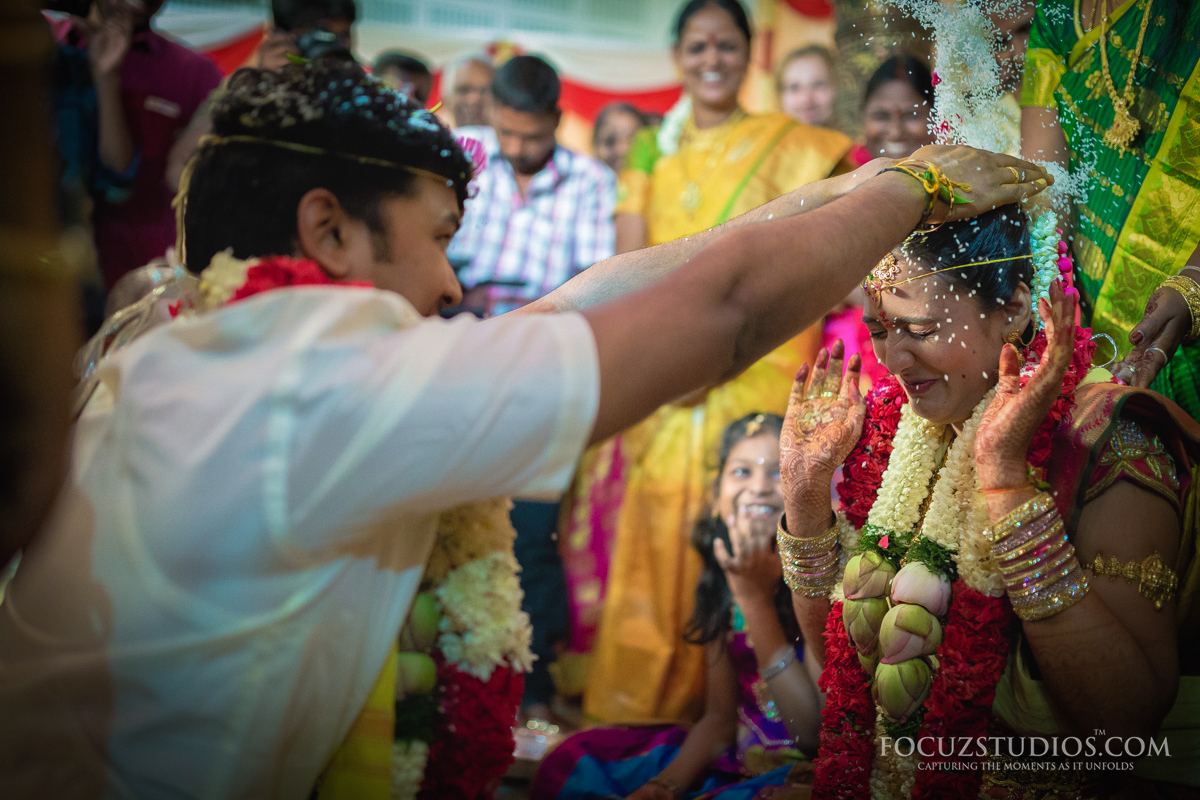
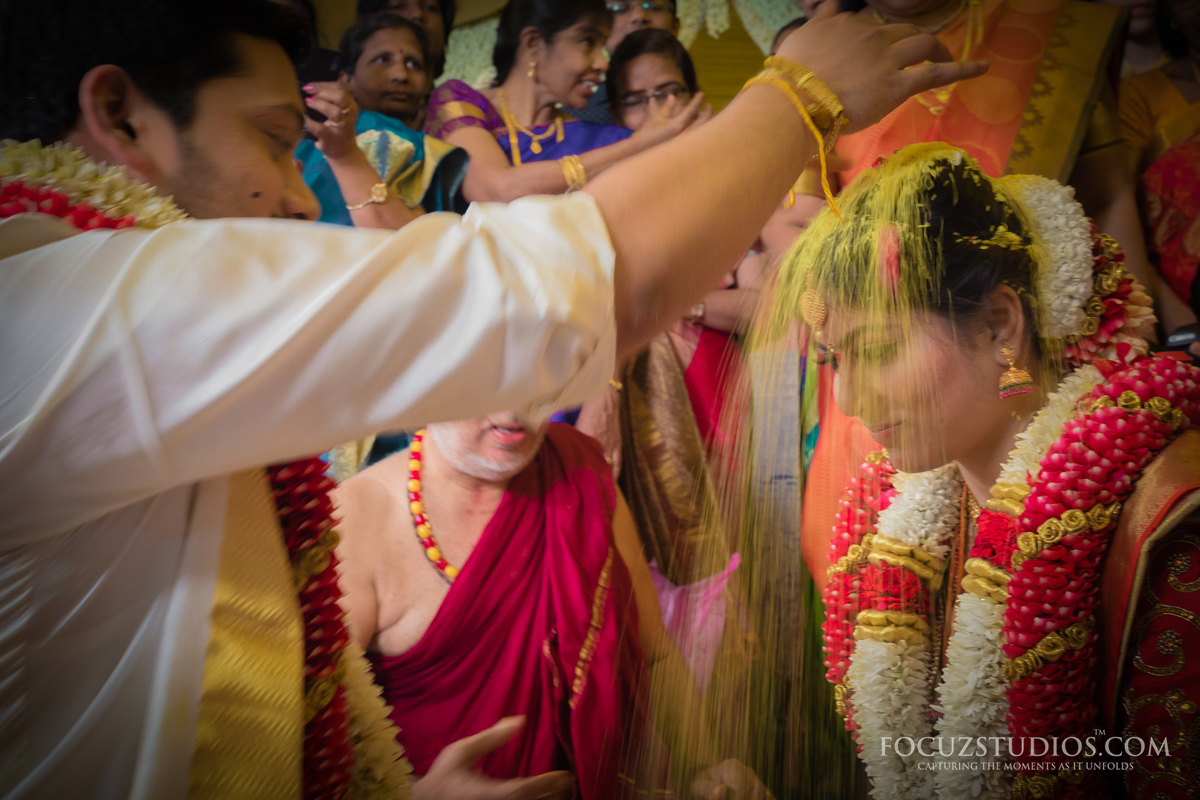
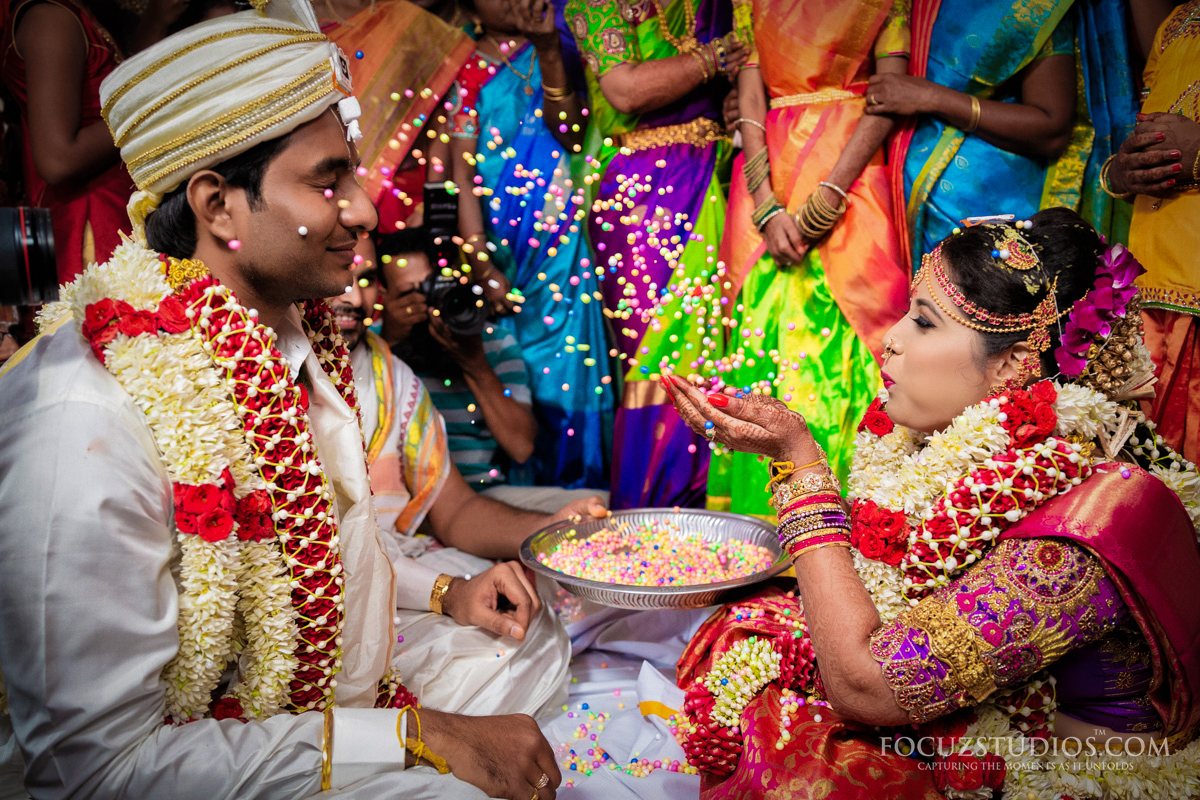
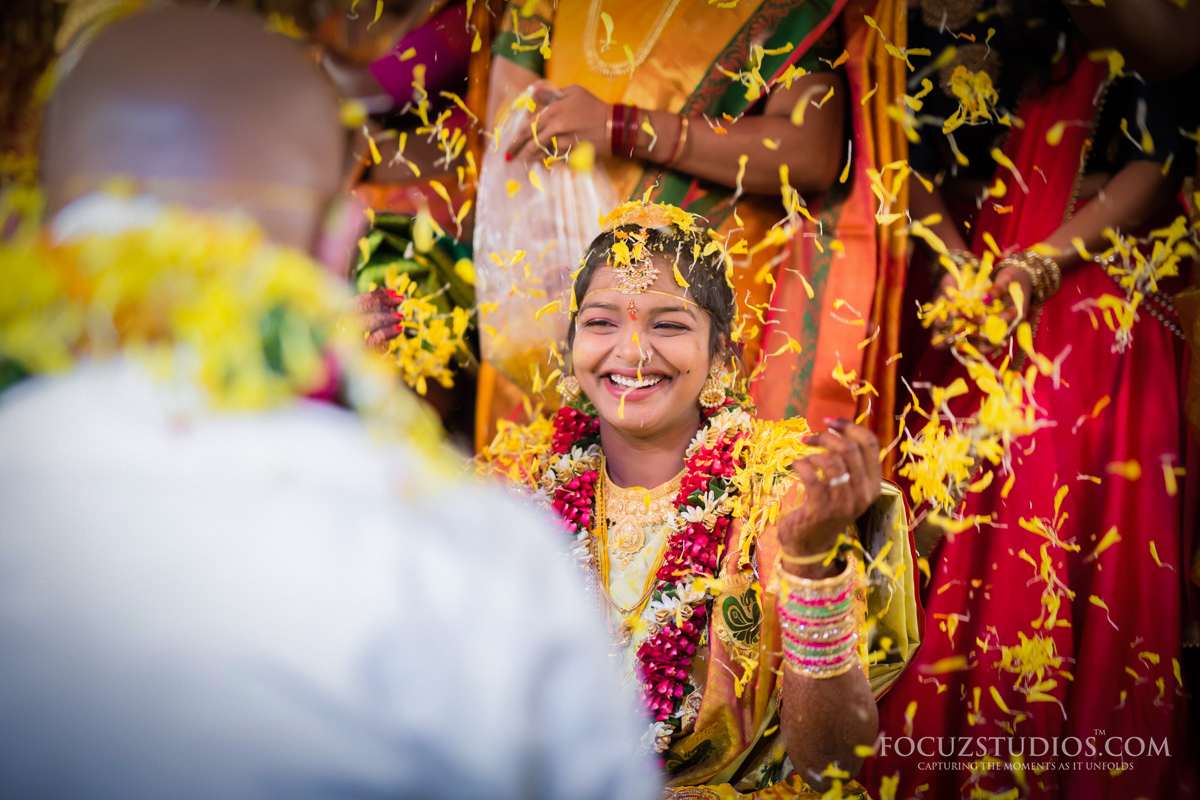
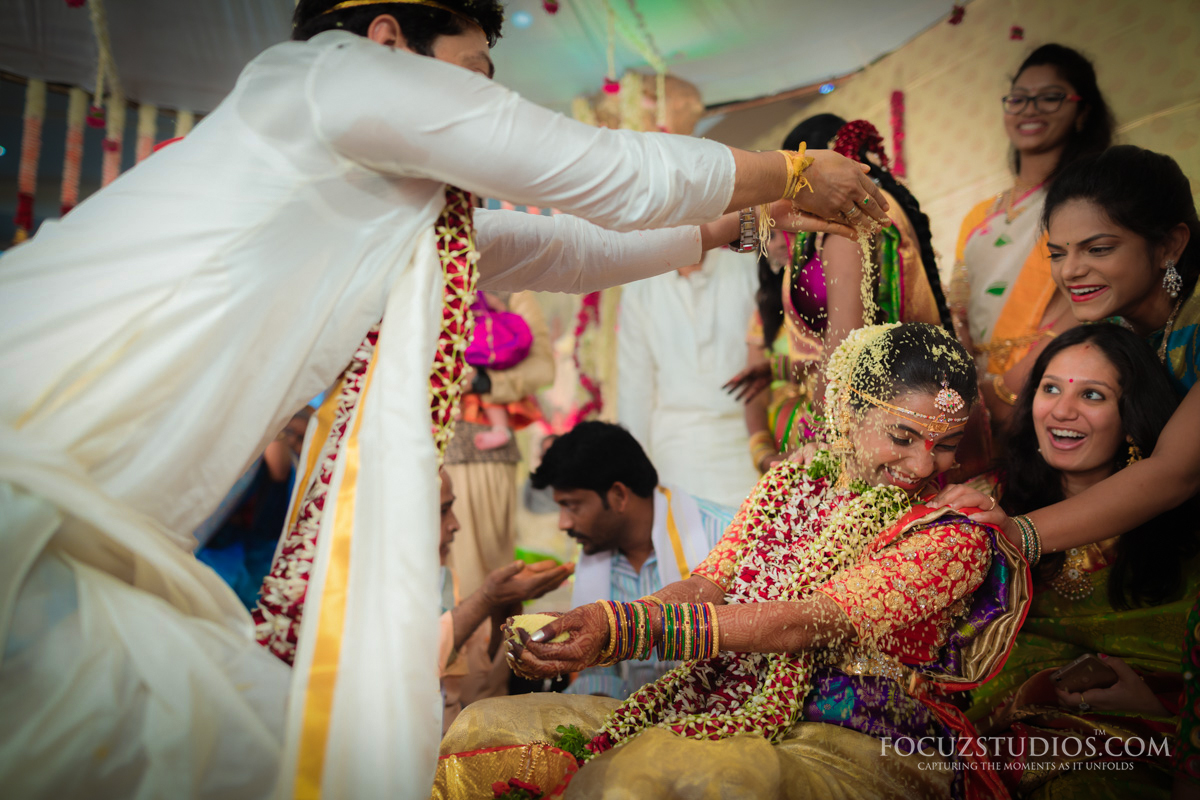
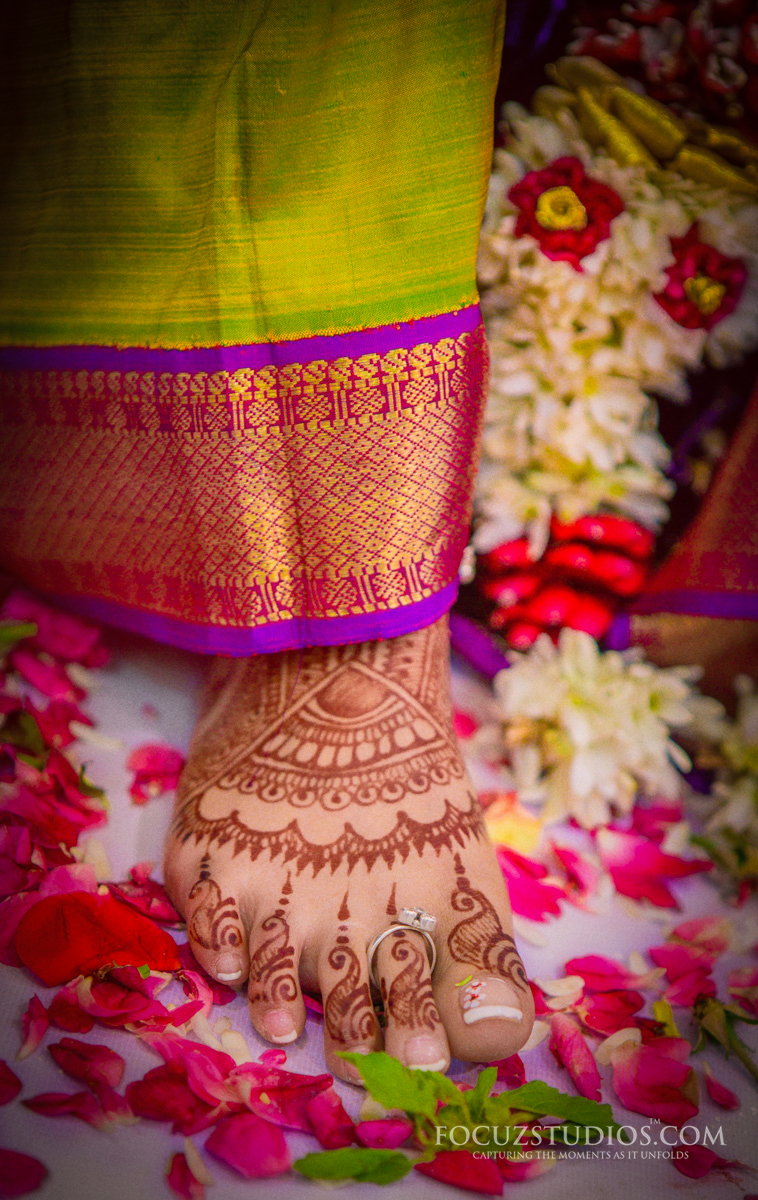
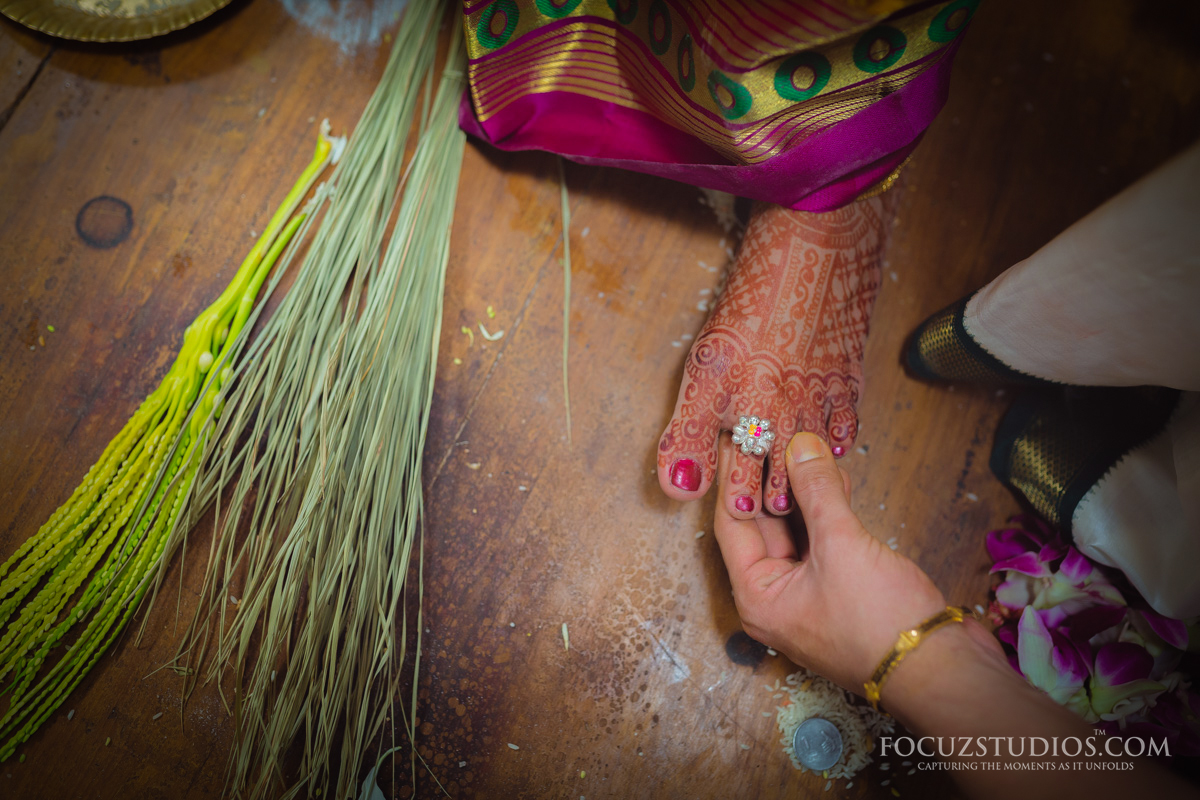

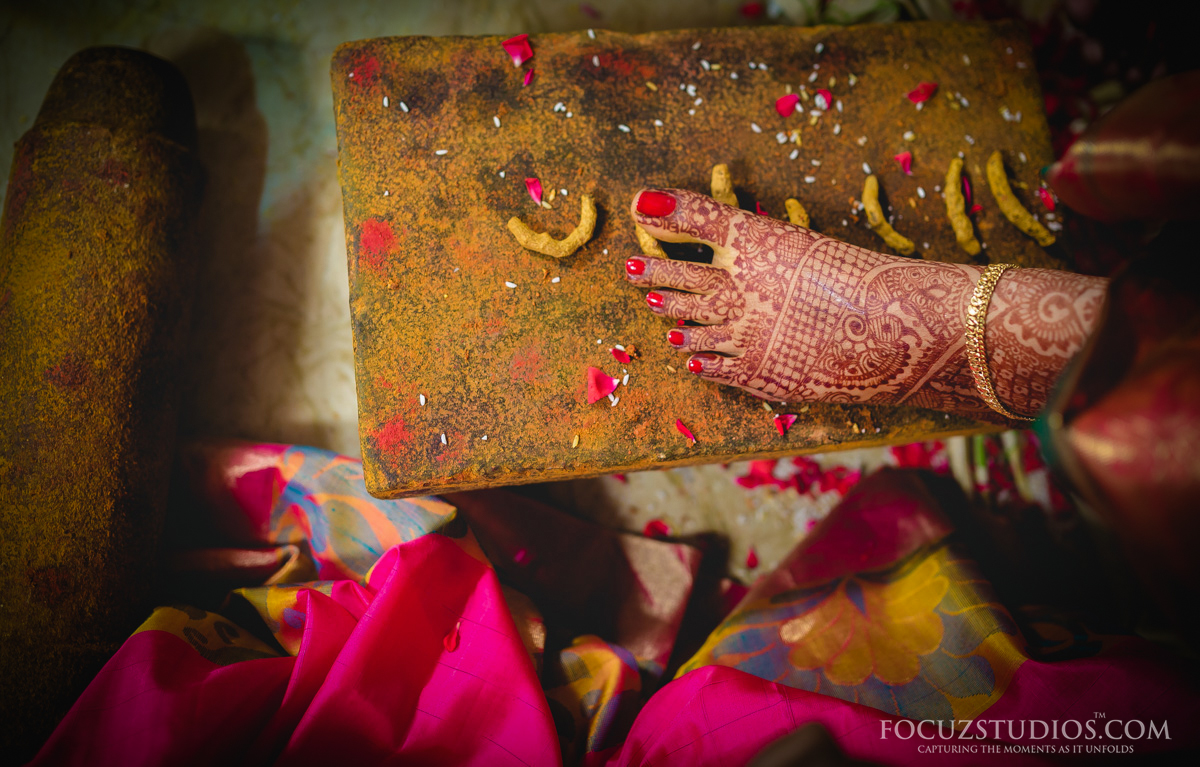
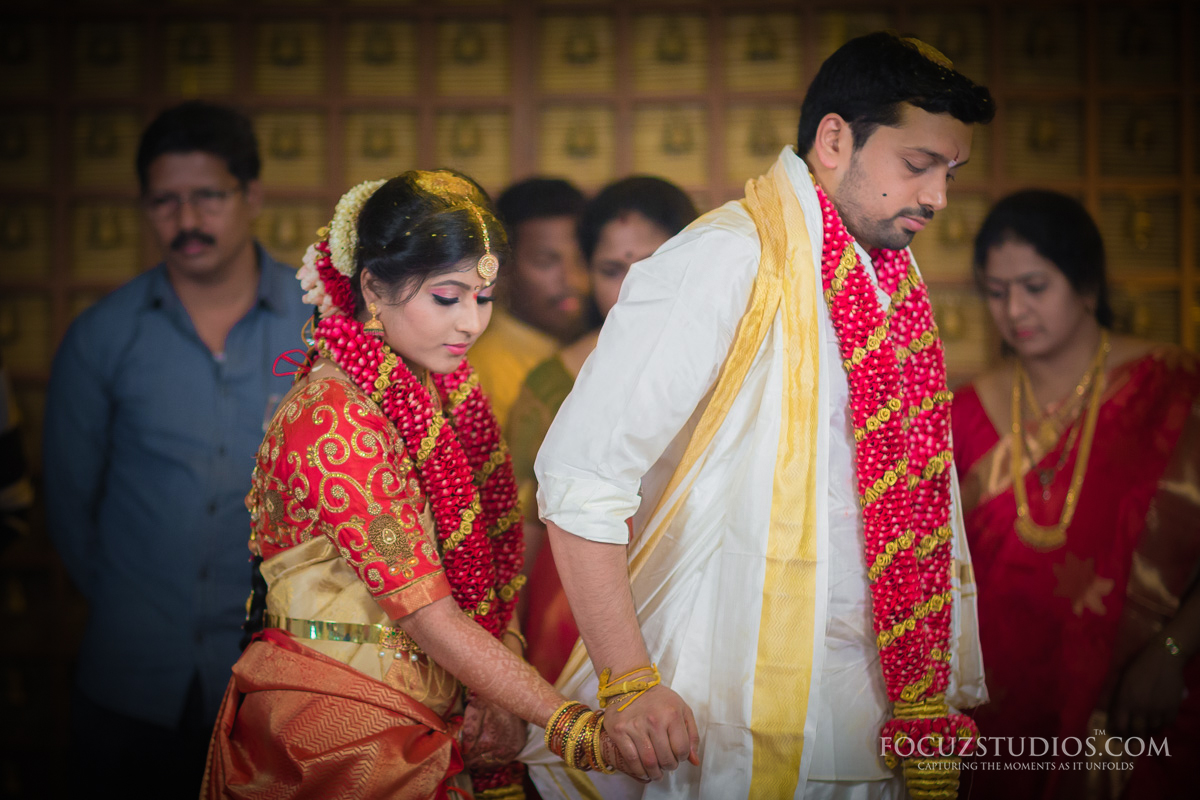
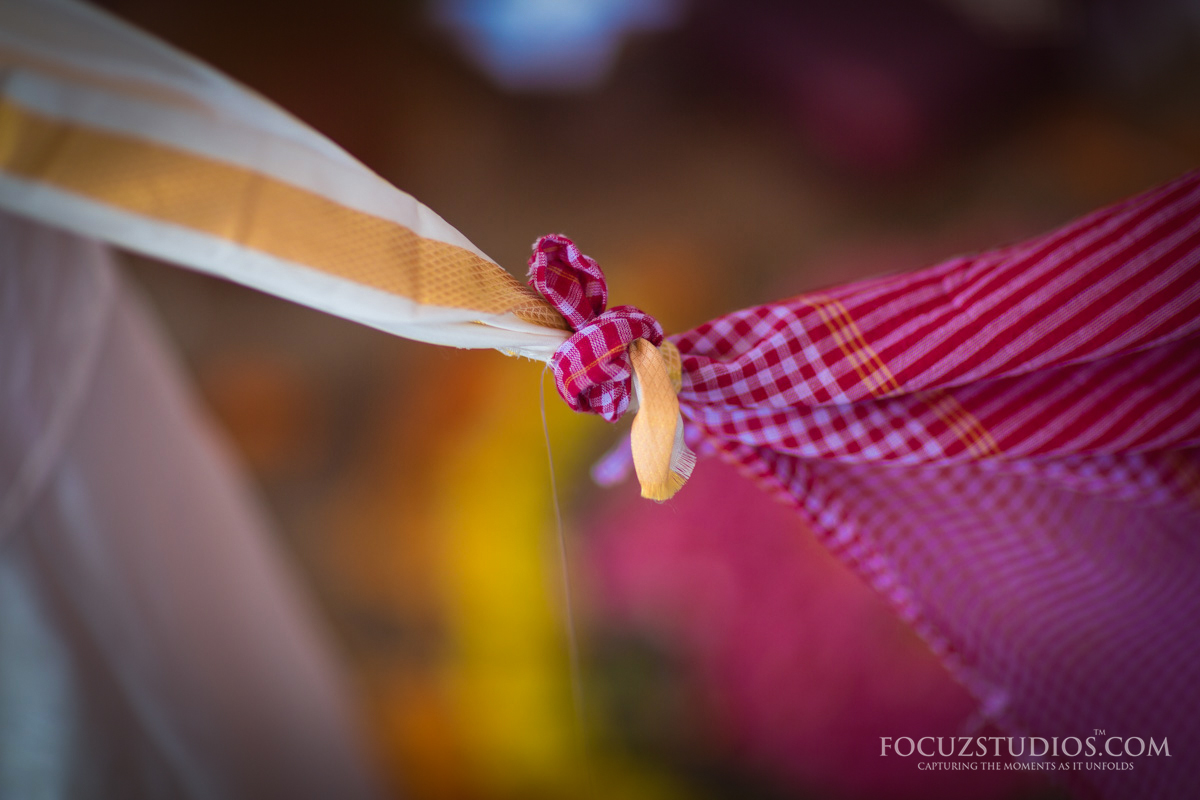
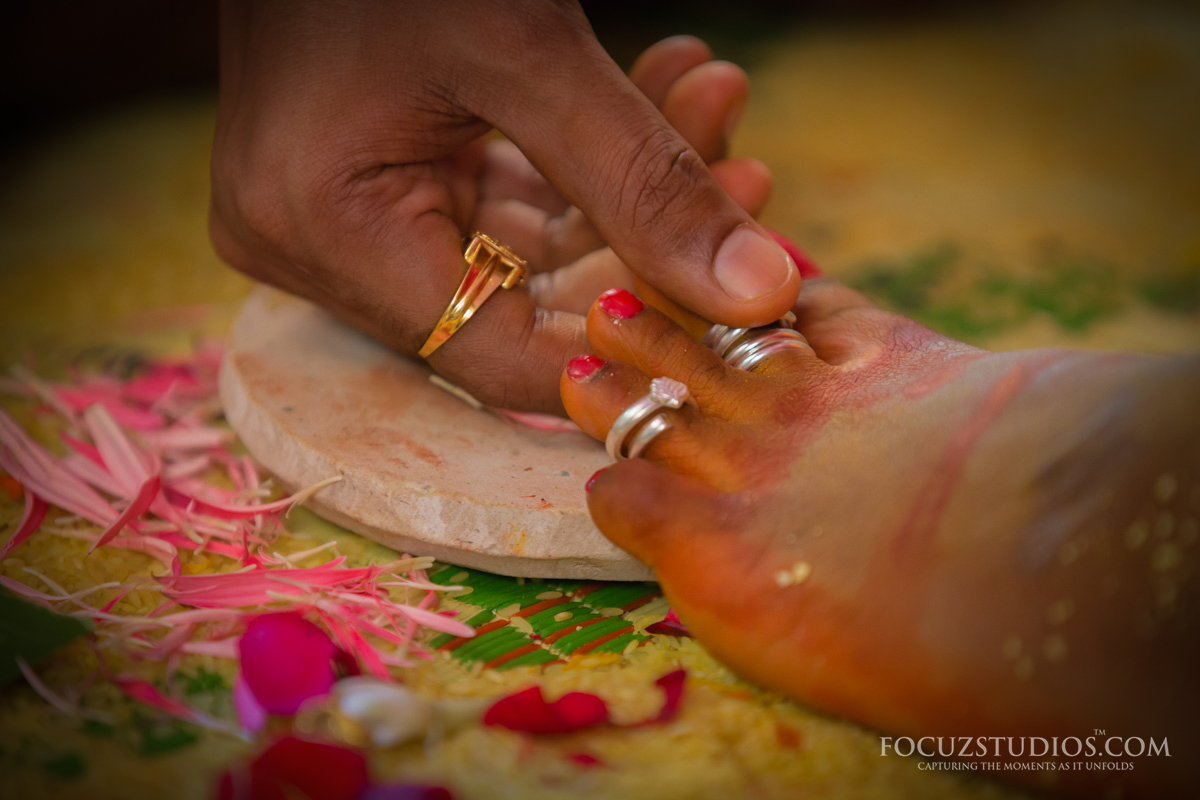
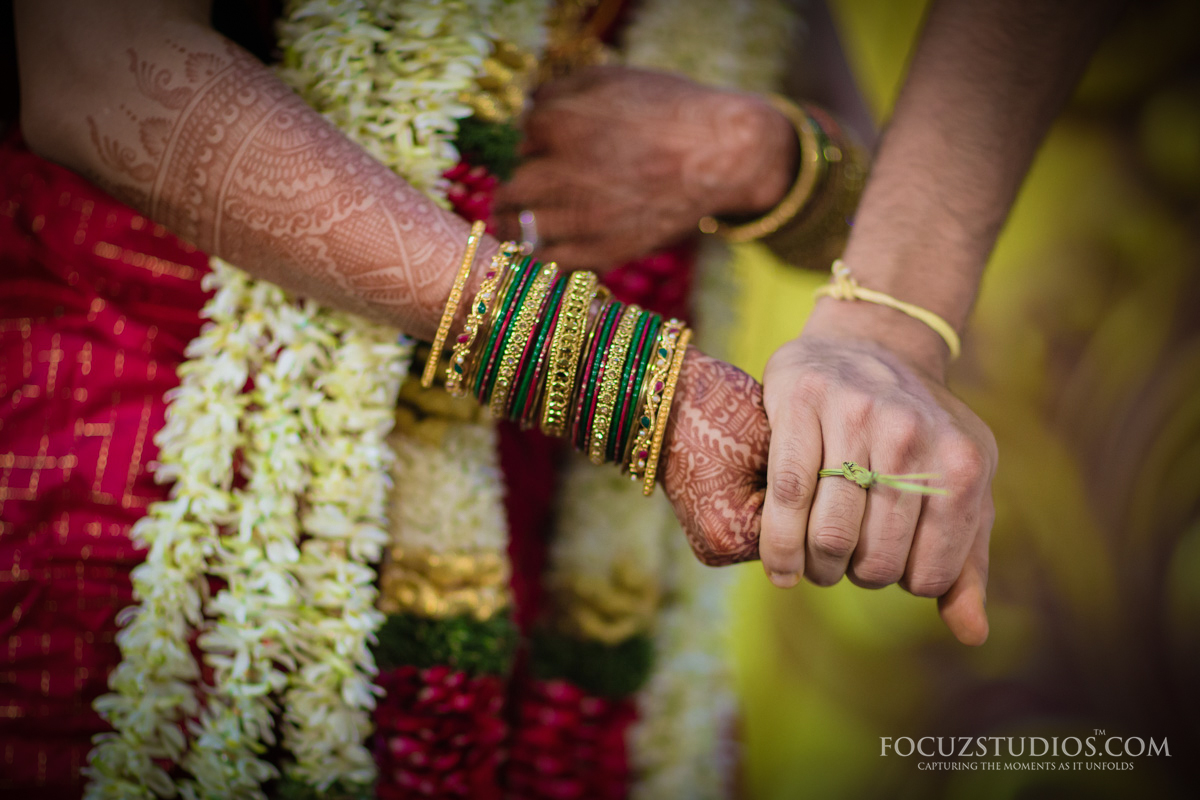
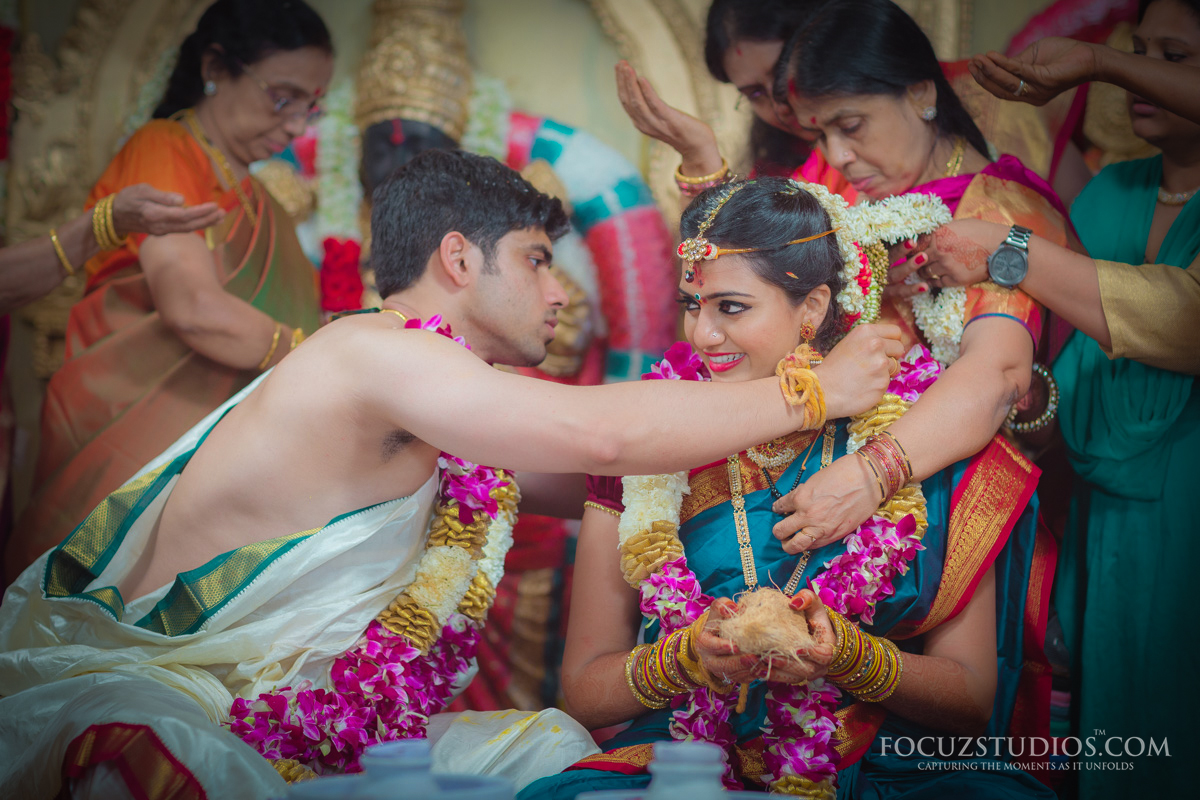
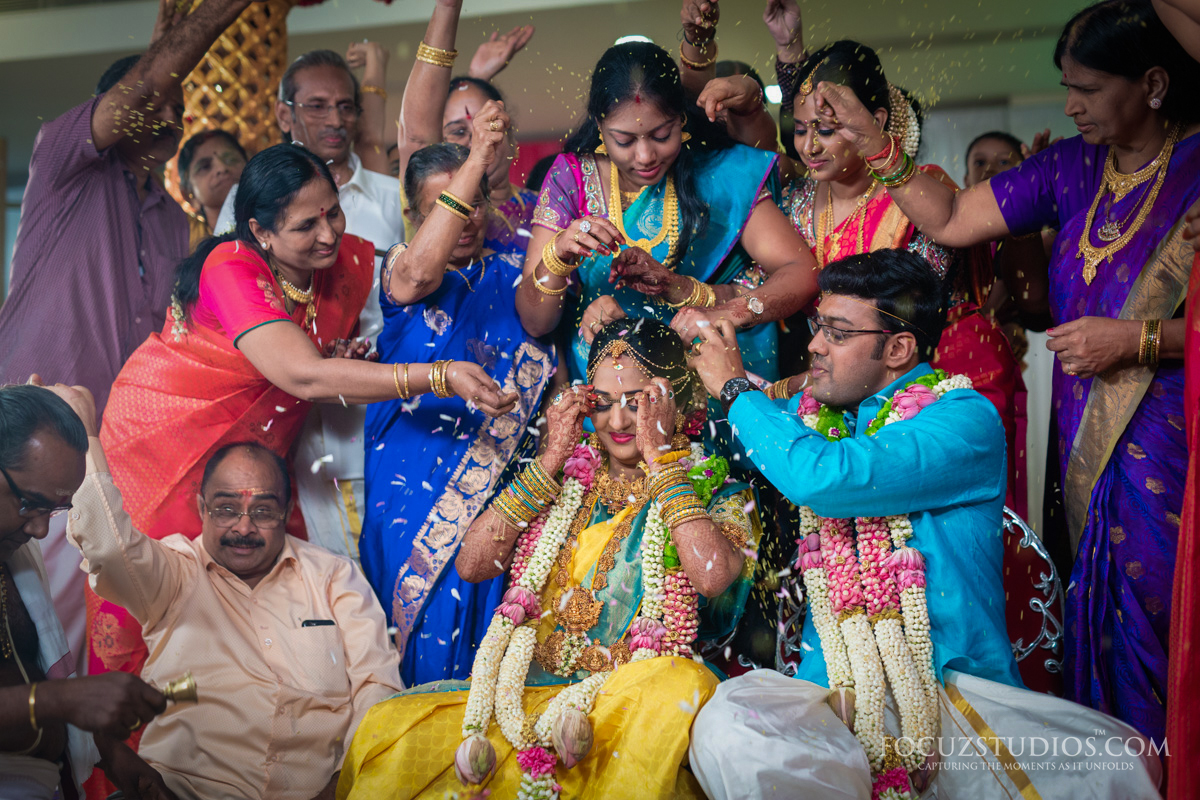
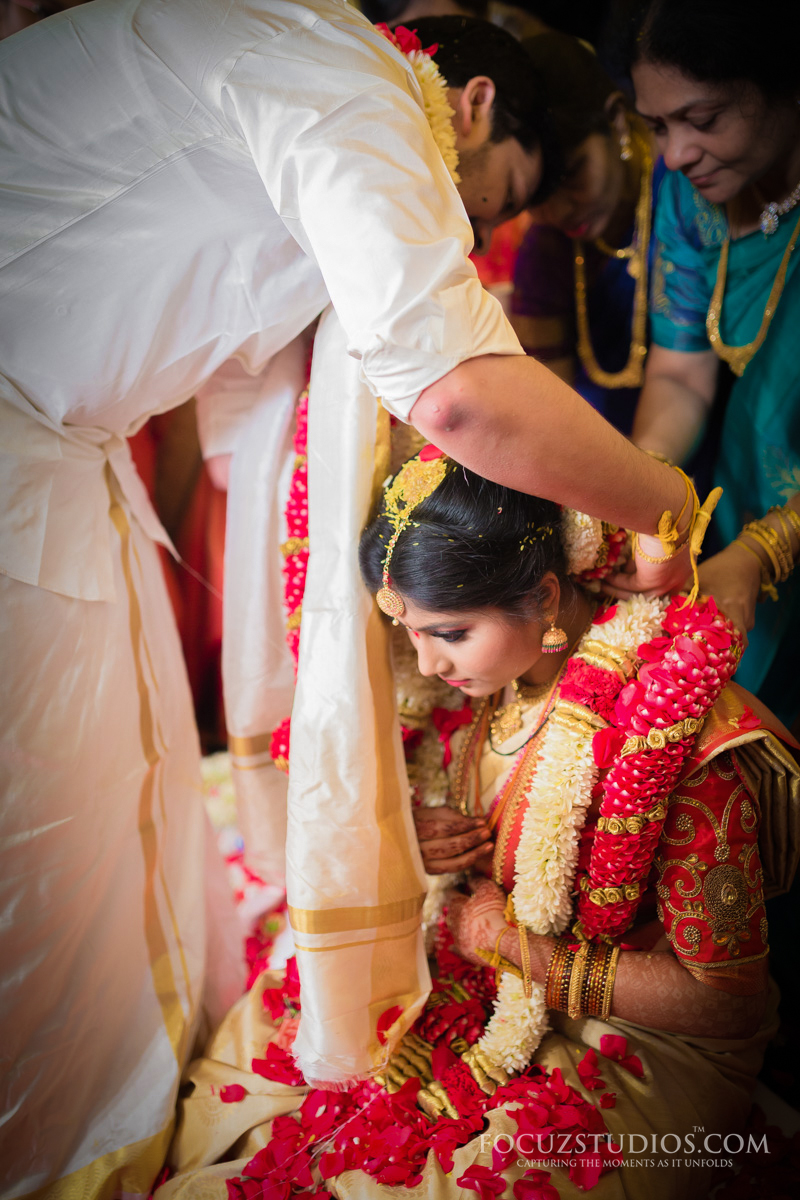
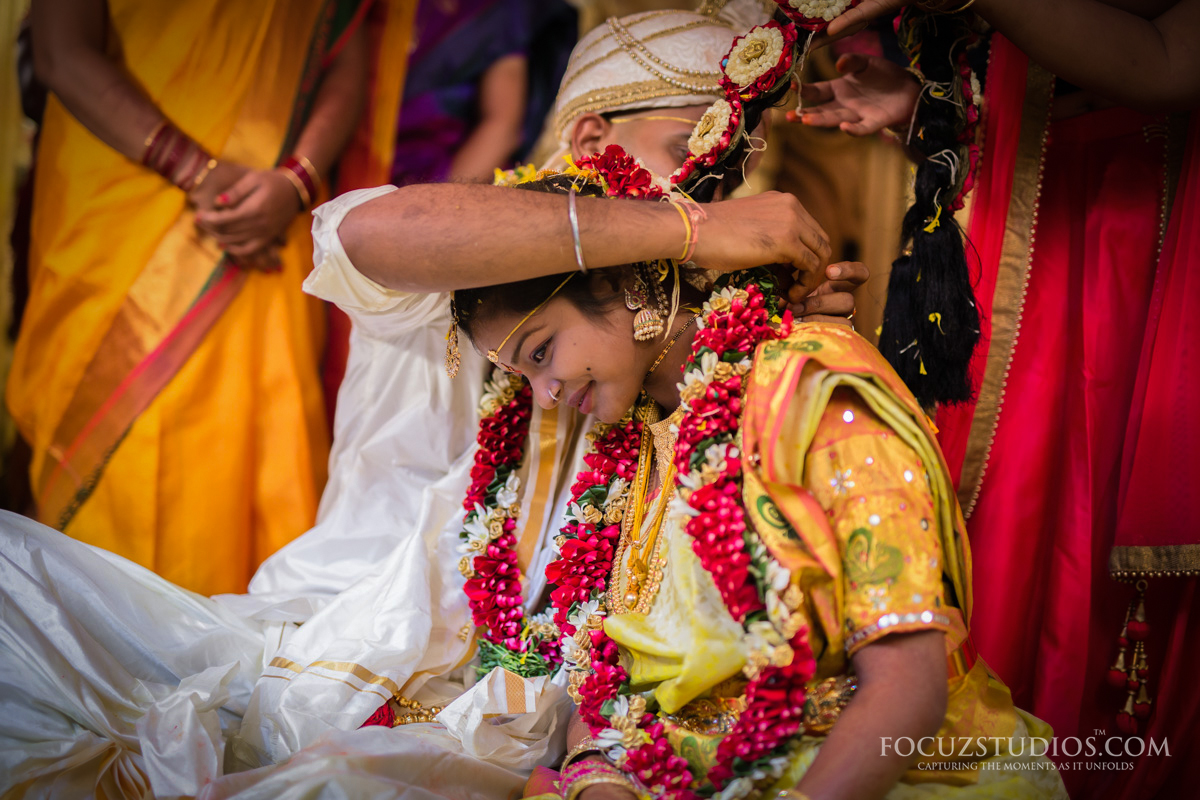
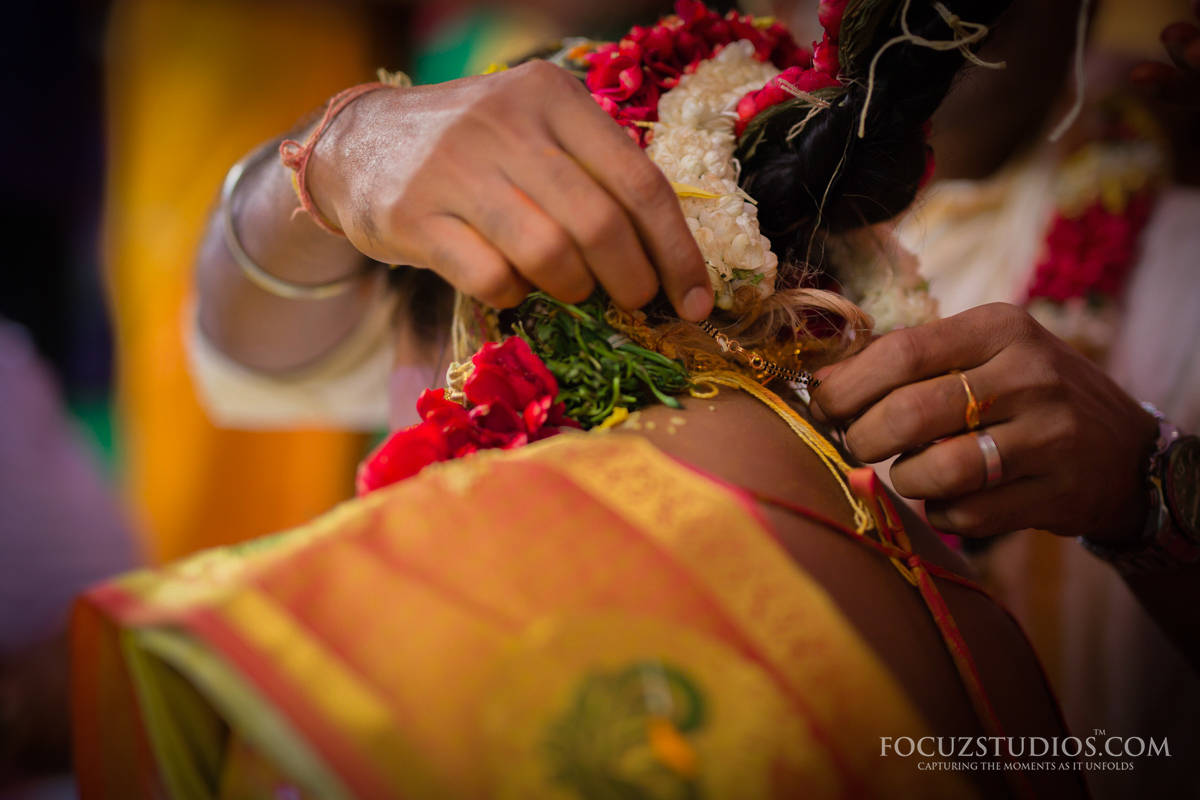
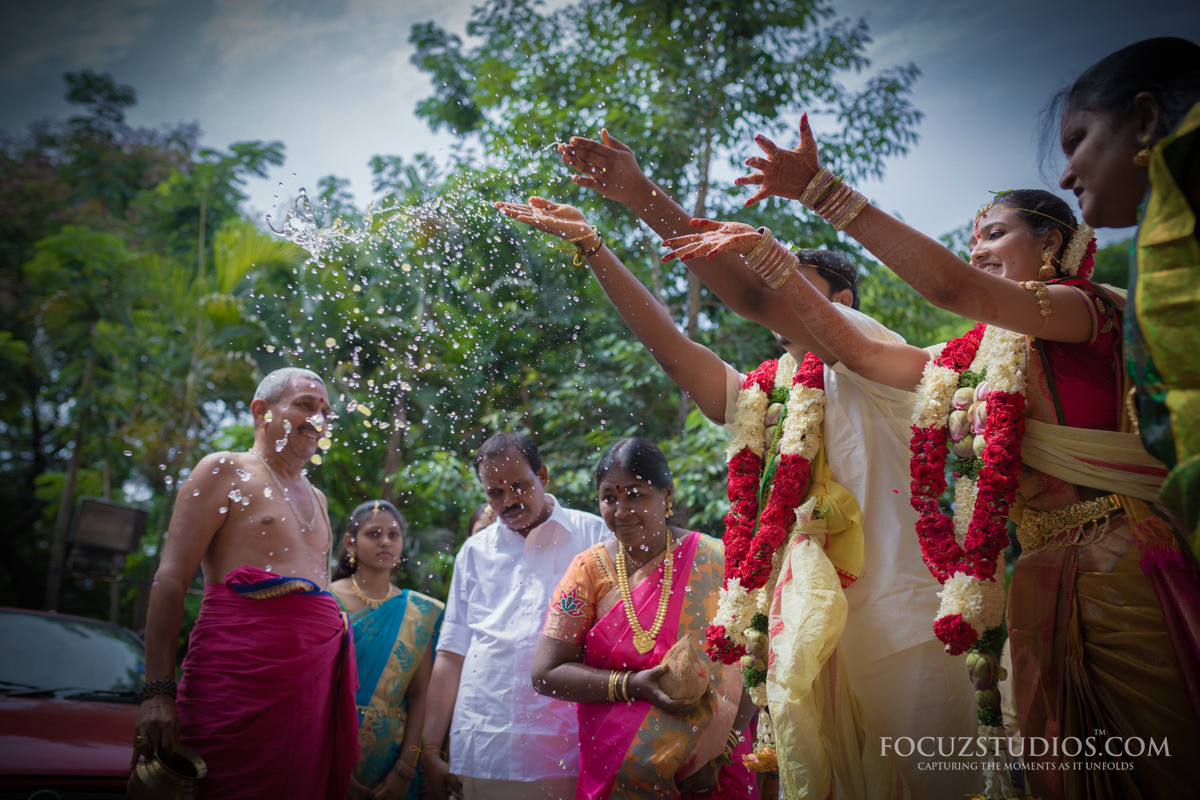
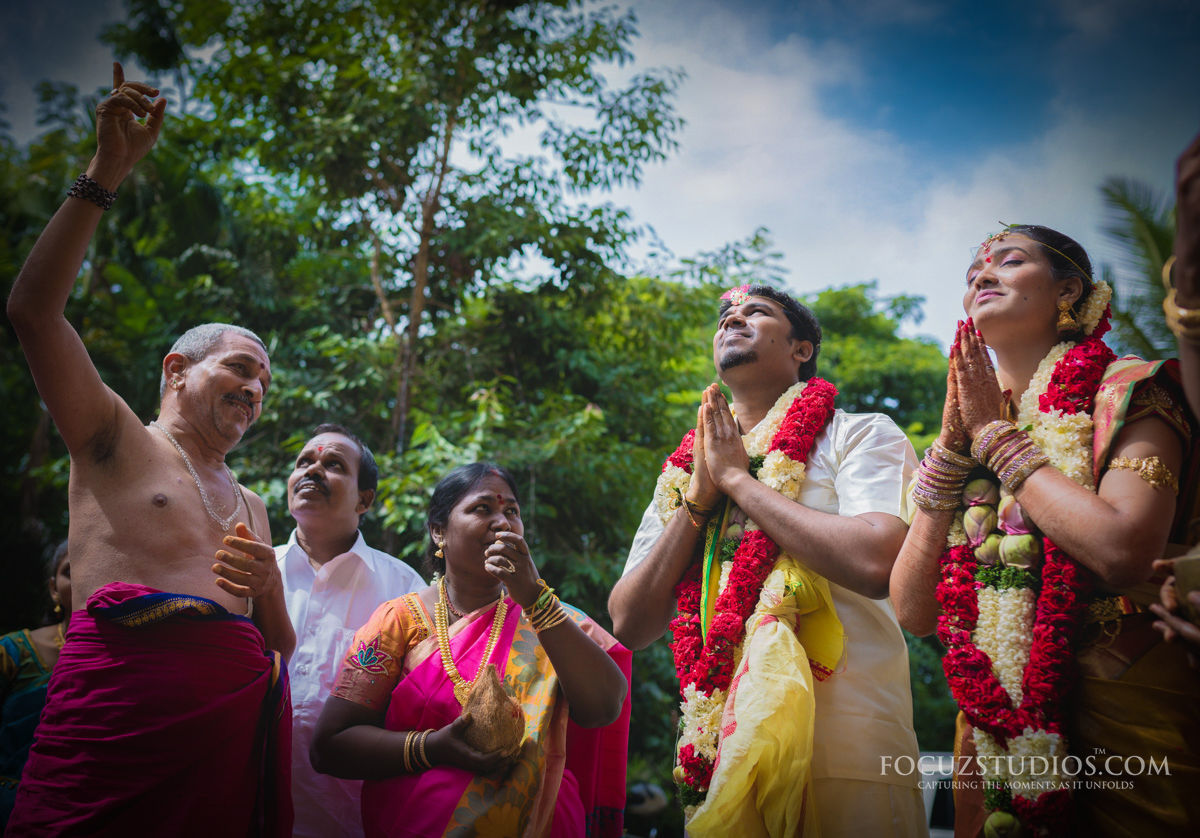
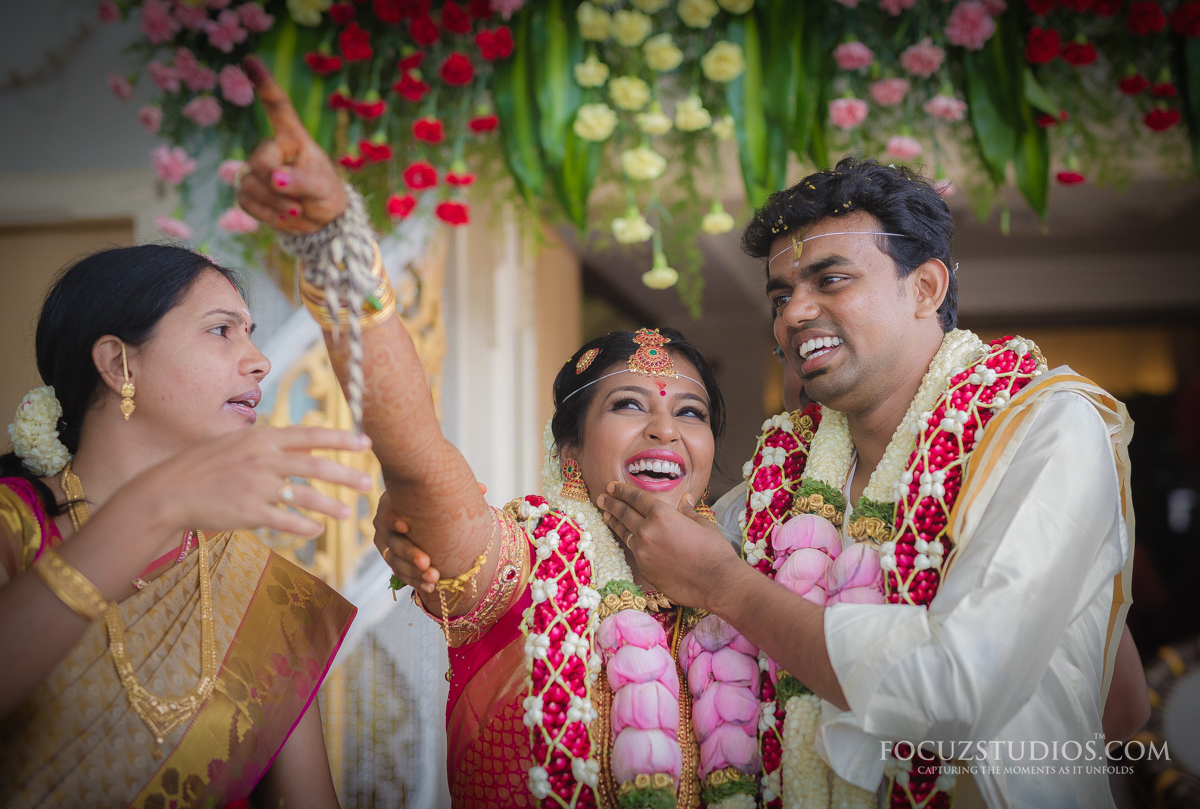
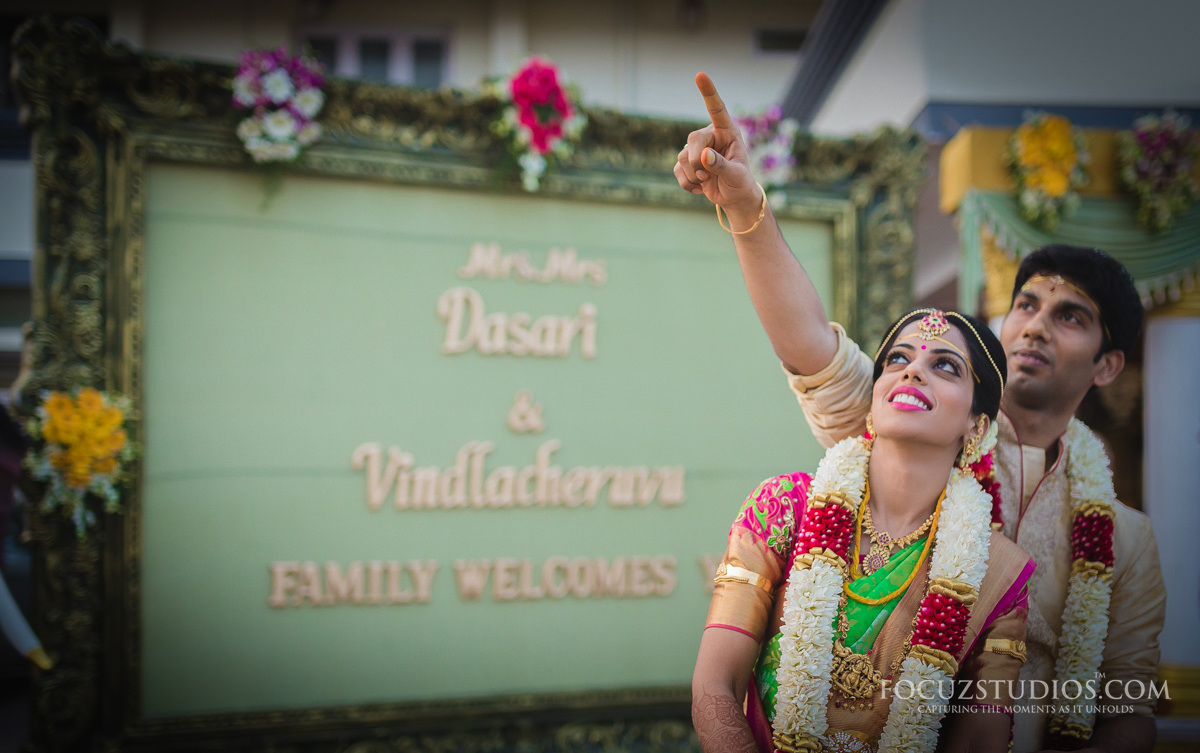
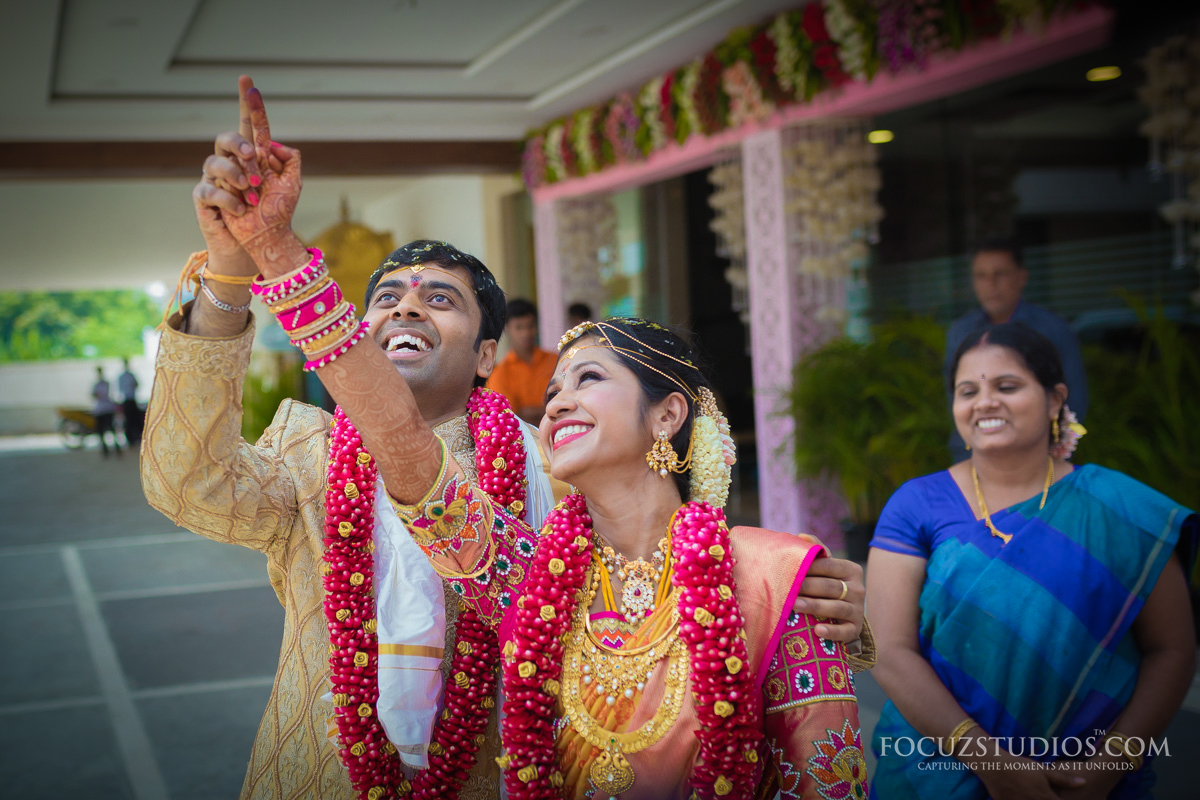
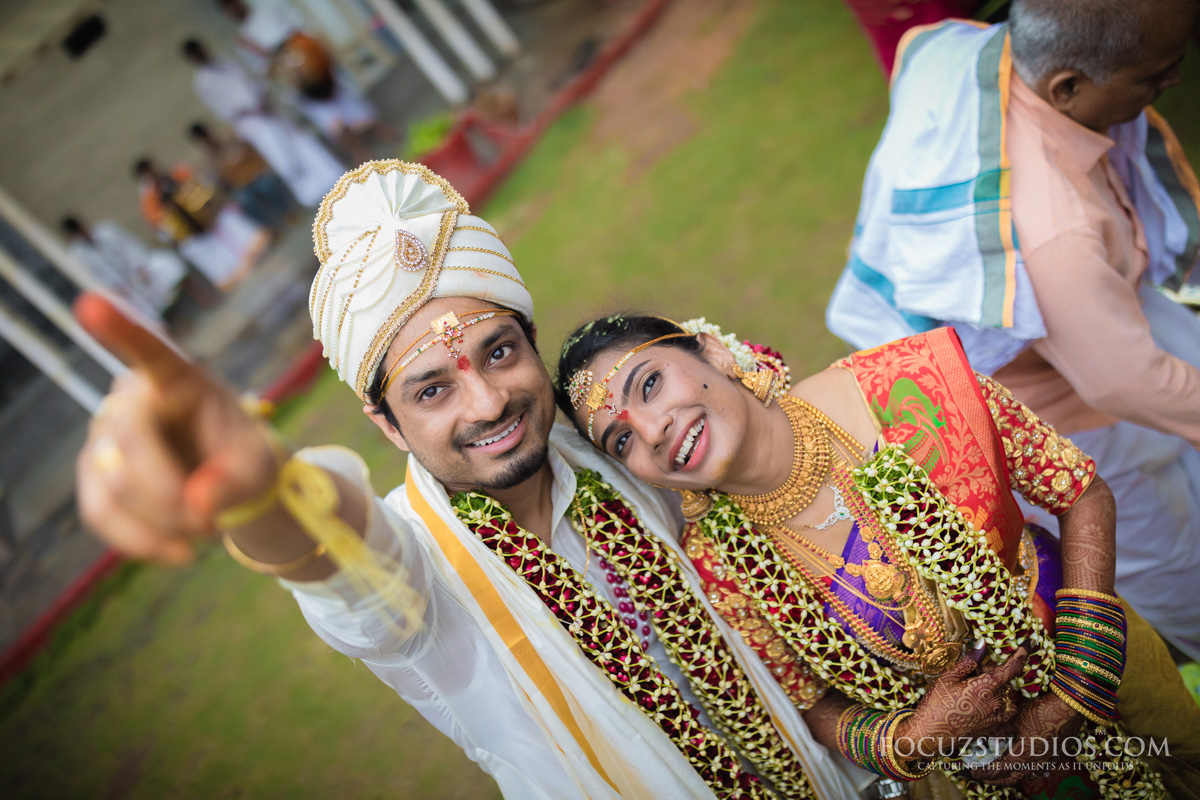


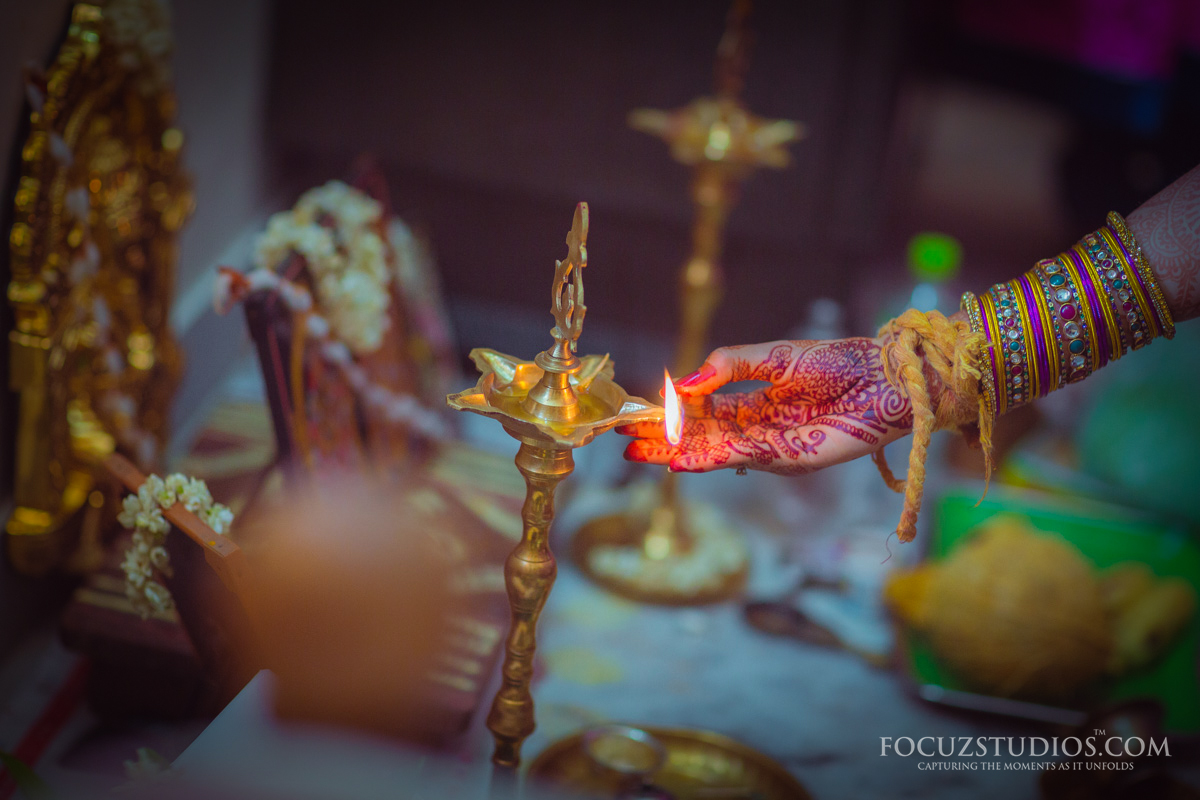
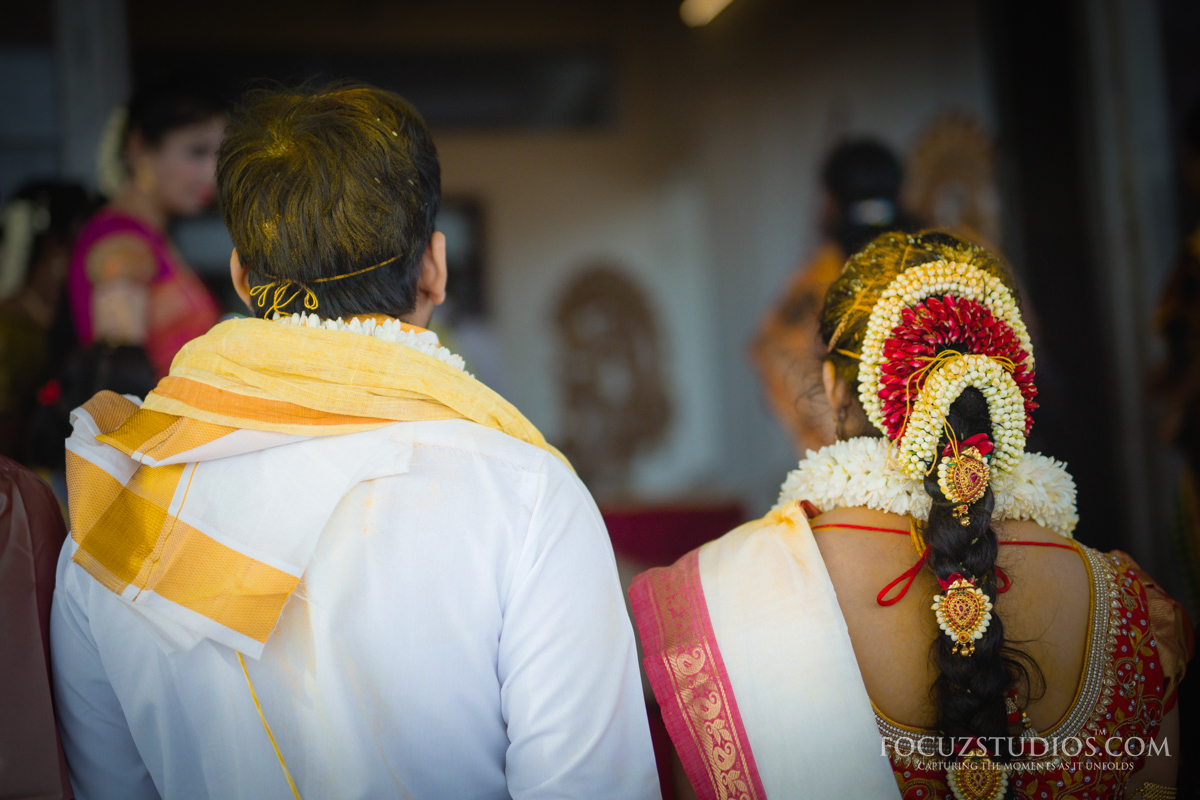
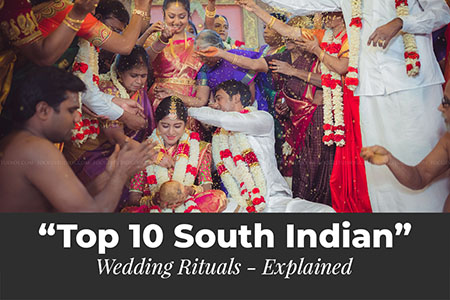


scr888 vip id
Normally I don’t learn article on blogs, but I wish tto say that this write-up
very compelled me to take a look at and do it! Your writing style has been surprised me.
Thanks, very nice post.